Rasoham’s Kutty Kutchery Festival: Kattaikoothu / Therukoothu – Traditional Tamil Folk Dance Performance by Thilagavathi Palani – the First female Kattaikoothu Artiste at Medai, Chennai / Exploring the History, Elements, and Costumes of Kattaikoothu / Therukoothu (Updated)
– a dance form with a captivating blend of drama, music, & dance
| CasualWalker’s Rating for Rasoham’s Kutty Kutchery Festival – Kattaikoothu / Therukoothu Performance : | |

9.8 – Superb Awesome
|
The Kutty Kutchery Festival, a celebration of classical, folk, and theatre arts, is curated by Shri Laasya Narasimhachari, the Founder and Creative Director of Rasoham and the esteemed disciple of renowned dance gurus Shri Narasimhachari and Shri Vasanthalakshmi, wh0 brings a wealth of artistic heritage to her role, guiding Rasoham in its mission to celebrate and preserve the diverse traditions of classical and folk arts.
Rasoham’s Kutty Kutchery Festival
This vibrant Kutty Kutchery Festival unfolds across various venues in Chennai, featuring diverse genres of traditional art forms presented by well-known artists. At Medai, Chennai, the festival showcased a mesmerizing performance of Kattaikkoothu/Therukoothu, a traditional Tamil folk dance form, led by Shri Thilagavathi Palani and her troupe. This captivating rendition unfolded over two hours, delving into a small yet powerful segment of the epic Mahabharata.
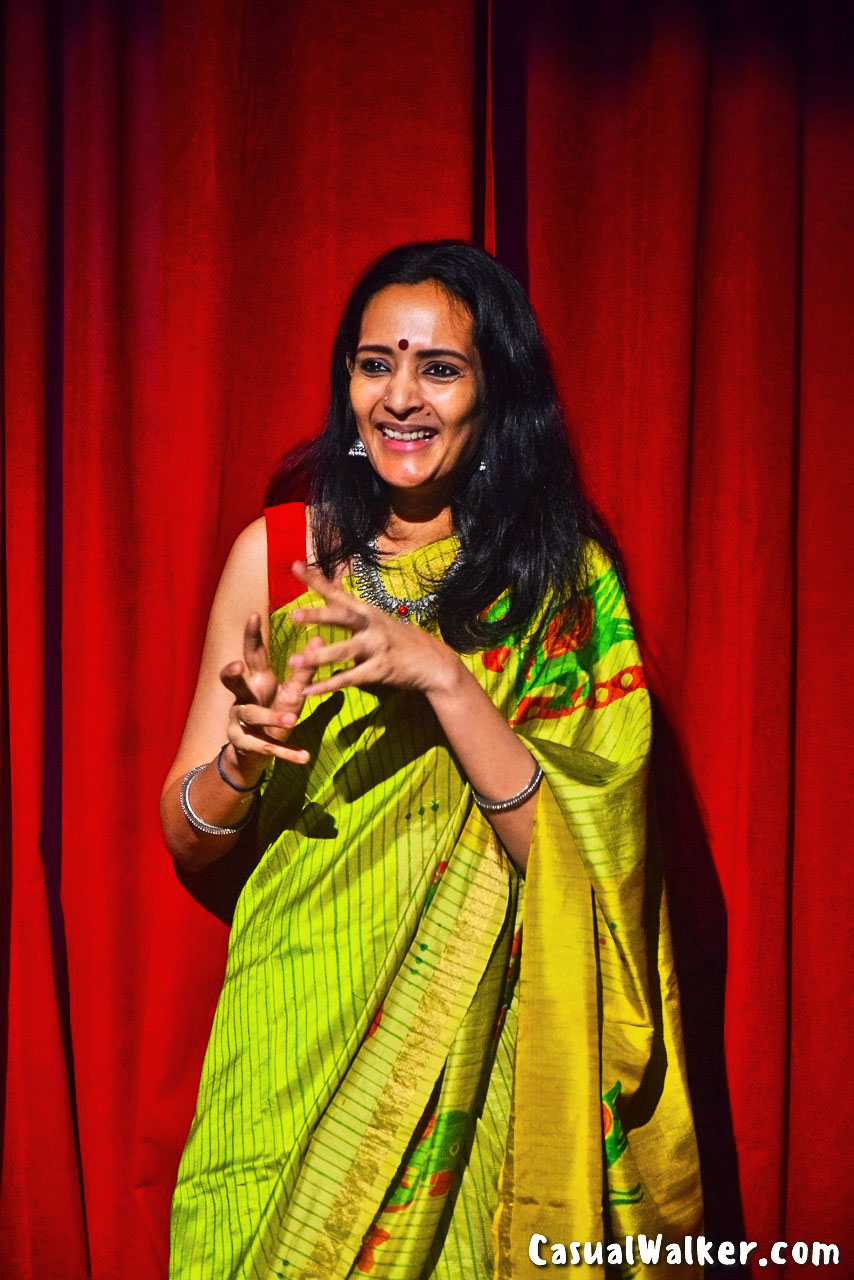
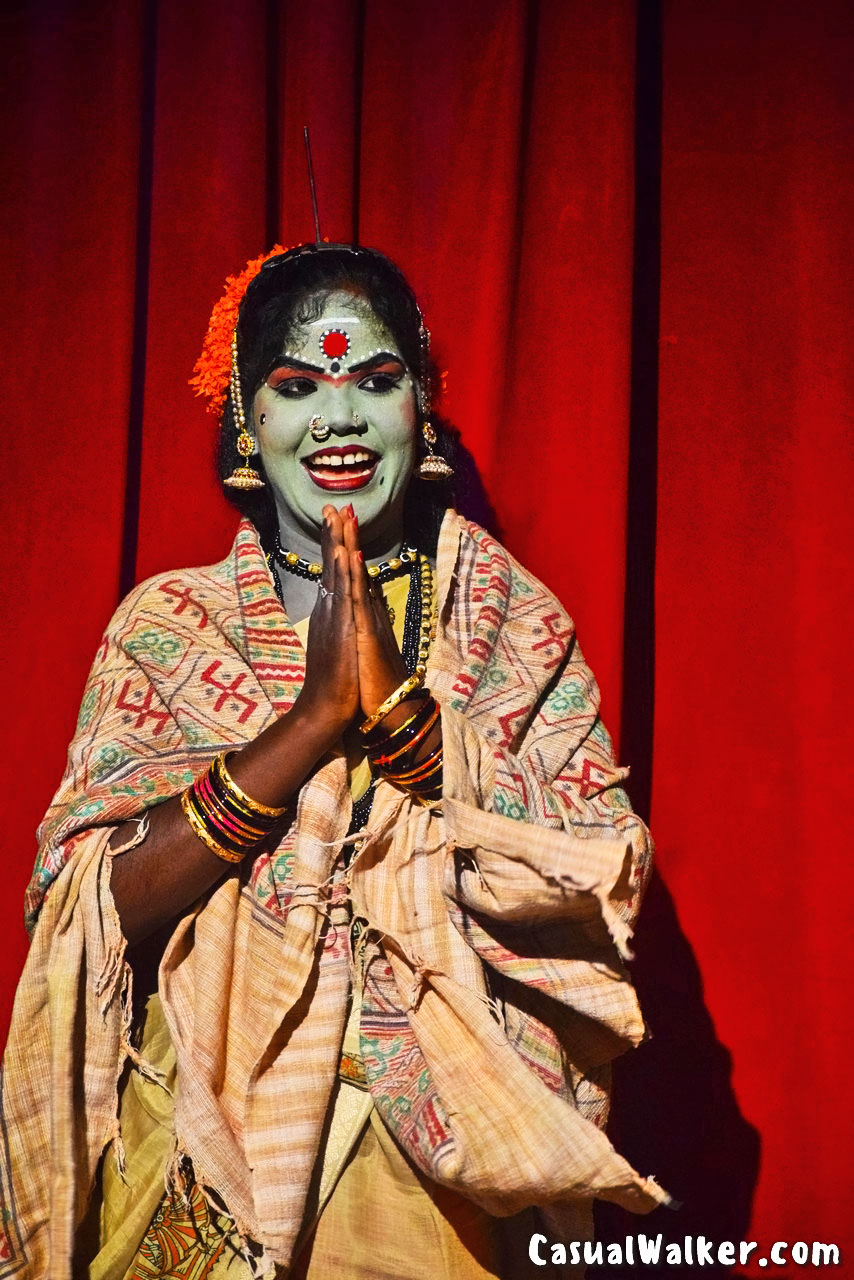
Kattaikoothu: The Dance of Wooden Narratives
Kattaikoothu, also known as Therukoothu, is a traditional street theater and dance form hailing from the cultural heartland of Tamil Nadu. This captivating blend of drama, music, and dance unfolds in the open air, intricately weaving tales that resonate with the pulse of rural communities.
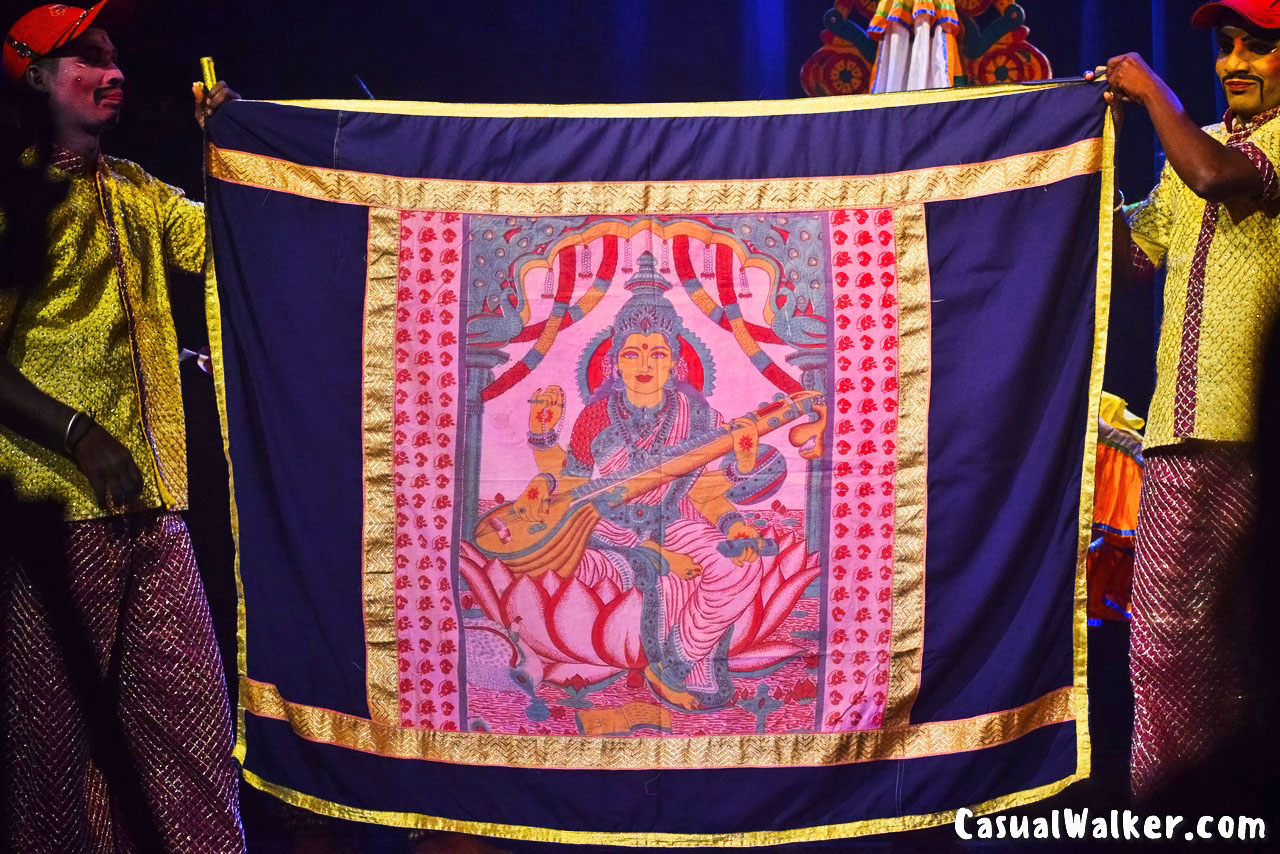
The term “Kattaikoothu” is derived from “Kattai,” symbolizing wood, and “Koothu,” representing dance. Rooted in age-old traditions, this unique art form traces its origins to a time when performers adorned themselves with wooden ornaments, adding a distinctive flair to their presentations. Beyond mere entertainment, Kattaikoothu serves as a powerful cultural mirror, reflecting the traditions, beliefs, and social dynamics of its origins.
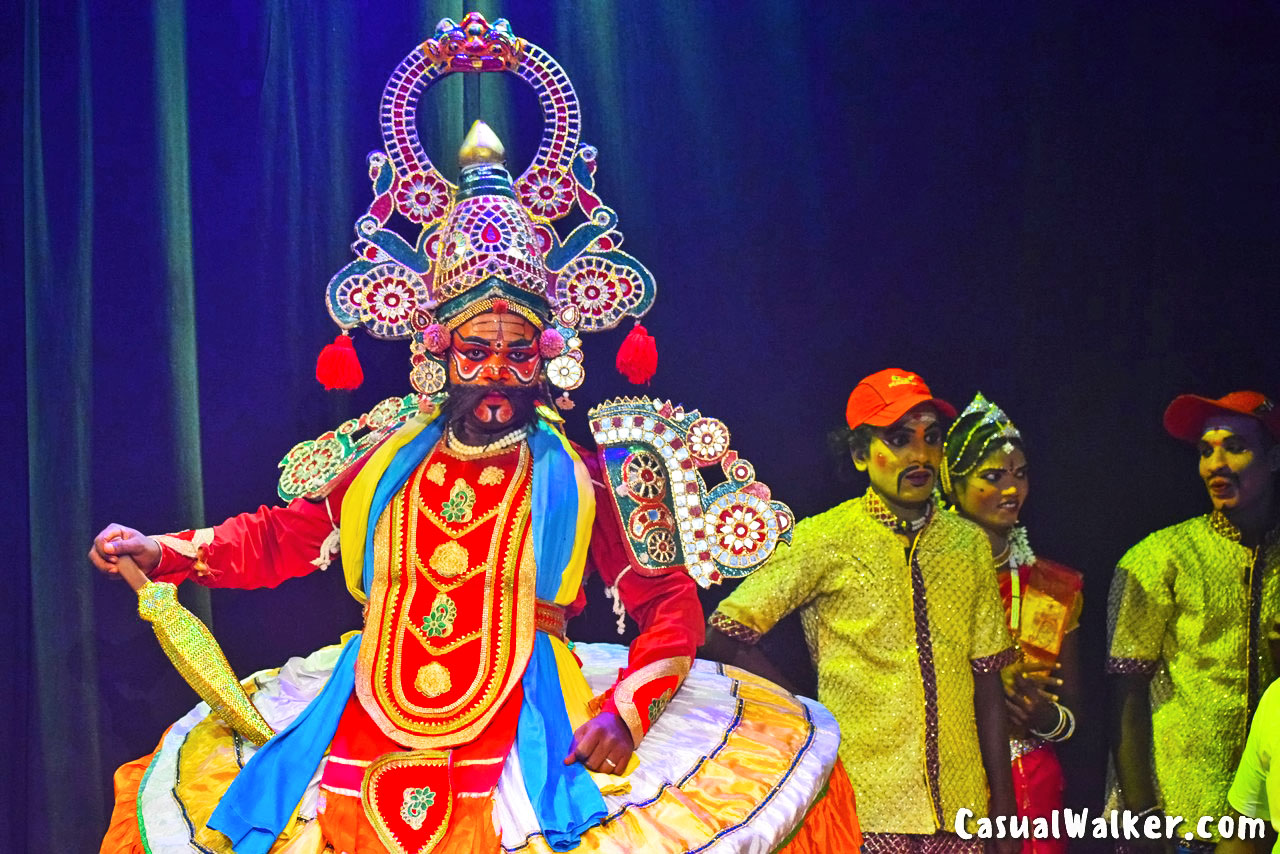
History of Kattaikoothu or Therukoothu
The roots of Kattaikoothu/Therukoothu can be traced back to ancient Tamil Nadu, where it emerged as a vibrant form of storytelling engaging and educating the masses. Literally translating to ‘street play,’ Therukoothu historically found its stage in rural villages during temple festivals, fairs, and other community events. Its origins lie deeply embedded in the cultural and religious fabric of the region, evolving as a dynamic art form that encapsulates the spirit of the people.
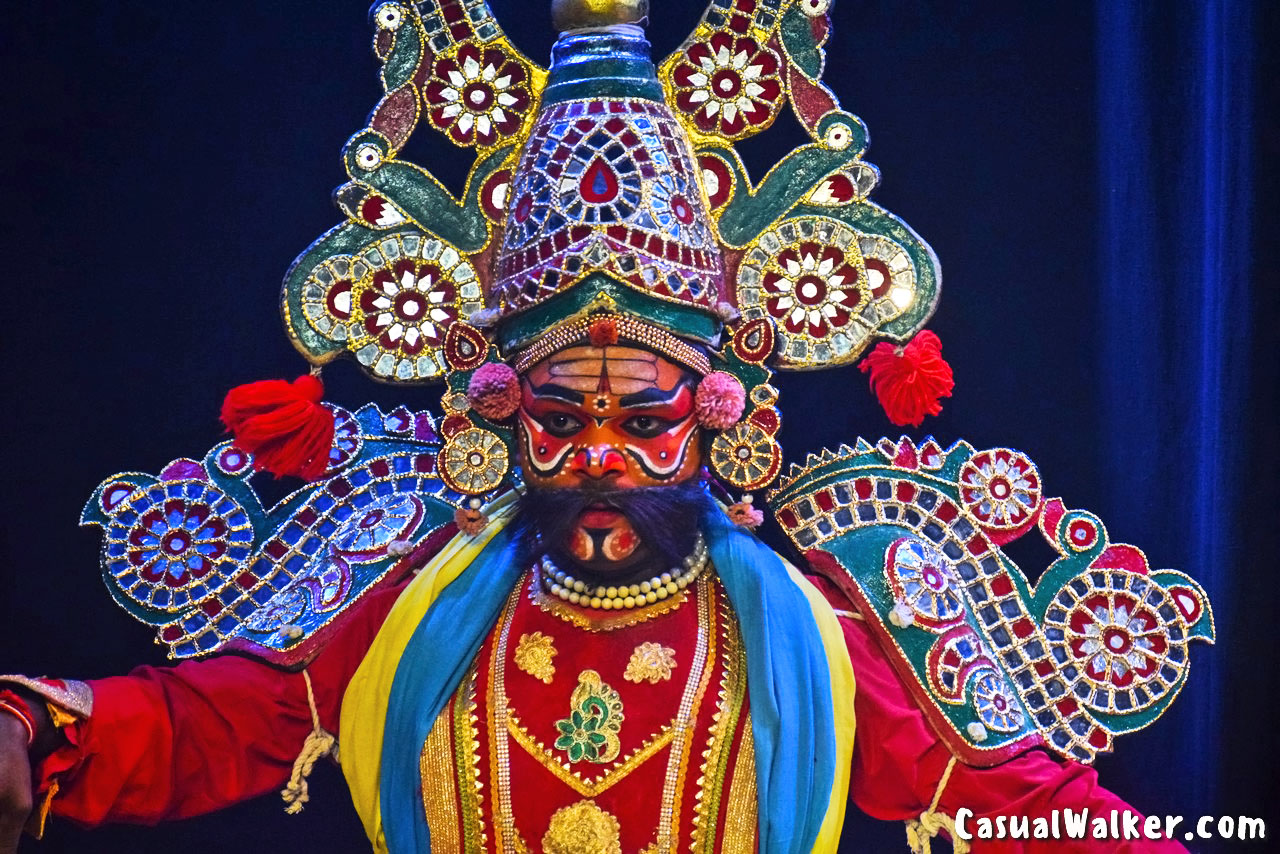
With its origins rooted in the worship of village deities, Therukoothu served as a vehicle for conveying moral and ethical stories, often drawn from the rich tapestry of Indian epics such as the great Ramayana and Mahabharata. These performances weren’t just spectacles; they were communal experiences fostering a sense of unity and shared identity among the audience.
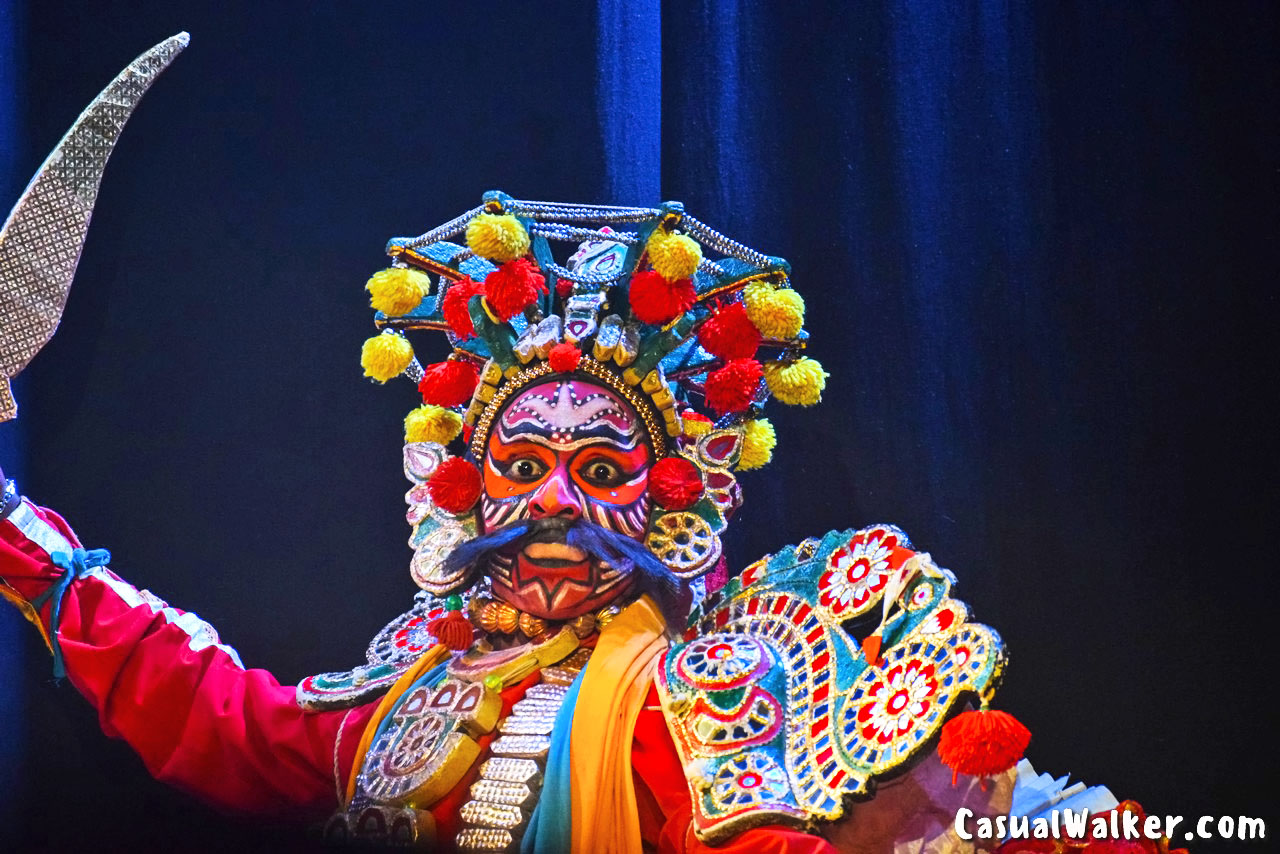
Over centuries, Therukoothu has transformed, adapting to changing times while retaining its core essence. The vibrant costumes, energetic dance movements, and soul-stirring music continue to be the hallmarks of this art form, resonating with audiences across generations. Today, Therukoothu stands as a living testament to the resilience of cultural heritage, bridging the gap between tradition and modernity on the open stages of Tamil Nadu’s streets.
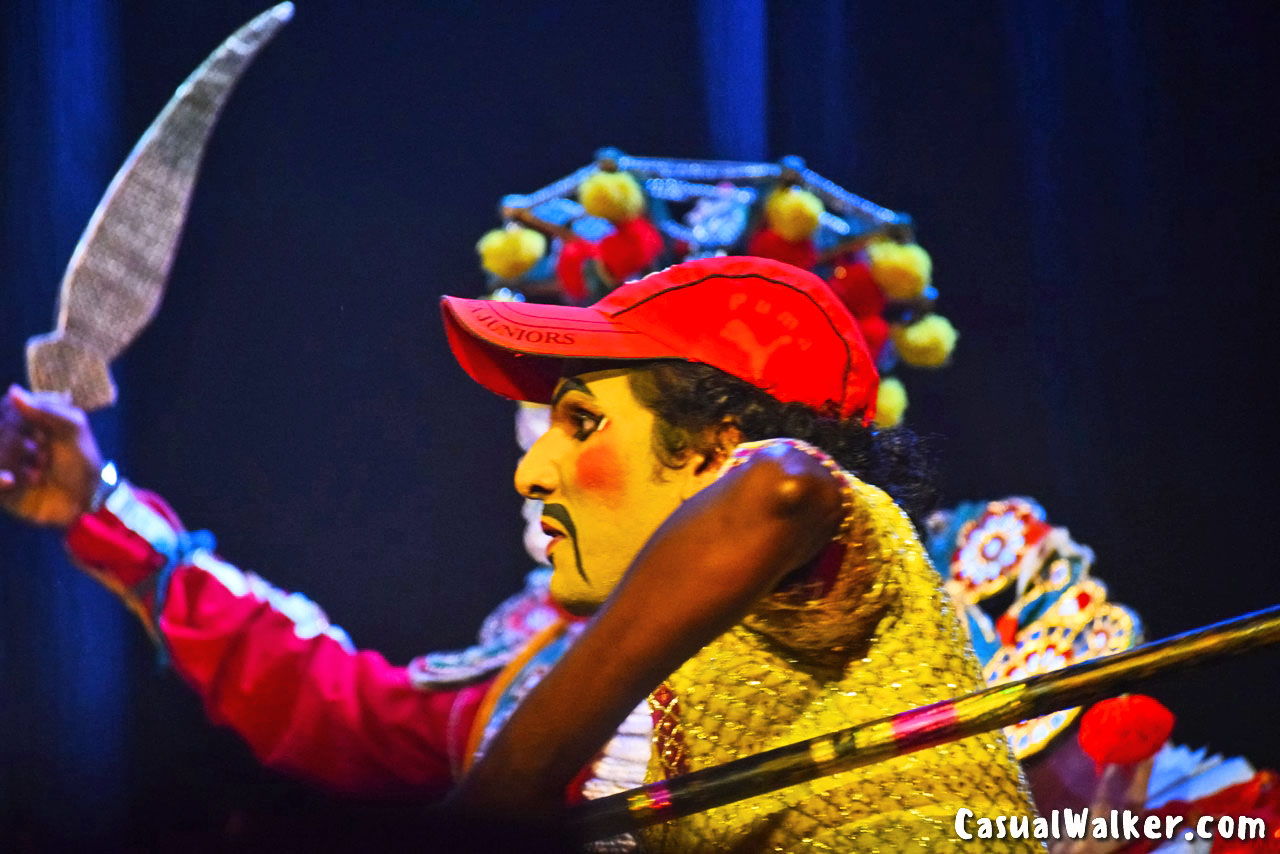
Accompanied by three different instruments – Harmonium, Mridangam, and Mukavinai – and two Talams, the performances also feature background singers.
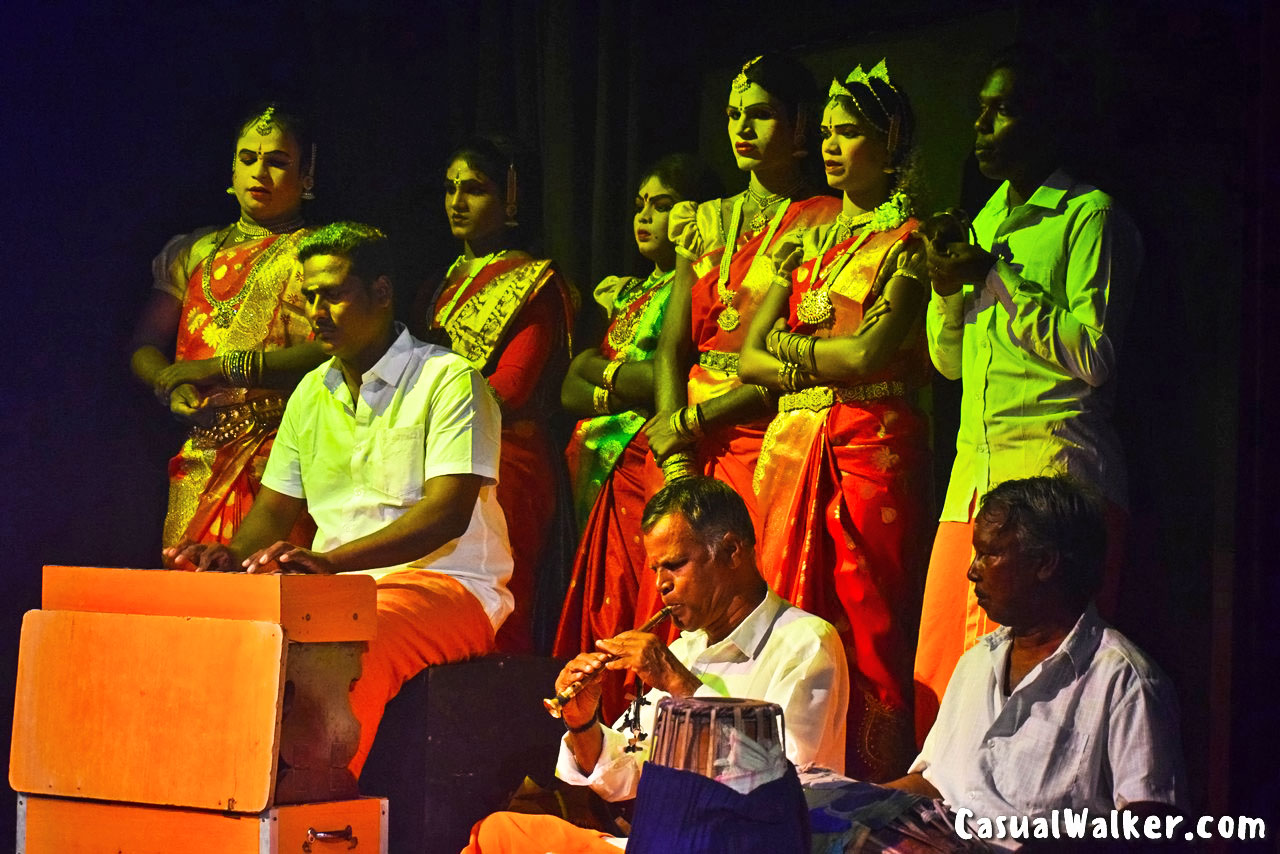
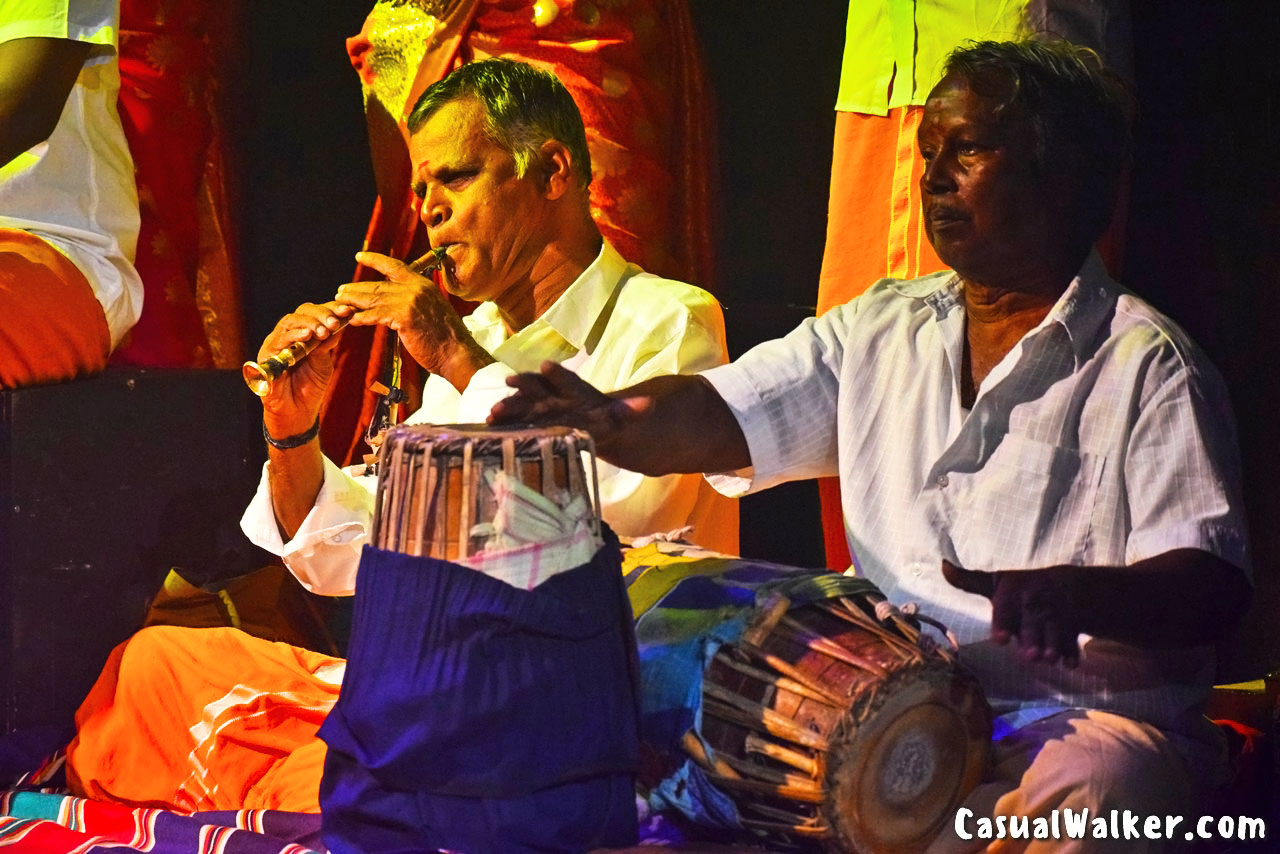
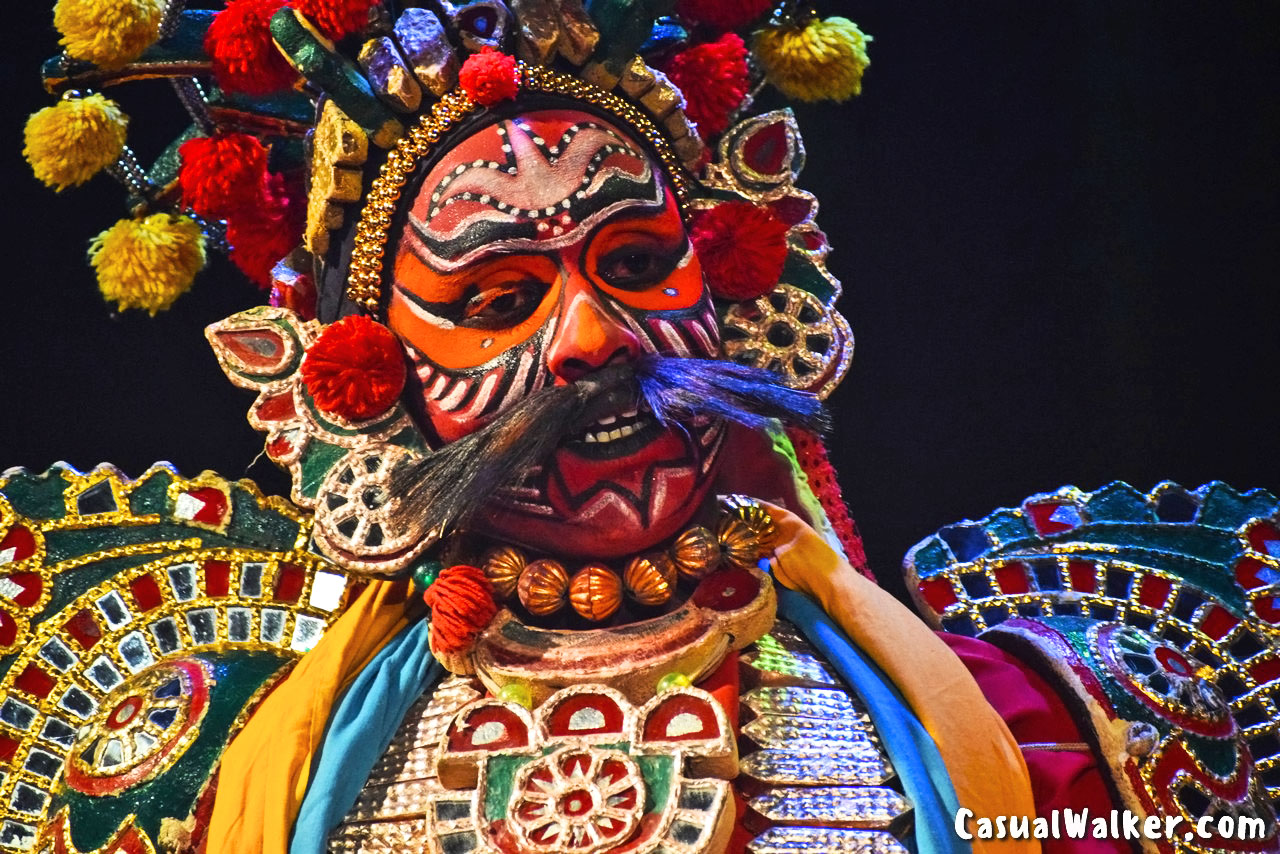
Traditionally involving an ensemble of approximately 15 to 18 skilled actors and musicians, Kattaikoothu unfolds in an overnight performance at a designated space. With wooden accessories as integral parts of the performers’ attire, it weaves compelling narratives, enchanting audiences with its unique blend of storytelling and artistic expression.
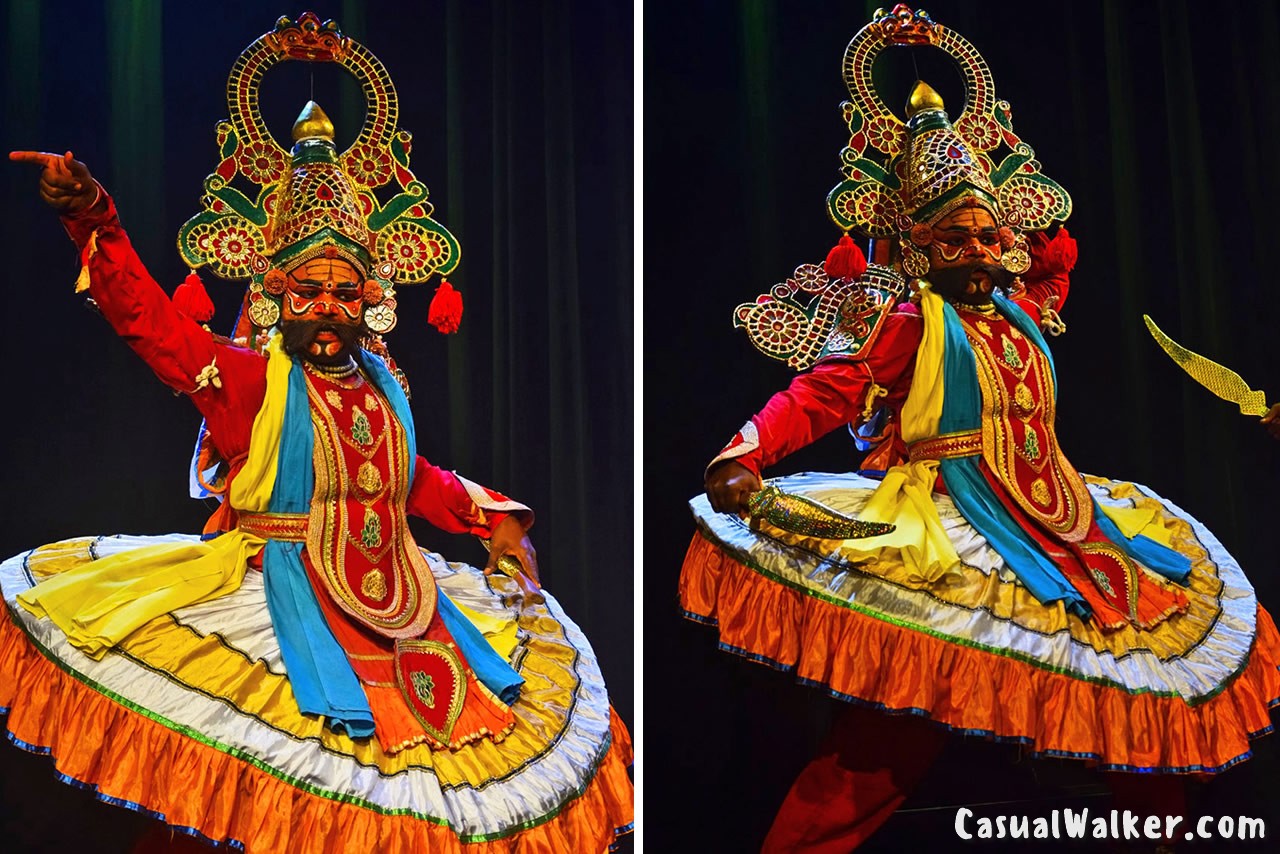
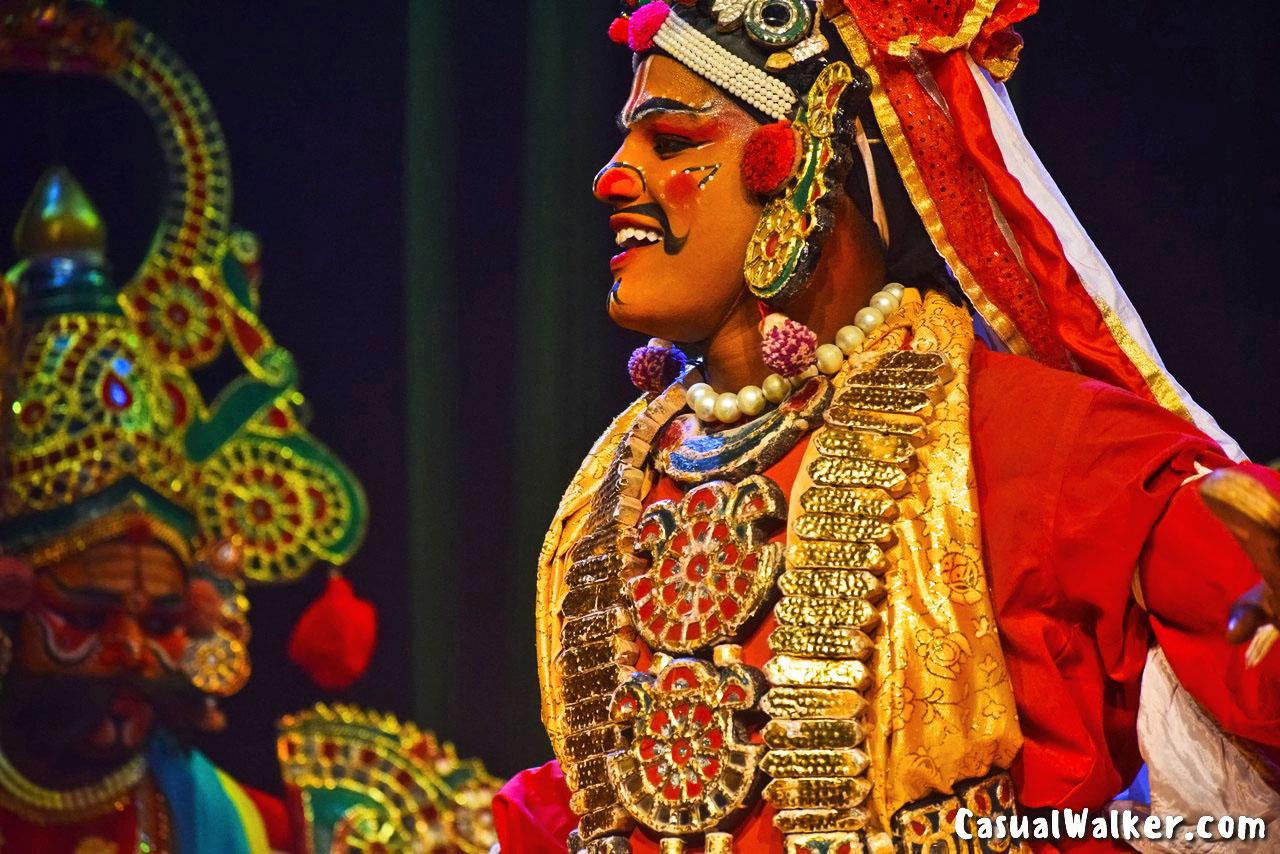
Shri Thilagavathi Palani’s Kattaikoothu Troupe
The award-winning Shri Thilagavathi Palani and Troupe showcased Kattaikkuttu as part of Rasoham’s Kutty Kutchery Festival. Despite being a male-dominated rural theater form in Tamil Nadu, Shri Thilagavathi Palani emerged as an early woman pioneer in this field.
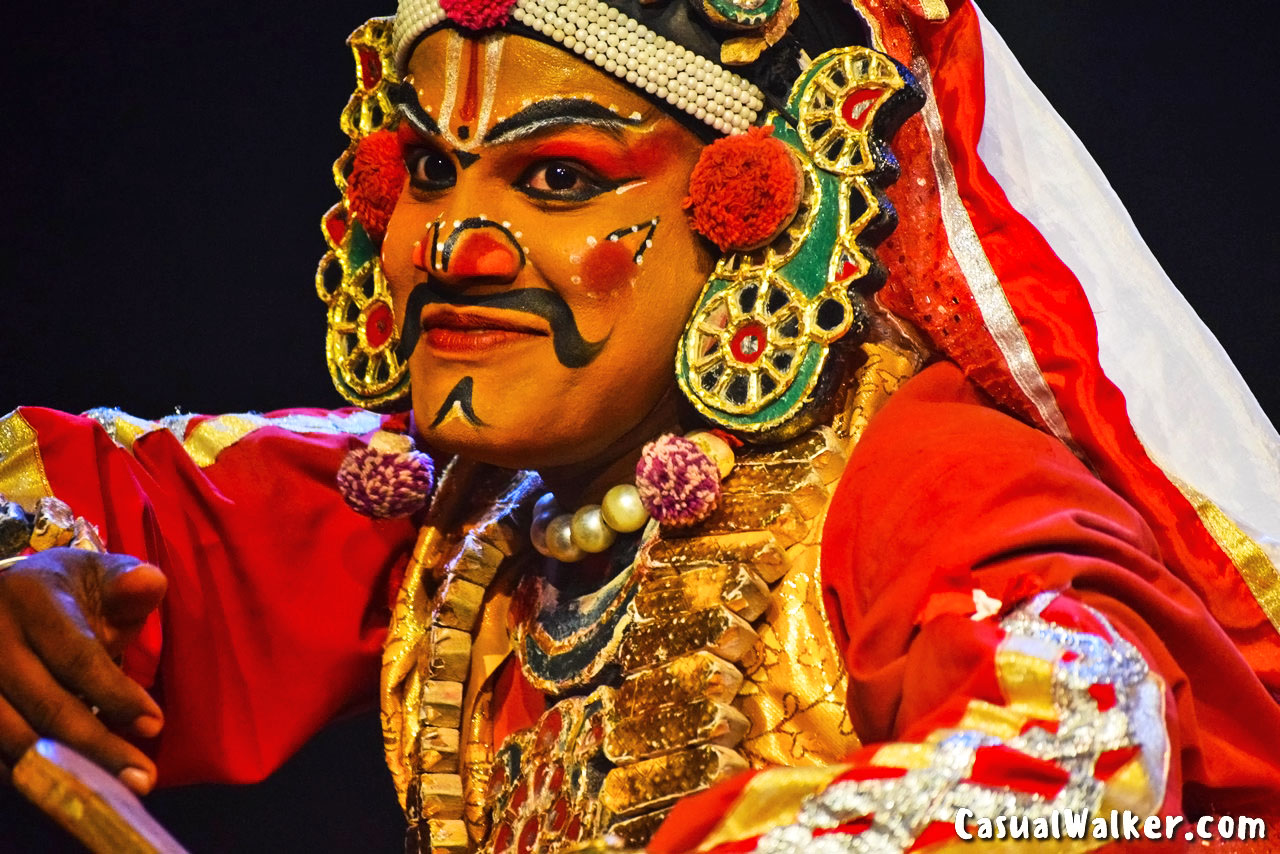
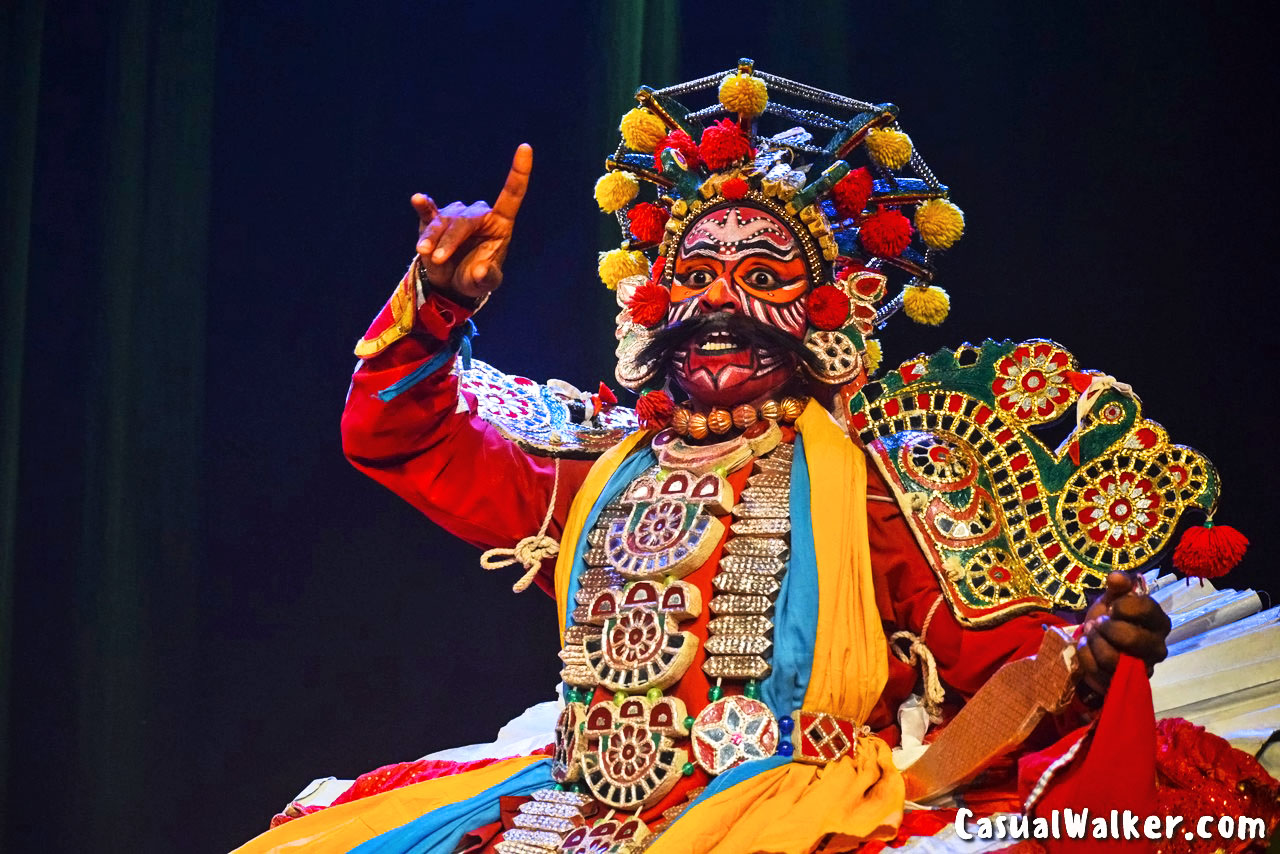
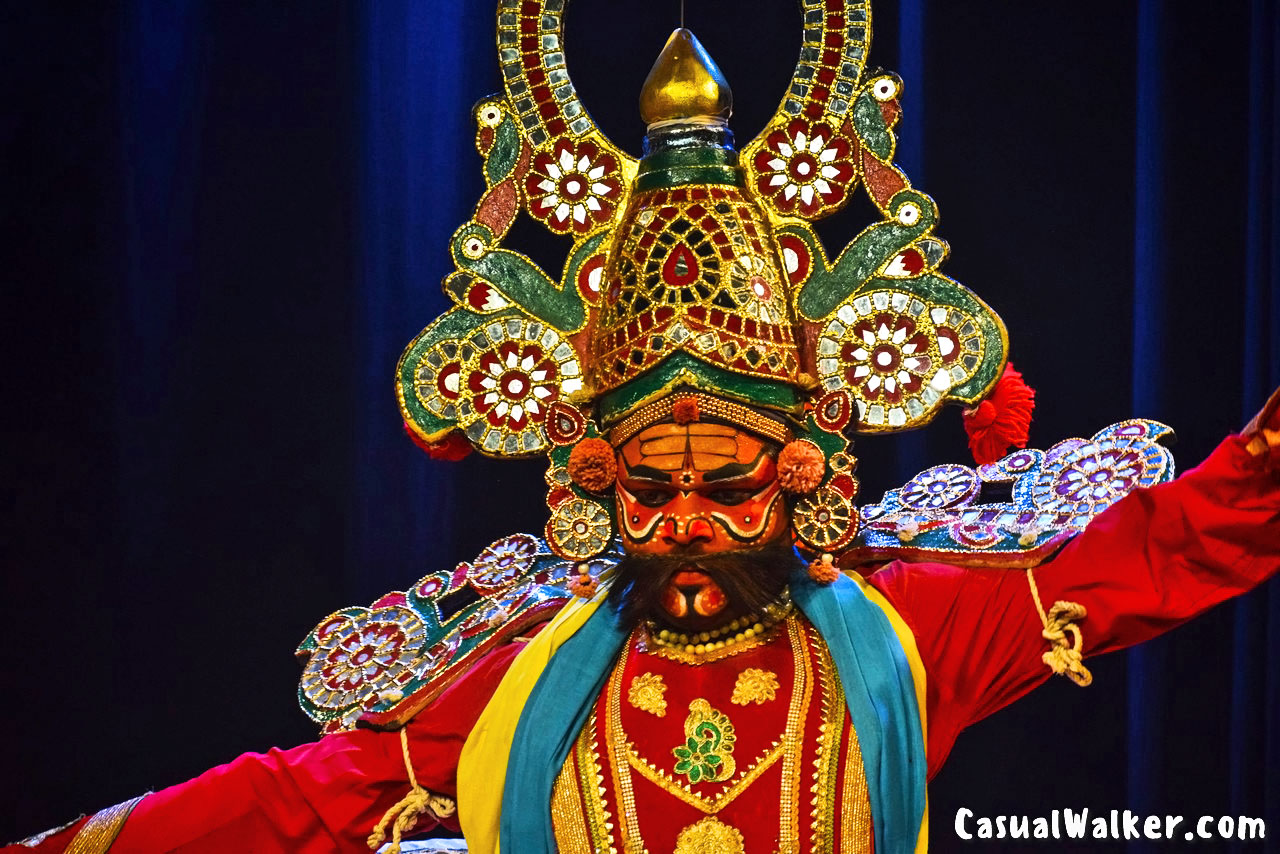
A powerful artist and a name to reckon with, Shri Thilagavathi Palani’s journey was not without challenges. Hailing from the small village of Kalavaikootroad near Vellore, she learned her craft from Shri Rajagopal.
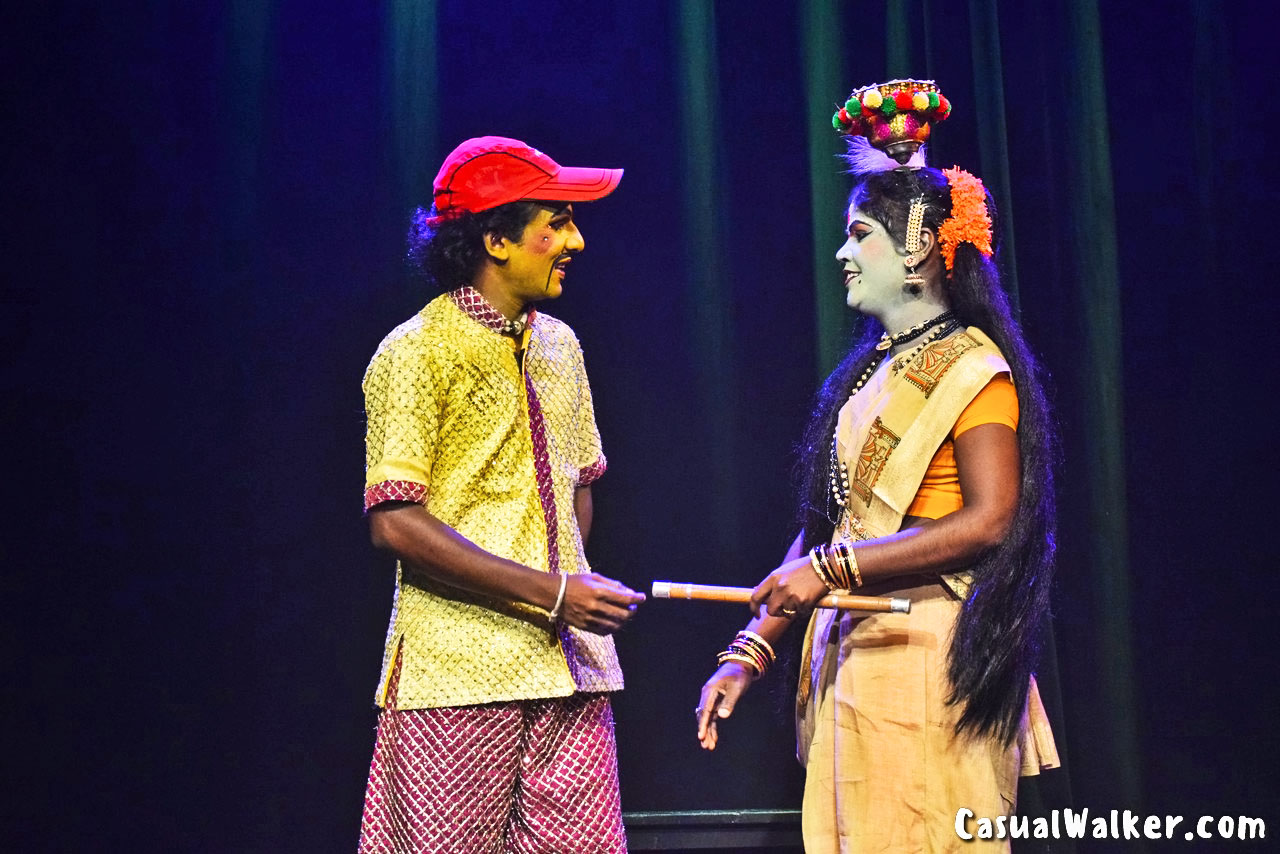
The main performances usually draw inspiration from episodes of the Mahabharata, such as Draupadi’s marriage, her vastra haran, Krishna’s stories, and similar narratives from the Ramayana and Shiva and Parvati’s marriage.
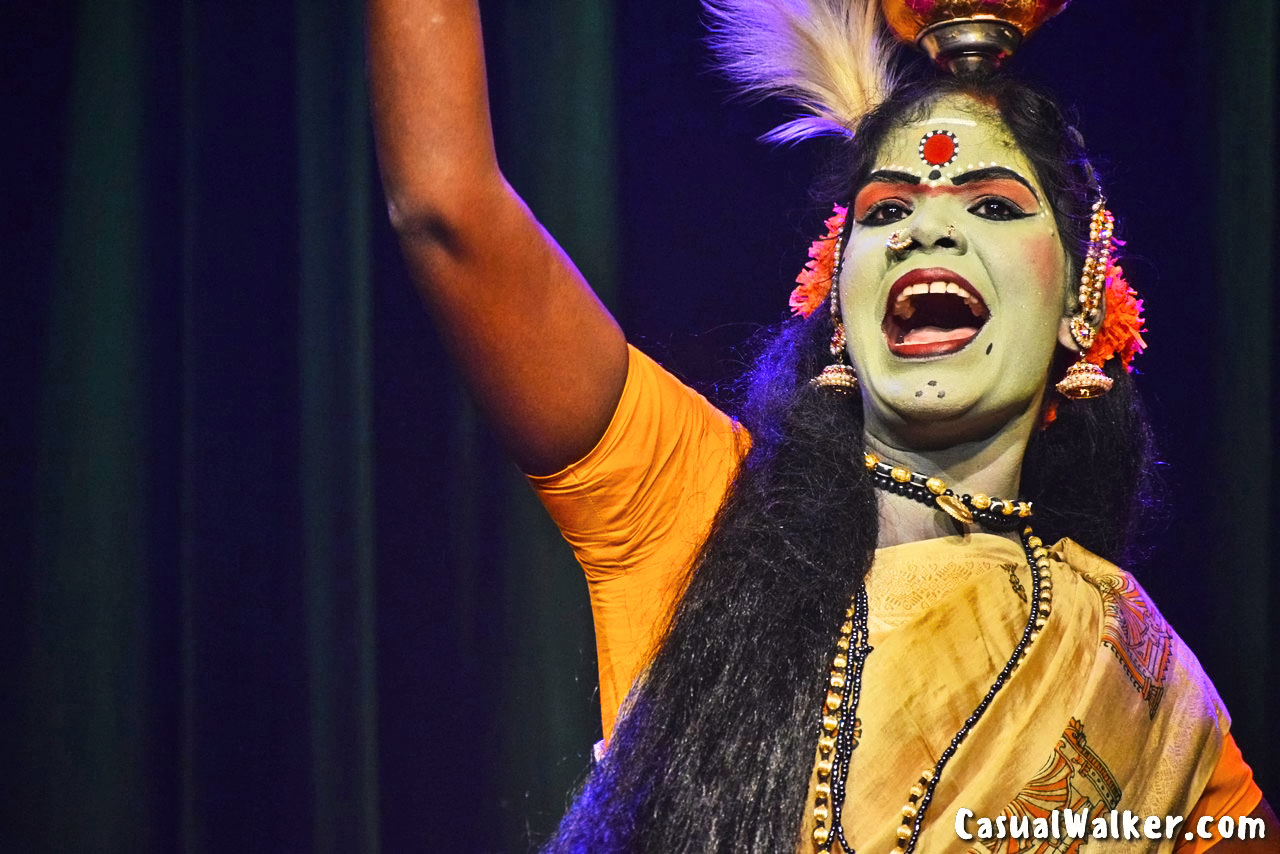
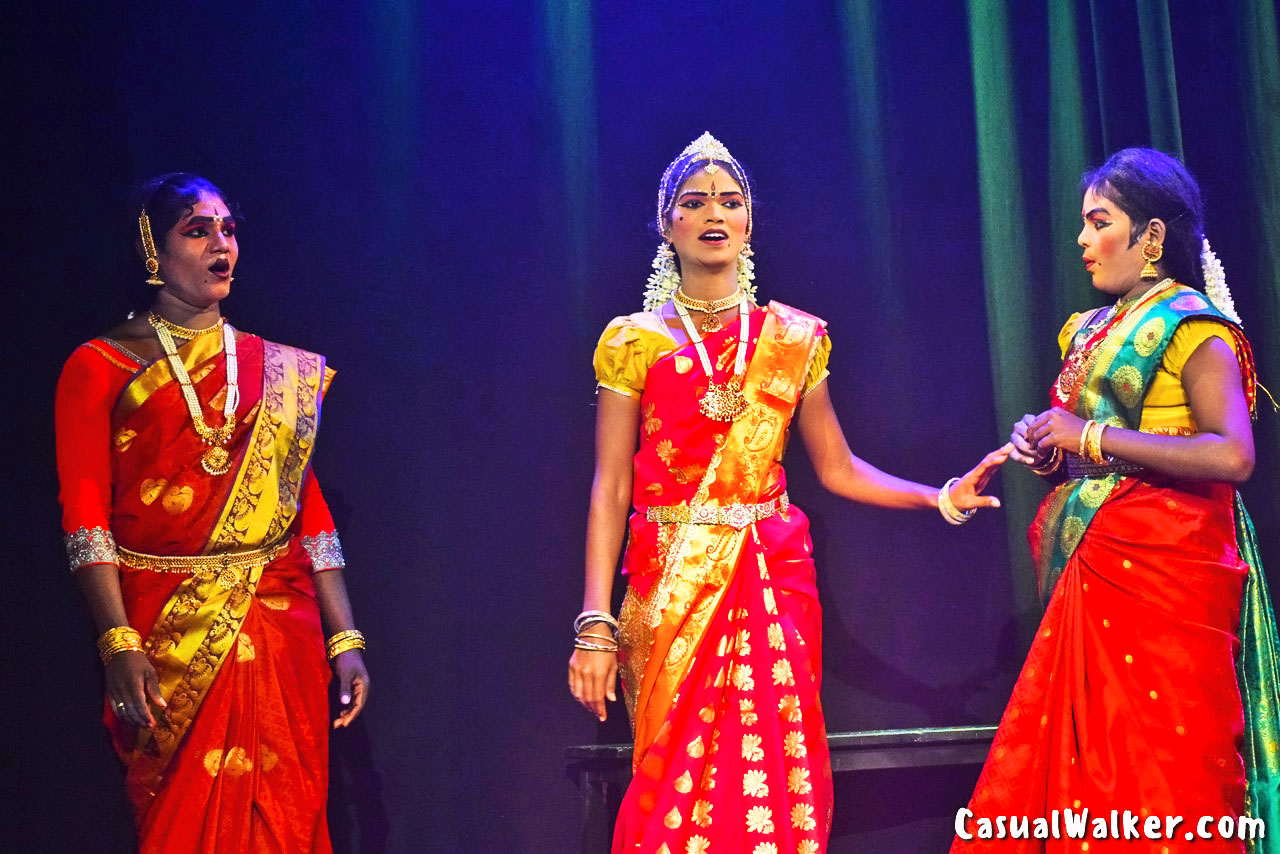
While traditionally men played all roles, the entrance of women has broadened the scope, enabling them to portray both male and female characters. Palani is most celebrated for her role as Kurathi.
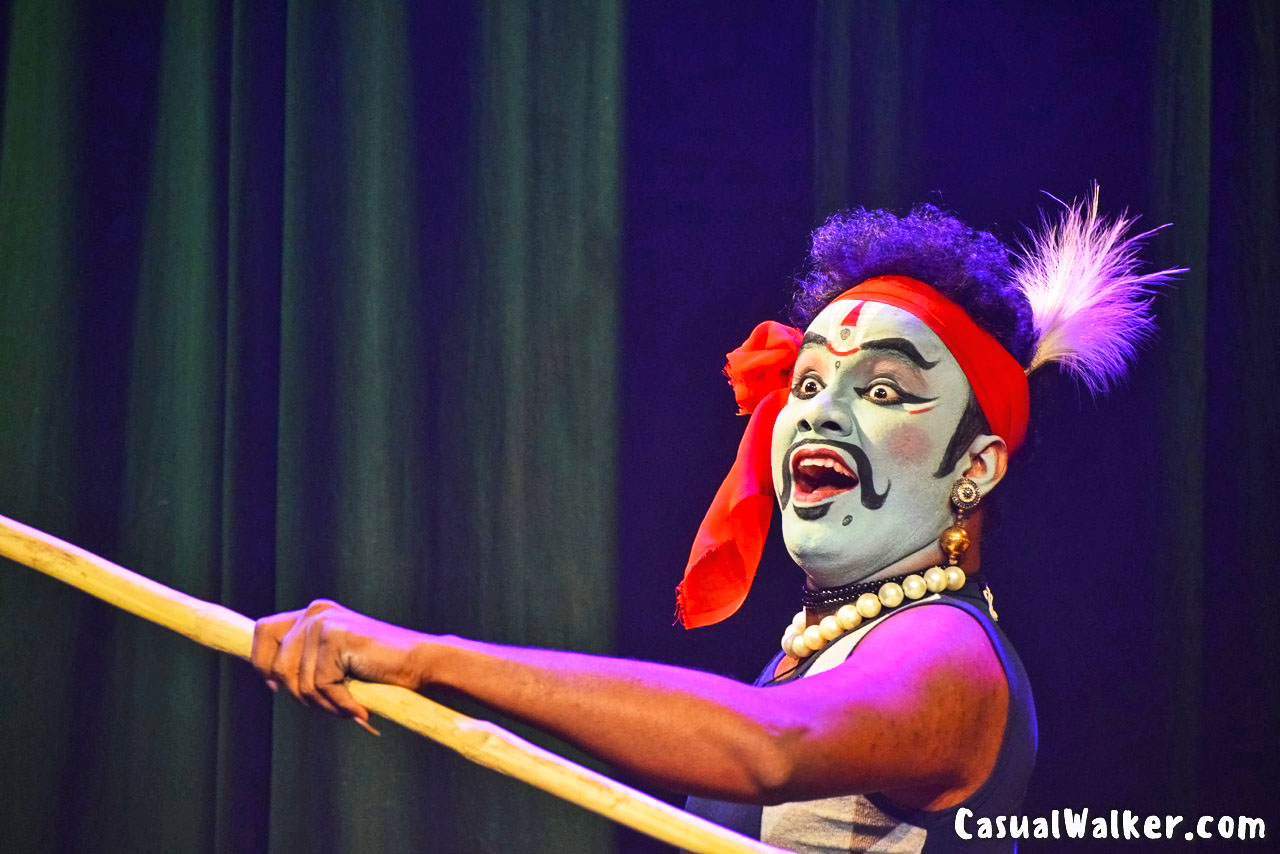
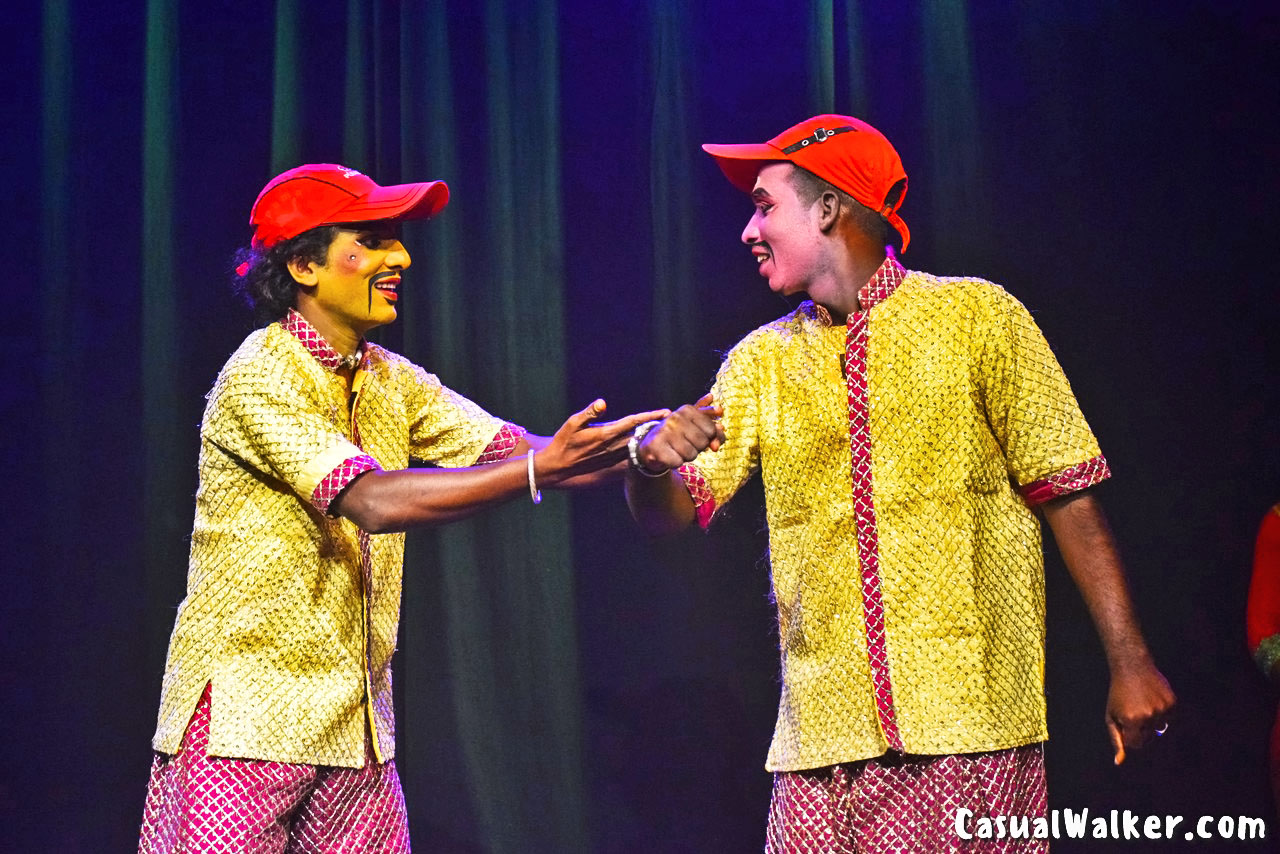
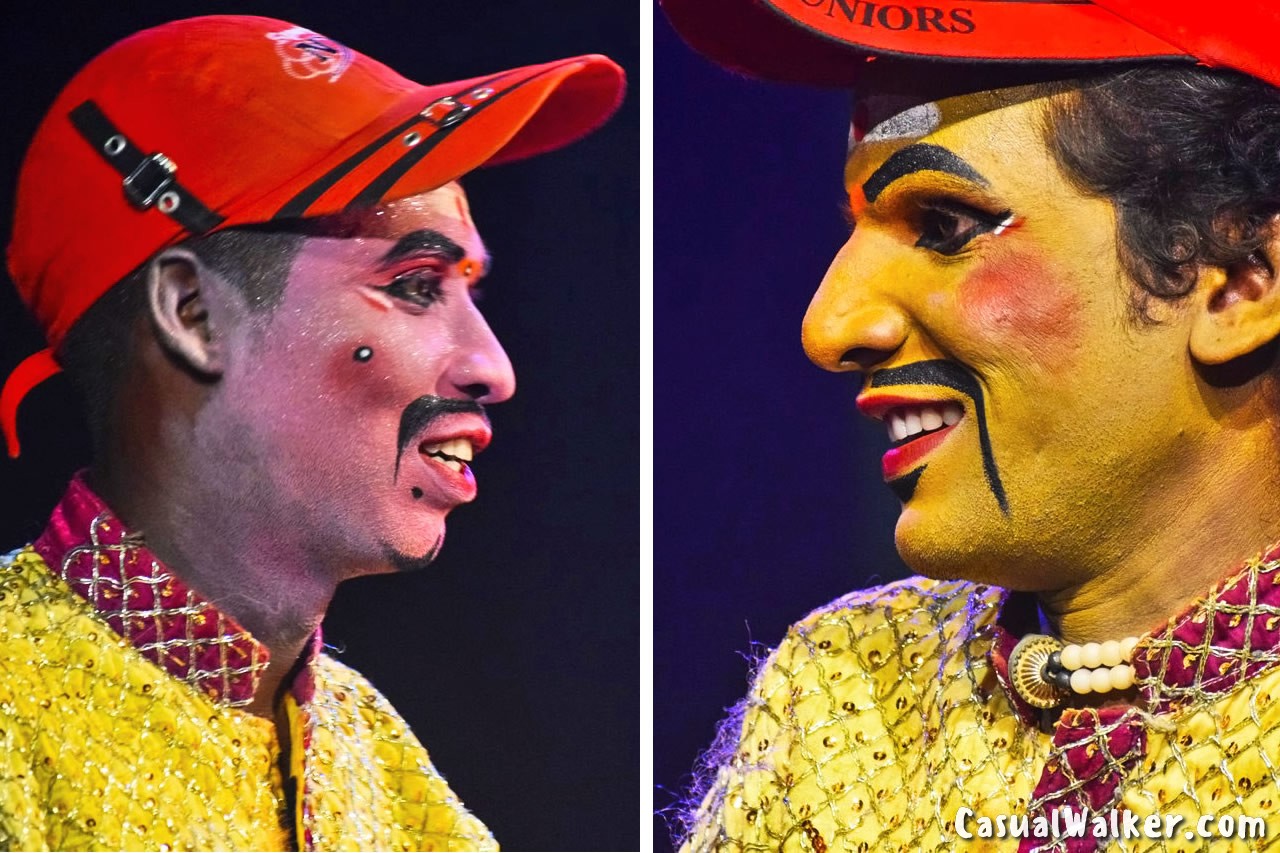
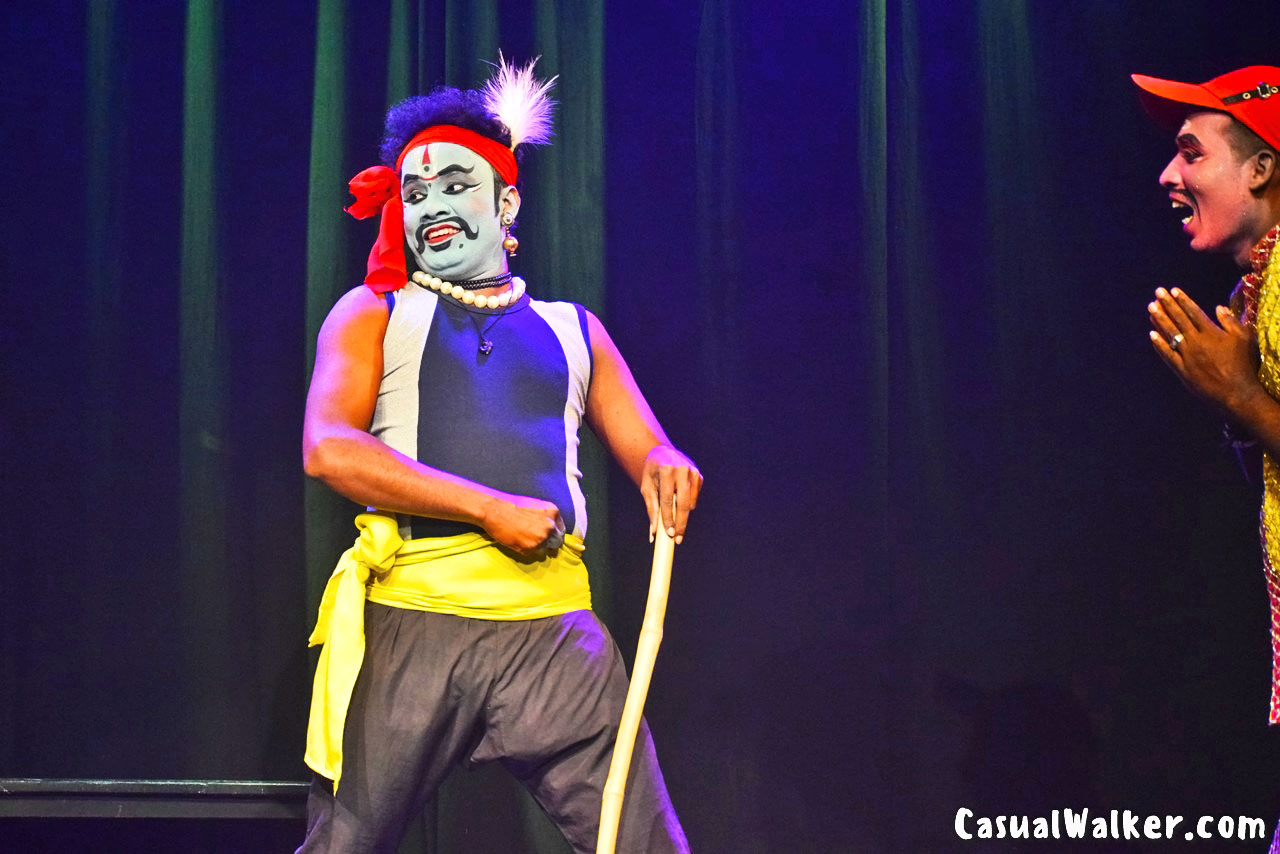
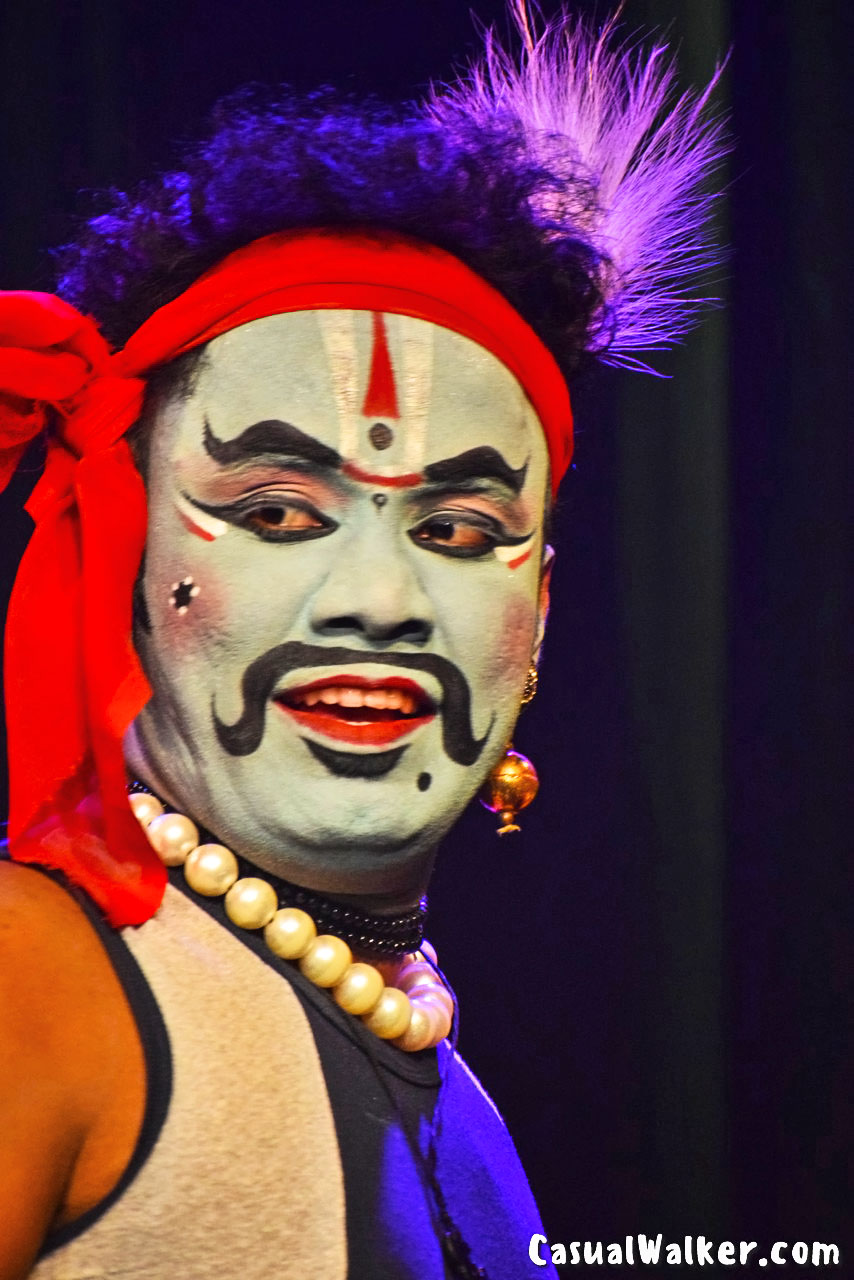
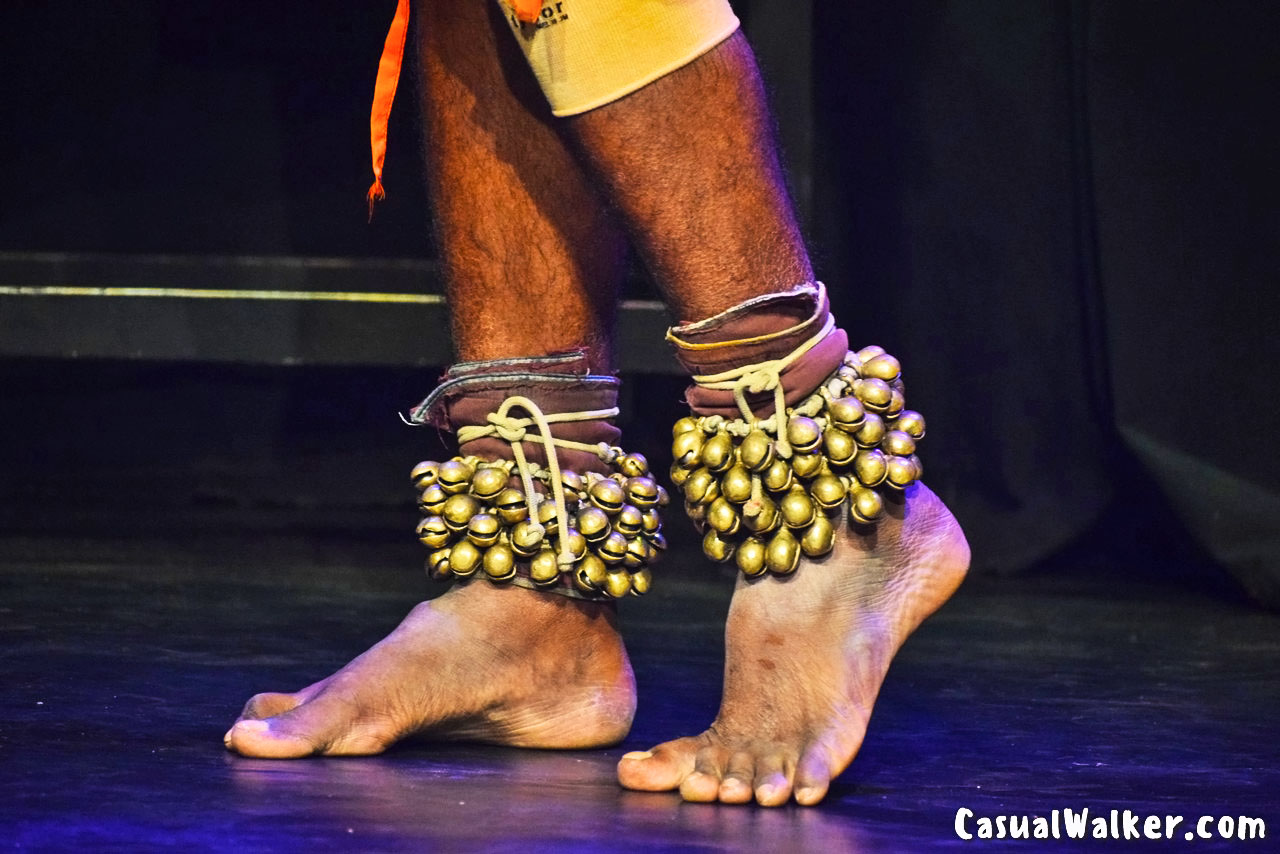
Overall the Kattaikoothu performance by Thilagavathi Palani at Rasoham’s Kutty Kutchery Festival provided a captivating journey into the rich cultural heritage of Tamil folk dance. As the rhythmic beats and expressive movements came to life on the stage, it became evident that Kattaikoothu Therukoothu is not just a dance, it’s a living testament to the cultural diversity and artistic legacy embedded in the heart of our tradition.
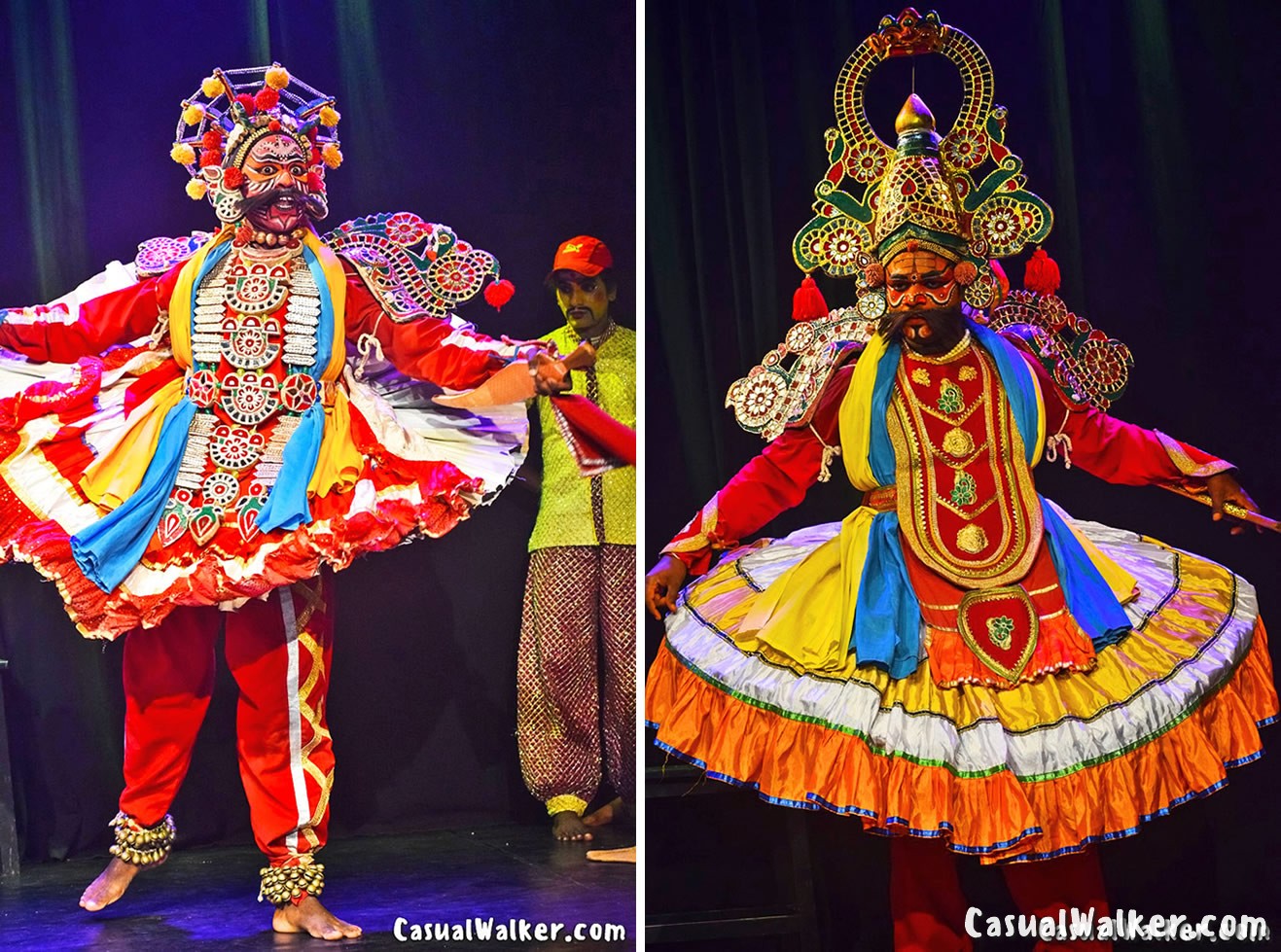
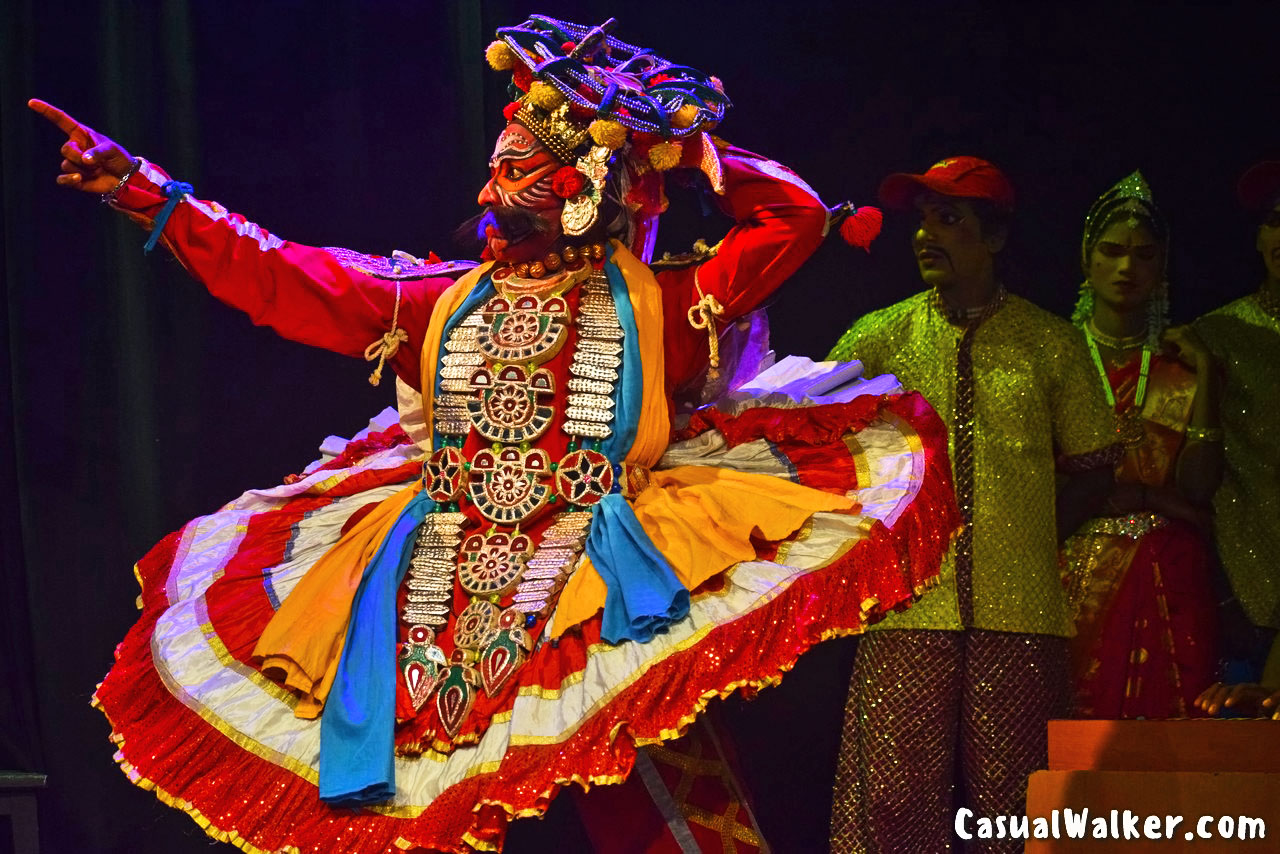
Also, check our Similar Photo Stories on Dance & Culture :
Koothu Kottaai – Grand Folk Arts Show Of Tamil Nadu (Part 1)

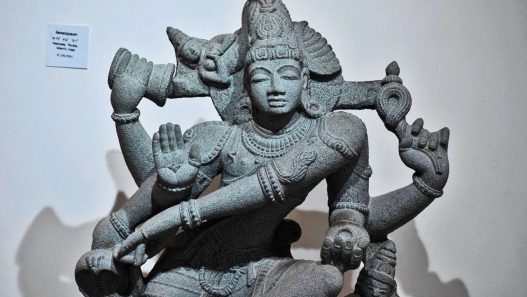

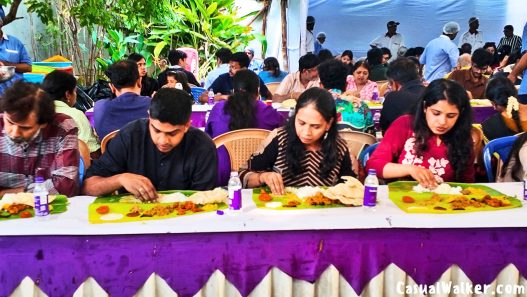

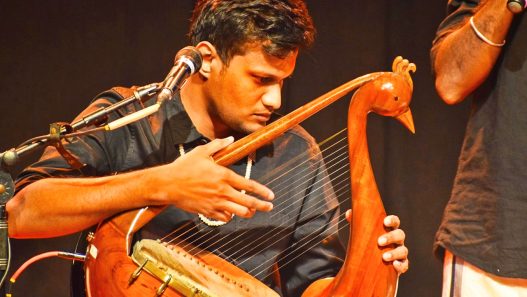

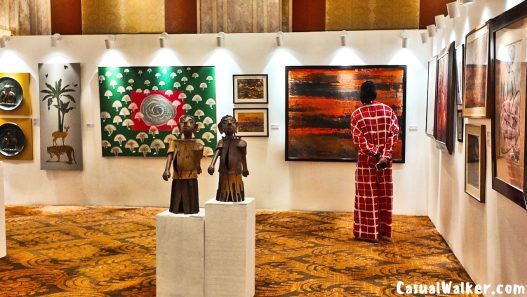
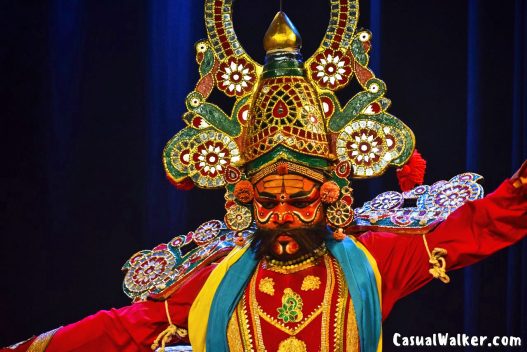

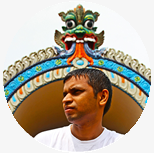














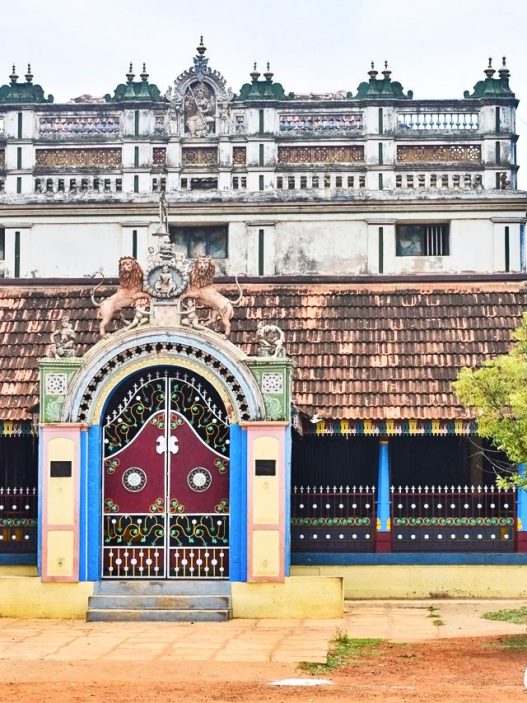


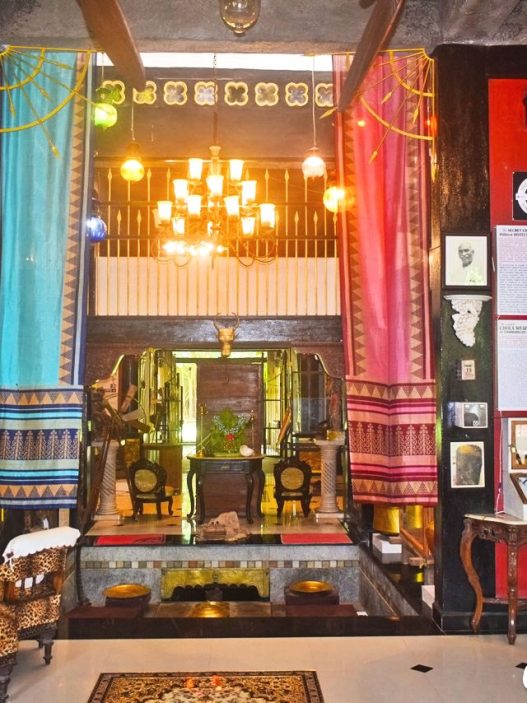
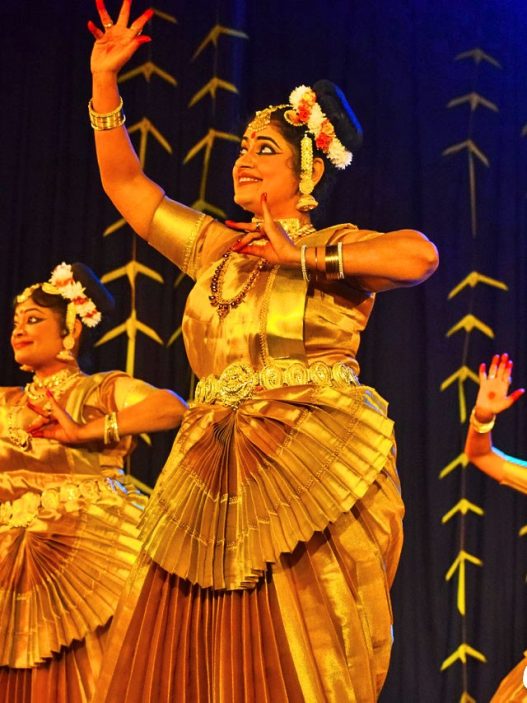
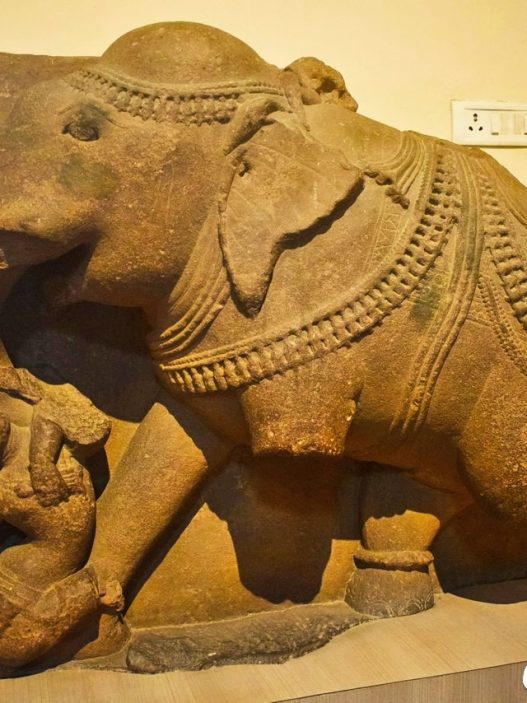
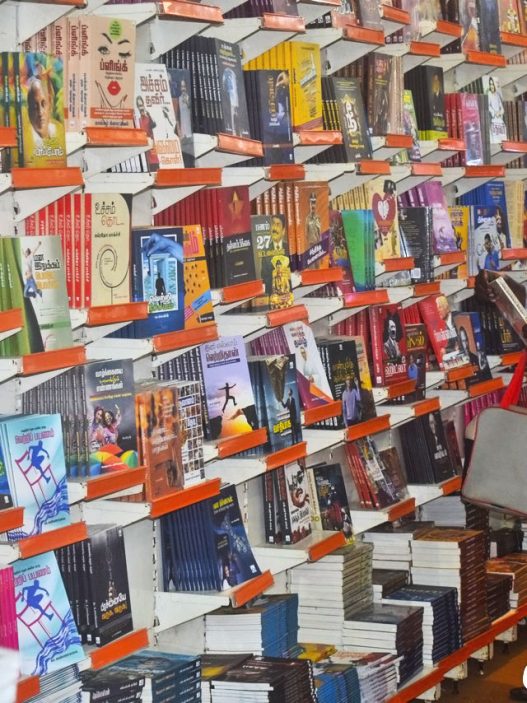
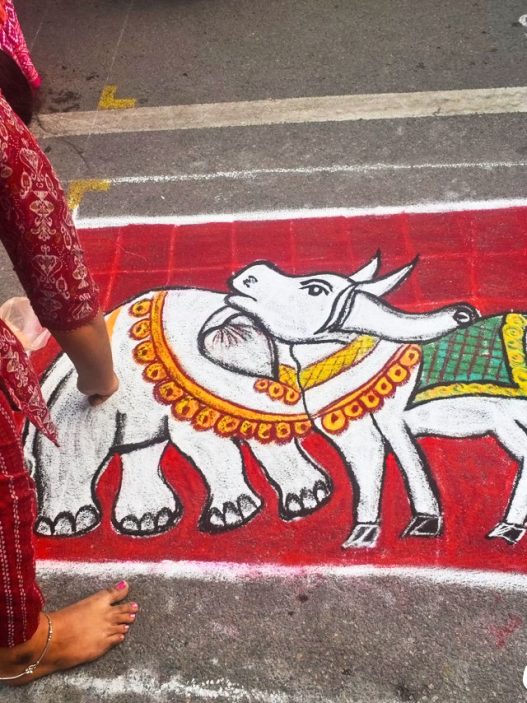
wnzna6
Nice post. I learn something more challenging on different blogs everyday. It will always be stimulating to read content from other writers and practice a little something from their store. I’d prefer to use some with the content on my blog whether you don’t mind. Natually I’ll give you a link on your web blog. Thanks for sharing.
w7cw0g
I truly appreciate this post. I’ve been looking everywhere for this! Thank goodness I found it on Bing. You have made my day! Thanks again!
I just could not depart your web site prior to suggesting that I extremely enjoyed the standard info a person provide for your visitors? Is gonna be back often in order to check up on new posts
I cling on to listening to the newscast talk about getting boundless online grant applications so I have been looking around for the top site to get one. Could you advise me please, where could i find some?
https://je-tall-sf-marketing-2.sfo3.digitaloceanspaces.com/research/je-tall-sf-marketing-1-(194).html
This brocade robe attracts the eye to all the
best places—from a touch of skin on the shoulder to a ruched waist.
https://filedn.eu/lXvDNJGJo3S0aUrNKUTnNkb/marketing-825/research/je-marketing-(341).html
You may go for a traditional shade corresponding to navy, or
choose a summery shade like the Eliza j ruched waist jumpsuit .
https://je-tall-marketing-838.lon1.digitaloceanspaces.com/research/je-marketing-(136).html
However, you want to wait to hear to from the bride’s mother before you begin.
https://je-sf-tall-marketing-740.b-cdn.net/research/je-marketing-(321).html
Black can additionally be another dangerous color,
but can work completely nicely at more formal weddings.
https://je-sf-tall-marketing-734.b-cdn.net/research/je-marketing-(66).html
A basic evening costume with the proper neckline,
colours, and sleeve length will add to your ultimate outfit.
https://filedn.eu/lXvDNJGJo3S0aUrNKUTnNkb/marketing-734/research/je-marketing-(71).html
Your gown should complement or contrast the color
scheme somewhat than match it.
https://je-tall-marketing-838.lon1.digitaloceanspaces.com/research/je-marketing-(135).html
We carry manufacturers that excel in mother of the bride
jacket attire, capes and pantsuits, like Alex Evenings, R&M Richards and Ignite.
https://filedn.eu/lXvDNJGJo3S0aUrNKUTnNkb/marketing-816/research/je-marketing-(73).html
Looking at summer season mother of the bride clothes that
are a step away from the norm?
https://je-sf-tall-marketing-736.b-cdn.net/research/je-marketing-(326).html
As mother of the bride, you could wish to find a look which complements these parts, with out being matchy-matchy.
https://filedn.eu/lXvDNJGJo3S0aUrNKUTnNkb/marketing-817/research/je-marketing-(232).html
Dresses are made in gorgeous colours similar
to gold, red, and blue and mother of the bride dresses.
https://filedn.eu/lXvDNJGJo3S0aUrNKUTnNkb/marketing-801/research/je-marketing-(253).html
Thus, again, it pays to consider how much skin you wish to present and what’s most flattering to your body.
https://filedn.eu/lXvDNJGJo3S0aUrNKUTnNkb/marketing-803/research/je-marketing-(114).html
There are ideas here on how to wear pants for the mother of the bride.
https://filedn.eu/lXvDNJGJo3S0aUrNKUTnNkb/marketing-788/research/je-marketing-(444).html
It’s important to make certain that any head pieces don’t swamp your frame, and doesn’t disguise your face.
https://filedn.eu/lXvDNJGJo3S0aUrNKUTnNkb/marketing-791/research/je-marketing-(412).html
Teri Jon has a large number of plus measurement night gowns, and a few even with prolonged sizing to measurement
20.
https://filedn.eu/lXvDNJGJo3S0aUrNKUTnNkb/marketing-706/research/je-marketing-(72).html
So earlier than I even go into element mom of the bride outfit concepts, I
wish to emphasize one necessary thing.
https://filedn.eu/lXvDNJGJo3S0aUrNKUTnNkb/marketing-738/research/je-marketing-(493).html
From modest attire to one thing with a bit extra aptitude The Dress
Outlet prides itself on having an in depth gallery of Mother of the
Bride Dresses.
https://filedn.eu/lXvDNJGJo3S0aUrNKUTnNkb/marketing-741/research/je-marketing-(434).html
The course of of choosing apparel for the mom of the groom and
mother of the bride could be very related.
https://je-sf-tall-marketing-741.b-cdn.net/research/je-marketing-(373).html
Our mothers are beautiful and superb and they
want to rock what they’ve.
https://je-tall-marketing-836.lon1.digitaloceanspaces.com/research/je-marketing-(379).html
Exude Mother of the Bride magnificence in this lovely patterned robe from wedding
ceremony guest gown powerhouse Karen Millen.
https://filedn.eu/lXvDNJGJo3S0aUrNKUTnNkb/marketing-744/research/je-marketing-(29).html
You want her to feel comfy on the massive day—especially
when it is time for marriage ceremony photos.
https://filedn.eu/lXvDNJGJo3S0aUrNKUTnNkb/marketing-723/research/je-marketing-(462).html
Browse by scoop necklines or check out the strapless options.
https://filedn.eu/lXvDNJGJo3S0aUrNKUTnNkb/marketing-819/research/je-marketing-(200).html
From inexpensive and trendy to designer and conventional, these are our
favorite bow ties for weddings.
https://filedn.eu/lXvDNJGJo3S0aUrNKUTnNkb/marketing-788/research/je-marketing-(485).html
On the opposite hand, If you are curvy or apple-shaped, versatile dress kinds like a-line
and empire waist will work wonders for you.
https://filedn.eu/lXvDNJGJo3S0aUrNKUTnNkb/marketing-731/research/je-marketing-(220).html
Clean lines and a shaped waist make this a timeless and
stylish mother of the bride gown with a flattering silhouette.
https://filedn.eu/lXvDNJGJo3S0aUrNKUTnNkb/marketing-734/research/je-marketing-(365).html
An imported diamond in the rough, the Adrianna
Papell Floral Beaded Gown is a true stunner.
https://filedn.eu/lXvDNJGJo3S0aUrNKUTnNkb/marketing-722/research/je-marketing-(476).html
The straight hemline at the backside falls simply above the ankles and the sleeves cease right
after the elbows.
https://filedn.eu/lXvDNJGJo3S0aUrNKUTnNkb/marketing-821/research/je-marketing-(410).html
Experiment with strapless kinds, sudden lengths, or modern jumpsuits.
https://je-sf-tall-marketing-732.b-cdn.net/research/je-marketing-(500).html
Read our reviews of 9 tie kinds and colours, excellent for your marriage ceremony.
https://je-sf-tall-marketing-727.b-cdn.net/research/je-marketing-(221).html
The massive florals with the black background are notably on development
and the ruching adds a flattering element.
https://filedn.eu/lXvDNJGJo3S0aUrNKUTnNkb/marketing-726/research/je-marketing-(466).html
This embellishment on this attractive dress provides a contact of magic perfect for any winter marriage ceremony.
https://filedn.eu/lXvDNJGJo3S0aUrNKUTnNkb/marketing-718/research/je-marketing-(474).html
The safest guess is for the mom of the bride to wear an identical colour to the bridesmaids to stay on-theme.
https://filedn.eu/lXvDNJGJo3S0aUrNKUTnNkb/marketing-803/research/je-marketing-(92).html
Our Mother of the Bride Dresses contains a
huge assortment of formal gowns and dresses that
match into any finances.
https://je-tall-marketing-829.sgp1.digitaloceanspaces.com/research/je-marketing-(457).html
Give them glitz and glam on this allover sequin stunner.
https://filedn.eu/lXvDNJGJo3S0aUrNKUTnNkb/marketing-802/research/je-marketing-(190).html
The distinction between these two gowns is in how they are chosen.
https://filedn.eu/lXvDNJGJo3S0aUrNKUTnNkb/marketing-726/research/je-marketing-(370).html
It may be your liked one has to wait to get married, or the occasion will be
smaller.
https://je-tall-marketing-839.lon1.digitaloceanspaces.com/research/je-marketing-(454).html
You can at all times add a wrap when you don’t want to show off
your arms.
https://filedn.eu/lXvDNJGJo3S0aUrNKUTnNkb/marketing-722/research/je-marketing-(176).html
Plus, a blouson sleeve and a ruched neckline add to this silhouette’s romantic vibe.
https://e-tall-marketing-832.tor1.digitaloceanspaces.com/research/je-marketing-(123).html
Sleeveless, short-sleeved, or 3/4 size, there’s an option for just about everyone!.
https://je-sf-tall-marketing-731.b-cdn.net/research/je-marketing-(310).html
This funky floral print mother-of-the-bride gown offers us
all of the ’70s vibes .
https://je-sf-tall-marketing-734.b-cdn.net/research/je-marketing-(194).html
Keep in thoughts that many web sites let you filter dresses by shade,
silhouette, length, and neckline.
https://je-sf-tall-marketing-731.b-cdn.net/research/je-marketing-(50).html
Purchases made via hyperlinks on this web page could earn us a fee.
https://filedn.eu/lXvDNJGJo3S0aUrNKUTnNkb/marketing-705/research/je-marketing-(488).html
Here’s a tea-length mother-of-the-bride dress
you can simply pull out of your wardrobe time and time
once more.
https://filedn.eu/lXvDNJGJo3S0aUrNKUTnNkb/marketing-709/research/je-marketing-(495).html
Ahead, 25 mother-of-the-bride seems that feel fashion-forward, elegant,
and of-the-moment for a return to weddings later this year and into 2022.
https://je-sf-tall-marketing-733.b-cdn.net/research/je-marketing-(467).html
Dillards is a great place to verify out if you’re on the lookout for something larger finish.
https://filedn.eu/lXvDNJGJo3S0aUrNKUTnNkb/marketing-795/research/je-marketing-(497).html
This desert colored costume is perfect if what the
bride wants is for you to put on a color closer to white.
https://je-sf-tall-marketing-731.b-cdn.net/research/je-marketing-(335).html
This mother additionally wore Nigerian apparel, and paired her lace wrap costume with a chartreuse gele.
https://filedn.eu/lXvDNJGJo3S0aUrNKUTnNkb/marketing-822/research/je-marketing-(301).html
This two-piece silhouette fashion flows superbly over the
body and has a v-shaped again opening that closes with a hid zipper.
https://je-sf-tall-marketing-737.b-cdn.net/research/je-marketing-(31).html
So, we’ve compiled a guide to the most effective
mom of the bride outfits and developments for 2022.
https://je-sf-tall-marketing-727.b-cdn.net/research/je-marketing-(169).html
For the redwood location, it will be great to wear one thing in natural colors like the 2 moss green outfits pictured.
https://filedn.eu/lXvDNJGJo3S0aUrNKUTnNkb/marketing-816/research/je-marketing-(479).html
Regardless of her preference, chances are she has one, so make positive you
know what it’s.
https://je-tall-marketing-838.lon1.digitaloceanspaces.com/research/je-marketing-(357).html
Much like the mom of the groom, step-mothers of each the bride or groom should observe the lead of the mom of the
bride.
https://filedn.eu/lXvDNJGJo3S0aUrNKUTnNkb/marketing-726/research/je-marketing-(162).html
You ought to go for some brilliant colors, or in case your daughter has a shade
picked out for you then go along with that.
https://filedn.eu/lXvDNJGJo3S0aUrNKUTnNkb/marketing-734/research/je-marketing-(329).html
This costume, as its name suggests, is incredibly elegant.
https://je-tall-marketing-829.sgp1.digitaloceanspaces.com/research/je-marketing-(286).html
When purchasing for mother of the bride attire, firstly, consider the general costume code on the invite.
https://filedn.eu/lXvDNJGJo3S0aUrNKUTnNkb/marketing-712/research/je-marketing-(50).html
If you are a Nordstrom common, you’ll be happy to know the beloved retailer has an extensive collection of
mother-of-the-bride attire.
https://filedn.eu/lXvDNJGJo3S0aUrNKUTnNkb/marketing-733/research/je-marketing-(173).html
Opt for something present yet timeless with clear strains.
https://filedn.eu/lXvDNJGJo3S0aUrNKUTnNkb/marketing-708/research/je-marketing-(433).html
Express your love with handmade Valentine’s crafts like paper cards, reward ideas, and decorations.
https://filedn.eu/lXvDNJGJo3S0aUrNKUTnNkb/marketing-730/research/je-marketing-(471).html
A purple lace Erdem costume, embroidered with pink and crimson blooms,
paired perfectly with this fashionable mom’s
half-up, half-down coiffure.
https://je-tall-marketing-837.lon1.digitaloceanspaces.com/research/je-marketing-(471).html
This desert coloured costume is perfect if what the bride wants
is so that you just can wear a colour closer to white.
https://filedn.eu/lXvDNJGJo3S0aUrNKUTnNkb/marketing-789/research/je-marketing-(126).html
Opt for one thing present but timeless with clear traces.
https://filedn.eu/lXvDNJGJo3S0aUrNKUTnNkb/marketing-815/research/je-marketing-(399).html
Red Dress has some very stunning and elegant attire, and they’re reasonably priced.
https://je-sf-tall-marketing-736.b-cdn.net/research/je-marketing-(487).html
Both the mother of the bride and the mom of the groom selected putting gowns with embellishment and illusion necklines for this outside celebration.
https://je-tall-marketing-833.lon1.digitaloceanspaces.com/research/je-marketing-(72).html
—are any indication, that adage rings true, particularly when it comes
to their very own wedding ceremony type.
https://je-sf-tall-marketing-737.b-cdn.net/research/je-marketing-(372).html
Opt for a well-cut, flowing sundress in a breathable fabric—and pair with dressy sandals to drag the look collectively (while nonetheless feeling comfortable on the sand!).
https://je-sf-tall-marketing-728.b-cdn.net/research/je-marketing-(59).html
Beach weddings tend to be barely extra casual or bohemian in fashion than traditional
weddings.
https://filedn.eu/lXvDNJGJo3S0aUrNKUTnNkb/marketing-707/research/je-marketing-(17).html
Clean traces and a shaped waist make this a timeless and chic mother
of the bride dress with a flattering silhouette.
https://je-sf-tall-marketing-734.b-cdn.net/research/je-marketing-(134).html
Use these as statement items, perhaps in a brighter colour than the remainder of the outfit.
https://filedn.eu/lXvDNJGJo3S0aUrNKUTnNkb/marketing-820/research/je-marketing-(152).html
A matching white choker topped off this mother-of-the-bride’s look, which was
also complemented by an elegant low bun.
https://filedn.eu/lXvDNJGJo3S0aUrNKUTnNkb/marketing-721/research/je-marketing-(393).html
We’ve got all the advice and inspiration you should find
the right mom-of-the-bride outfit.
https://filedn.eu/lXvDNJGJo3S0aUrNKUTnNkb/marketing-729/research/je-marketing-(22).html
The monochrome design creates a streamlined look,
whereas crystals, beads and sequins add just the right amount of razzle-dazzle.
https://je-tall-marketing-825.fra1.digitaloceanspaces.com/research/je-marketing-(401).html
The monochrome design creates a streamlined look, while crystals, beads
and sequins add simply the appropriate quantity of razzle-dazzle.
https://filedn.eu/lXvDNJGJo3S0aUrNKUTnNkb/marketing-812/research/je-marketing-(261).html
Her mom, Rita, opted for this champagne-hued robe that was equally as
ethereal.
https://filedn.eu/lXvDNJGJo3S0aUrNKUTnNkb/marketing-721/research/je-marketing-(238).html
A structured gown will at all times be flattering, particularly one which nips you
at the waist like this chic frock from Amsale.
https://filedn.eu/lXvDNJGJo3S0aUrNKUTnNkb/marketing-719/research/je-marketing-(234).html
Here’s a tea-length mother-of-the-bride costume you’ll have the ability to simply pull out of your wardrobe time and time again.
https://filedn.eu/lXvDNJGJo3S0aUrNKUTnNkb/marketing-783/research/je-marketing-(404).html
This embellishment on this gorgeous costume provides a
contact of magic perfect for any winter marriage ceremony.
https://e-tall-marketing-832.tor1.digitaloceanspaces.com/research/je-marketing-(177).html
With over star reviews, you can be certain this costume will exceed your (and your guests!) expectations.
https://filedn.eu/lXvDNJGJo3S0aUrNKUTnNkb/marketing-826/research/je-marketing-(354).html
Searching for off-the-shoulder necklines or long sleeves?
https://je-sf-tall-marketing-729.b-cdn.net/research/je-marketing-(314).html
Find the right tie styles for 2021 and past for your wedding.
https://filedn.eu/lXvDNJGJo3S0aUrNKUTnNkb/marketing-734/research/je-marketing-(40).html
Another can’t-miss palettes for mother of the bride or mother of the groom dresses?
https://filedn.eu/lXvDNJGJo3S0aUrNKUTnNkb/marketing-700/research/je-marketing-(77).html
David’s Bridal offers convenient online and in-person buying experiences.
https://je-sf-tall-marketing-729.b-cdn.net/research/je-marketing-(292).html
One mom’s blush apparel appeared beautiful against these two
brides’ romantic wedding dresses.
https://filedn.eu/lXvDNJGJo3S0aUrNKUTnNkb/marketing-784/research/je-marketing-(449).html
This outfit’s intricate corded embroidery and understated black
skirt are a match made in heaven—just like your daughter
and their soon-to-be spouse.
https://filedn.eu/lXvDNJGJo3S0aUrNKUTnNkb/marketing-711/research/je-marketing-(75).html
However, you want to wait to hear from the bride’s mother before you
begin.
https://je-sf-tall-marketing-741.b-cdn.net/research/je-marketing-(465).html
This mom wore a traditional hanbokwith floral and geometric embroidery to her daughter’s California ranch wedding.
https://filedn.eu/lXvDNJGJo3S0aUrNKUTnNkb/marketing-814/research/je-marketing-(476).html
Our Mother of the Bride Dresses features a vast collection of formal gowns and clothes that fit into any budget.
https://filedn.eu/lXvDNJGJo3S0aUrNKUTnNkb/marketing-790/research/je-marketing-(38).html
From modest attire to one thing with a bit more flair The Dress Outlet prides
itself on having an extensive gallery of Mother of
the Bride Dresses.
https://filedn.eu/lXvDNJGJo3S0aUrNKUTnNkb/marketing-801/research/je-marketing-(459).html
Wondering what accessories to put on as
Mother of the Bride?
https://filedn.eu/lXvDNJGJo3S0aUrNKUTnNkb/marketing-720/research/je-marketing-(78).html
Jovani presents you the highest best quality MOB gowns for a low price.
https://je-tall-marketing-838.lon1.digitaloceanspaces.com/research/je-marketing-(262).html
Impressive beading and an alluring neckline make this fashion worthy of even the fanciest of black-tie weddings.
https://filedn.eu/lXvDNJGJo3S0aUrNKUTnNkb/marketing-708/research/je-marketing-(80).html
For a seaside marriage ceremony I would put on something a bit extra flowy like the flowery and ruffly clothes above.
https://filedn.eu/lXvDNJGJo3S0aUrNKUTnNkb/marketing-729/research/je-marketing-(447).html
This funky floral print mother-of-the-bride gown provides us all of the ’70s vibes .
https://filedn.eu/lXvDNJGJo3S0aUrNKUTnNkb/marketing-722/research/je-marketing-(45).html
Wear yours with heels in a impartial tone and delicate shoulder-grazing earrings.
https://filedn.eu/lXvDNJGJo3S0aUrNKUTnNkb/marketing-790/research/je-marketing-(250).html
If the Bridesmaids are in a cornflower blue, for instance,
a navy and cornflower outfit would look great in the
pictures.
https://filedn.eu/lXvDNJGJo3S0aUrNKUTnNkb/marketing-718/research/je-marketing-(154).html
A matching white choker topped off this mother-of-the-bride’s look, which was also complemented
by a classy low bun.
https://filedn.eu/lXvDNJGJo3S0aUrNKUTnNkb/marketing-730/research/je-marketing-(380).html
As the mother of the bride, eyes will be on you nearly as a lot as they will be on the happy couple.
https://filedn.eu/lXvDNJGJo3S0aUrNKUTnNkb/marketing-720/research/je-marketing-(417).html
Shimmering metallic tones are perfect for a fall or winter marriage ceremony.
https://je-sf-tall-marketing-741.b-cdn.net/research/je-marketing-(234).html
The navy gown gives the impression of separates however is actually a one-piece.
https://je–marketing-834.lon1.digitaloceanspaces.com/research/je-marketing-(228).html
Even as a guest to a wedding I actually have made a number of errors prior to now.
https://filedn.eu/lXvDNJGJo3S0aUrNKUTnNkb/marketing-717/research/je-marketing-(55).html
Always gown for comfort and to please what the bride has in mind.
https://je-sf-tall-marketing-728.b-cdn.net/research/je-marketing-(423).html
MISSMAY creates stunning classic fashion clothes that could be worn over and over again in nearly any setting.
https://filedn.eu/lXvDNJGJo3S0aUrNKUTnNkb/marketing-708/research/je-marketing-(305).html
Is your mum worried about displaying her upper arms on the large day?
https://je-tall-marketing-825.fra1.digitaloceanspaces.com/research/je-marketing-(134).html
With cap sleeves and an illusion neckline,
this fitted blue magnificence was excellent for this D.C.
https://filedn.eu/lXvDNJGJo3S0aUrNKUTnNkb/marketing-706/research/je-marketing-(89).html
You will need to wear lighter colors, or no matter your daughter suggests.
https://je-sf-tall-marketing-736.b-cdn.net/research/je-marketing-(44).html
This gown comes complete with slits within the sleeves to keep
her cool at an out of doors wedding ceremony this summer time.
https://filedn.eu/lXvDNJGJo3S0aUrNKUTnNkb/marketing-719/research/je-marketing-(310).html
Are you looking for mother of the bride gowns for summer season seashore wedding?
https://je-tall-marketing-838.lon1.digitaloceanspaces.com/research/je-marketing-(476).html
Is your mum apprehensive about showing her higher arms on the
big day?
https://je-tall-marketing-833.lon1.digitaloceanspaces.com/research/je-marketing-(110).html
We love spring colors like blush, gold, pale green, and blue together with floral
prints for mother of the bride clothes for spring weddings.
https://filedn.eu/lXvDNJGJo3S0aUrNKUTnNkb/marketing-781/research/je-marketing-(484).html
Think about jewellery, sneakers and handbags – all things that can assist
make your mom of the bride outfit distinctive.
https://filedn.eu/lXvDNJGJo3S0aUrNKUTnNkb/marketing-787/research/je-marketing-(481).html
With over 1,868 5 star evaluations and coming in well
beneath $100, this Gatsby fashion Maxi gown is bound
to impress.
https://je-sf-tall-marketing-736.b-cdn.net/research/je-marketing-(125).html
Read our reviews of 9 tie kinds and colours, perfect in your wedding
ceremony.
https://filedn.eu/lXvDNJGJo3S0aUrNKUTnNkb/marketing-718/research/je-marketing-(188).html
Read on for one of the best mom of the bride dresses for each season, physique type, and finances.
https://filedn.eu/lXvDNJGJo3S0aUrNKUTnNkb/marketing-779/research/je-marketing-(397).html
The safest wager is for the mother of the bride to put on a similar
color to the bridesmaids to stay on-theme.
https://filedn.eu/lXvDNJGJo3S0aUrNKUTnNkb/marketing-713/research/je-marketing-(418).html
A neat shift costume that sits beneath the knee, a tailor-made jacket, and some kind of fussy fascinator or royal wedding-worthy hat.
https://je-sf-tall-marketing-735.b-cdn.net/research/je-marketing-(471).html
Talk about color, sample, type, and level of formality so your clothes
feel harmonious.
https://filedn.eu/lXvDNJGJo3S0aUrNKUTnNkb/marketing-743/research/je-marketing-(311).html
In brief, yes, however only if it goes with the feel of the day.
https://filedn.eu/lXvDNJGJo3S0aUrNKUTnNkb/marketing-789/research/je-marketing-(101).html
Try to find a long costume, and most significantly snug.
https://je-tall-marketing-825.fra1.digitaloceanspaces.com/research/je-marketing-(213).html
Ask your son for his input, and/or reach out to your future daughter-in-law
that can assist you pick out a costume.
https://filedn.eu/lXvDNJGJo3S0aUrNKUTnNkb/marketing-733/research/je-marketing-(433).html
Speak to your daughter about the feel of the wedding
day; is it a black tie affair?
https://filedn.eu/lXvDNJGJo3S0aUrNKUTnNkb/marketing-808/research/je-marketing-(413).html
You actually wish to think about what is finest for the season,
and the climate you’ll be sitting in.
https://filedn.eu/lXvDNJGJo3S0aUrNKUTnNkb/marketing-796/research/je-marketing-(164).html
This deco-inspired robe will shimmer in photographs and stun on the dance flooring.
https://filedn.eu/lXvDNJGJo3S0aUrNKUTnNkb/marketing-709/research/je-marketing-(438).html
This will help her discover the complementary ensemble
and forestall her from being over or underdressed.
https://filedn.eu/lXvDNJGJo3S0aUrNKUTnNkb/marketing-707/research/je-marketing-(463).html
There are concepts here on tips on how to put on pants for the mom of the bride.
https://je-tall-marketing-825.fra1.digitaloceanspaces.com/research/je-marketing-(82).html
Don’t be afraid of anything oversized—the giant
bow of this gown will flatter small busts, and make waists
and arms appear petite in comparison.
https://filedn.eu/lXvDNJGJo3S0aUrNKUTnNkb/marketing-715/research/je-marketing-(182).html
My daughter goals of a marriage on a seaside in Bali, so where will
that leave me I wonder.
https://filedn.eu/lXvDNJGJo3S0aUrNKUTnNkb/marketing-804/research/je-marketing-(34).html
If stylish and complicated is what you’re going for, contemplate this sequined ensemble
from Alex Evenings.
https://filedn.eu/lXvDNJGJo3S0aUrNKUTnNkb/marketing-741/research/je-marketing-(343).html
Its expansive variety, becoming match and classy design deem Montage the chief in Mother of the Bride and Mother of the Groom dress collections.
https://je-sf-tall-marketing-730.b-cdn.net/research/je-marketing-(135).html
The champagne coloured ankle-length wrap dress seems stunning
on this mom of the bride.
https://je-sf-tall-marketing-739.b-cdn.net/research/je-marketing-(70).html
If the marriage is outdoor or on the seashore, then there will
most probably be more leeway relying on the temperature and setting.
https://filedn.eu/lXvDNJGJo3S0aUrNKUTnNkb/marketing-704/research/je-marketing-(325).html
Take this simple however fashionable knee-length marriage ceremony guest gown for the mother-of-the-bride.
https://filedn.eu/lXvDNJGJo3S0aUrNKUTnNkb/marketing-783/research/je-marketing-(328).html
You could, after all, select a maxi costume on your big day.
https://filedn.eu/lXvDNJGJo3S0aUrNKUTnNkb/marketing-780/research/je-marketing-(224).html
From the trumpet cut to the swirled-lace embroidery and the sheer bow on the again, this mother’s slate gown was all in regards to the details.
https://je-tall-marketing-838.lon1.digitaloceanspaces.com/research/je-marketing-(290).html
For blogger Jenny Bernheim’s fancy rehearsal dinner, her mom wore a Carmen Marc
Valvo dress, complete with a beaded illusion cut-out.
https://je-tall-marketing-837.lon1.digitaloceanspaces.com/research/je-marketing-(168).html
An imported diamond in the tough, the Adrianna Papell Floral Beaded Gown is
a real stunner.
https://je-sf-tall-marketing-732.b-cdn.net/research/je-marketing-(179).html
A pink lace Erdem dress, embroidered with pink and crimson blooms, paired perfectly
with this fashionable mother’s half-up, half-down hairstyle.
https://filedn.eu/lXvDNJGJo3S0aUrNKUTnNkb/marketing-791/research/je-marketing-(174).html
One reviewer mentioned they wore a white jacket excessive
however you would also select a wrap or bolero.
https://je-sf-tall-marketing-733.b-cdn.net/research/je-marketing-(110).html
This mom of the bride outfit channels pure femininity.
https://filedn.eu/lXvDNJGJo3S0aUrNKUTnNkb/marketing-819/research/je-marketing-(179).html
Here are 10 of the most effective mom of the bride clothes for this 12 months.
https://filedn.eu/lXvDNJGJo3S0aUrNKUTnNkb/marketing-705/research/je-marketing-(102).html
The process of selecting apparel for the mom of the groom and mother of the bride is very similar.
https://je-tall-marketing-825.fra1.digitaloceanspaces.com/research/je-marketing-(492).html
Wear yours with grass-friendly footwear like block heels or woven wedges.
https://je-tall-marketing-829.sgp1.digitaloceanspaces.com/research/je-marketing-(282).html
For her mom, it concerned a beaded silver dress match for a queen.
https://filedn.eu/lXvDNJGJo3S0aUrNKUTnNkb/marketing-797/research/je-marketing-(194).html
For her mother, it concerned a beaded silver gown match for a queen.
https://filedn.eu/lXvDNJGJo3S0aUrNKUTnNkb/marketing-816/research/je-marketing-(46).html
Your gown ought to complement or contrast the colour scheme somewhat than match it.
https://filedn.eu/lXvDNJGJo3S0aUrNKUTnNkb/marketing-714/research/je-marketing-(403).html
One of our favourite issues about Karen Kane is that they’re size inclusive and have options for all
sizes.
https://je-tall-marketing-836.lon1.digitaloceanspaces.com/research/je-marketing-(112).html
Mother of the Bride and Groom attire in the latest types and
colours.
https://filedn.eu/lXvDNJGJo3S0aUrNKUTnNkb/marketing-815/research/je-marketing-(177).html
This dress’ dreamy chiffon cape feels ceremonial and refined, and
is definitely eliminated to reveal a slinkier metallic
sheath underneath for dinner and dancing.
https://filedn.eu/lXvDNJGJo3S0aUrNKUTnNkb/marketing-816/research/je-marketing-(320).html
This costume’ dreamy chiffon cape feels ceremonial and refined, and is definitely eliminated to disclose a slinkier
metallic sheath underneath for dinner and dancing.
https://je-tall-marketing-837.lon1.digitaloceanspaces.com/research/je-marketing-(259).html
We carry manufacturers that excel in mom of the bride
jacket clothes, capes and pantsuits, like Alex Evenings, R&M Richards and
Ignite.
https://je-tall-marketing-826.lon1.digitaloceanspaces.com/research/je-marketing-(111).html
Sophie Moore is a former Brides editor and present contributing writer.
https://e-tall-marketing-832.tor1.digitaloceanspaces.com/research/je-marketing-(401).html
It has over 140 constructive reviews, many from ladies who wore this to a wedding
and beloved it!
https://filedn.eu/lXvDNJGJo3S0aUrNKUTnNkb/marketing-792/research/je-marketing-(127).html
The greatest mother of the bride dresses fill you with confidence on the day and are comfortable enough to put on all
day and into the night.
https://filedn.eu/lXvDNJGJo3S0aUrNKUTnNkb/marketing-817/research/je-marketing-(90).html
If full skirts and punchy prints aren’t your mom’s go-to, attempt a press release
sleeve.
https://je-sf-tall-marketing-729.b-cdn.net/research/je-marketing-(161).html
My daughter goals of a wedding on a seaside in Bali, so the place will that go away me I marvel.
https://je-tall-marketing-836.lon1.digitaloceanspaces.com/research/je-marketing-(381).html
Not positive where to begin out with your seek
for that picture-perfect mother-of-the-bride dress?
https://filedn.eu/lXvDNJGJo3S0aUrNKUTnNkb/marketing-722/research/je-marketing-(173).html
I was very impressed to see that there are elegant
and stylish outfits for all plus measurement ladies.
https://filedn.eu/lXvDNJGJo3S0aUrNKUTnNkb/marketing-824/research/je-marketing-(303).html
You need her to really feel comfy on the big day—especially when it’s time for marriage ceremony pictures.
https://filedn.eu/lXvDNJGJo3S0aUrNKUTnNkb/marketing-783/research/je-marketing-(141).html
Discover our hand-picked collection of mother of the bride dresses and you’re assured to be best-dressed – aside from the bride, of course!
https://filedn.eu/lXvDNJGJo3S0aUrNKUTnNkb/marketing-729/research/je-marketing-(211).html
A twinset can have a “fuddy duddy” status, however it definitely doesn’t
need to look old fashioned.
https://je-tall-marketing-829.sgp1.digitaloceanspaces.com/research/je-marketing-(113).html
The champagne colored ankle-length wrap costume seems stunning on this mom of the bride.
https://je-tall-marketing-830.syd1.digitaloceanspaces.com/research/je-marketing-(372).html
“I needed my women to have enjoyable,” the bride mentioned of the choice.
https://filedn.eu/lXvDNJGJo3S0aUrNKUTnNkb/marketing-818/research/je-marketing-(374).html
Avoid flashy shades like brilliant purple, pink or yellow as the costume might stand out
too much.
https://filedn.eu/lXvDNJGJo3S0aUrNKUTnNkb/marketing-743/research/je-marketing-(43).html
The mother of the bride clothes are available all various kinds of
sleeves.
https://je-tall-marketing-830.syd1.digitaloceanspaces.com/research/je-marketing-(465).html
The dress has flattering loose chiffon sleeves, a relaxed tie waist,
and complex beading work.
https://filedn.eu/lXvDNJGJo3S0aUrNKUTnNkb/marketing-722/research/je-marketing-(267).html
From modest attire to something with a bit extra flair The Dress Outlet prides itself on having an intensive gallery of Mother of
the Bride Dresses.
https://filedn.eu/lXvDNJGJo3S0aUrNKUTnNkb/marketing-797/research/je-marketing-(479).html
Embroidery artfully placed in vertical traces elongates a
girl’s silhouette, making mothers look taller, longer, and leaner.
https://filedn.eu/lXvDNJGJo3S0aUrNKUTnNkb/marketing-811/research/je-marketing-(1).html
You don’t want to put on brilliant pink for instance, if the
style of the day is more natural and muted.
https://filedn.eu/lXvDNJGJo3S0aUrNKUTnNkb/marketing-703/research/je-marketing-(160).html
This mom additionally wore Nigerian attire, and paired her lace wrap costume with a chartreuse gele.
https://filedn.eu/lXvDNJGJo3S0aUrNKUTnNkb/marketing-704/research/je-marketing-(191).html
Wondering what equipment to put on as Mother of the Bride?
https://filedn.eu/lXvDNJGJo3S0aUrNKUTnNkb/marketing-797/research/je-marketing-(222).html
Another floral option for you , but this time in a
fit and flare fashion.
https://je-sf-tall-marketing-736.b-cdn.net/research/je-marketing-(363).html
This should offer you loads of time to research, try on, order, and
alter any costume you discover yourself purchasing.
https://filedn.eu/lXvDNJGJo3S0aUrNKUTnNkb/marketing-812/research/je-marketing-(336).html
Shimmering metallic tones are good for a fall or winter wedding.
https://filedn.eu/lXvDNJGJo3S0aUrNKUTnNkb/marketing-816/research/je-marketing-(63).html
Our mothers are beautiful and wonderful and they need to
rock what they have.
https://filedn.eu/lXvDNJGJo3S0aUrNKUTnNkb/marketing-703/research/je-marketing-(58).html
This dress comes with a sweater over that could be
taken off if it will get too hot.
https://filedn.eu/lXvDNJGJo3S0aUrNKUTnNkb/marketing-824/research/je-marketing-(166).html
The gown has flattering loose chiffon sleeves, a relaxed tie
waist, and intricate beading work.
https://filedn.eu/lXvDNJGJo3S0aUrNKUTnNkb/marketing-741/research/je-marketing-(398).html
When purchasing online allow time for supply and any alterations to
be made.
https://filedn.eu/lXvDNJGJo3S0aUrNKUTnNkb/marketing-823/research/je-marketing-(268).html
“She bought it on a whim and ended up profitable,” the bride said.
https://je-tall-marketing-829.sgp1.digitaloceanspaces.com/research/je-marketing-(40).html
To encourage your mom’s own choose, we have rounded up
a collection of robes that real mothers wore on the massive day.
https://filedn.eu/lXvDNJGJo3S0aUrNKUTnNkb/marketing-820/research/je-marketing-(425).html
I even have 2 children who have certainly the age of getting maried
30 and 34.
https://je-sf-tall-marketing-741.b-cdn.net/research/je-marketing-(120).html
Check out our options for petite mom of the bride dresses!
https://filedn.eu/lXvDNJGJo3S0aUrNKUTnNkb/marketing-724/research/je-marketing-(148).html
Don’t be afraid to make a statement in head-to-toe sparkle.
https://je-tall-marketing-830.syd1.digitaloceanspaces.com/research/je-marketing-(255).html
The gown has flattering loose chiffon sleeves, a relaxed tie waist, and complex beading work.
https://filedn.eu/lXvDNJGJo3S0aUrNKUTnNkb/marketing-738/research/je-marketing-(373).html
Here’s a tea-length mother-of-the-bride dress you can simply pull out of your wardrobe time and time again.
https://je-sf-tall-marketing-737.b-cdn.net/research/je-marketing-(454).html
Discover the most effective wedding ceremony visitor
outfits for women and men for all seasons.
https://filedn.eu/lXvDNJGJo3S0aUrNKUTnNkb/marketing-810/research/je-marketing-(269).html
From Mother of the Bride clothes to separates to tailoring,
you’ll discover all of it here in our Mother of the Bride
(or Groom!) assortment.
https://filedn.eu/lXvDNJGJo3S0aUrNKUTnNkb/marketing-783/research/je-marketing-(215).html
Colors similar to fuchsia, green and silver are just some ideas!
https://je-sf-tall-marketing-727.b-cdn.net/research/je-marketing-(210).html
This costume comes with a sweater over that can be taken off
if it gets too scorching.
https://filedn.eu/lXvDNJGJo3S0aUrNKUTnNkb/marketing-713/research/je-marketing-(259).html
The course of of choosing attire for the mom of the groom and mom of the
bride could be very related.
https://je-tall-marketing-828.fra1.digitaloceanspaces.com/research/je-marketing-(29).html
Wear yours with heels in a impartial tone and delicate shoulder-grazing earrings.
https://filedn.eu/lXvDNJGJo3S0aUrNKUTnNkb/marketing-736/research/je-marketing-(422).html
But I will not choose any of the outfits you may have shown.
https://filedn.eu/lXvDNJGJo3S0aUrNKUTnNkb/marketing-721/research/je-marketing-(447).html
Here are 10 of one of the best mother of the bride dresses for this
yr.
https://filedn.eu/lXvDNJGJo3S0aUrNKUTnNkb/marketing-810/research/je-marketing-(487).html
Everyone knows you are the bride, so don’t worry about your mom sporting white or a full skirt alongside you.
https://filedn.eu/lXvDNJGJo3S0aUrNKUTnNkb/marketing-789/research/je-marketing-(437).html
You can match elegant strapless gowns with items corresponding to a jacket or shawl.
https://filedn.eu/lXvDNJGJo3S0aUrNKUTnNkb/marketing-786/research/je-marketing-(237).html
Modest meets insanely fashionable in this silky Amsale gown that includes a column silhouette and
off-the-shoulder neckline.
https://je–marketing-834.lon1.digitaloceanspaces.com/research/je-marketing-(285).html
This fashion is completed with brief sleeves and a
beneath the knee hem, and has a hid centre back zip fastening.
https://je-tall-marketing-838.lon1.digitaloceanspaces.com/research/je-marketing-(88).html
Clean lines and a formed waist make this a timeless and elegant mom of the bride costume with a flattering silhouette.
https://je-sf-tall-marketing-739.b-cdn.net/research/je-marketing-(108).html
You can still embrace these celebratory metallic shades with out masking yourself head to toe in sequins.
https://filedn.eu/lXvDNJGJo3S0aUrNKUTnNkb/marketing-734/research/je-marketing-(348).html
No, you shouldn’t match with bridesmaids; as a substitute, complement them.
https://filedn.eu/lXvDNJGJo3S0aUrNKUTnNkb/marketing-808/research/je-marketing-(256).html
Mother of the groom clothes are down to non-public alternative on the day.
https://je–marketing-834.lon1.digitaloceanspaces.com/research/je-marketing-(479).html
You can buy long sleeves, a long lace mom of the bride costume,
or a stunning ballgown with a ship neckline.
https://filedn.eu/lXvDNJGJo3S0aUrNKUTnNkb/marketing-744/research/je-marketing-(48).html
This mom of the bride wore a white tunic and skirt for a boho-chic ensemble.
https://filedn.eu/lXvDNJGJo3S0aUrNKUTnNkb/marketing-824/research/je-marketing-(226).html
From affordable and trendy to designer and traditional, these are
our favourite bow ties for weddings.
https://filedn.eu/lXvDNJGJo3S0aUrNKUTnNkb/marketing-733/research/je-marketing-(46).html
The mother of the bride and mother of the groom normally wear completely different costume types and colours.
https://filedn.eu/lXvDNJGJo3S0aUrNKUTnNkb/marketing-741/research/je-marketing-(486).html
You will wish to find one thing that works in each cold and warm, or discover
something to maintain you warm to go over it.
https://filedn.eu/lXvDNJGJo3S0aUrNKUTnNkb/marketing-727/research/je-marketing-(465).html
However, to determine whether or not or not you must also coordinate with
each mothers, examine in with the bride.
https://filedn.eu/lXvDNJGJo3S0aUrNKUTnNkb/marketing-700/research/je-marketing-(256).html
Keep in mind that many web sites permit you to filter clothes by shade, silhouette, length, and neckline.
https://filedn.eu/lXvDNJGJo3S0aUrNKUTnNkb/marketing-728/research/je-marketing-(217).html
You can purchase lengthy sleeves, a long lace mom of the bride
dress, or a lovely ballgown with a boat neckline.
https://filedn.eu/lXvDNJGJo3S0aUrNKUTnNkb/marketing-728/research/je-marketing-(359).html
This is extra of a personal selection that is determined between you
and your daughter.
https://filedn.eu/lXvDNJGJo3S0aUrNKUTnNkb/marketing-723/research/je-marketing-(485).html
The straight hemline on the backside falls simply above the ankles and the sleeves cease right after the elbows.
https://filedn.eu/lXvDNJGJo3S0aUrNKUTnNkb/marketing-741/research/je-marketing-(23).html
To make hers, mom JoJo Cohen turned to her shut good friend, the late designer
L’Wren Scott.
https://je-sf-tall-marketing-737.b-cdn.net/research/je-marketing-(488).html
Think about jewellery, footwear and handbags – all issues that can assist make your mom of the bride outfit distinctive.
https://filedn.eu/lXvDNJGJo3S0aUrNKUTnNkb/marketing-742/research/je-marketing-(341).html
You might go for a pleasant costume with draping around the mid area
in black and white print.
https://filedn.eu/lXvDNJGJo3S0aUrNKUTnNkb/marketing-724/research/je-marketing-(202).html
The navy gown gives the look of separates but is definitely
a one-piece.
https://filedn.eu/lXvDNJGJo3S0aUrNKUTnNkb/marketing-724/research/je-marketing-(238).html
Also, a lace blouse and fishtail skirt is a trendy
possibility that has “elegance” weaved into its seams.
https://filedn.eu/lXvDNJGJo3S0aUrNKUTnNkb/marketing-737/research/je-marketing-(494).html
You really need to take into consideration what’s greatest for the season, and the climate
you will be sitting in.
https://filedn.eu/lXvDNJGJo3S0aUrNKUTnNkb/marketing-713/research/je-marketing-(229).html
The beaded metallic tassels on this glimmering robe actually came into play when this mom took the dance
floor.
https://je-sf-tall-marketing-729.b-cdn.net/research/je-marketing-(451).html
For her, that included a couture Karen Sabag ball gown match for a
princess.
https://filedn.eu/lXvDNJGJo3S0aUrNKUTnNkb/marketing-814/research/je-marketing-(196).html
Pink anemones and blue and yellow wildflower buds accented this pretty black costume worn by the mom of
the bride.
https://filedn.eu/lXvDNJGJo3S0aUrNKUTnNkb/marketing-713/research/je-marketing-(6).html
For her daughter’s art-filled Washington, D.C., marriage ceremony,
this mom of the bride , donned a unusual, multi-patterned Oscar
de la Renta gown.
https://filedn.eu/lXvDNJGJo3S0aUrNKUTnNkb/marketing-791/research/je-marketing-(98).html
Mother of the Bride and Groom attire in the latest styles and colours.
https://filedn.eu/lXvDNJGJo3S0aUrNKUTnNkb/marketing-723/research/je-marketing-(94).html
A neat shift gown that sits under the knee, a tailor-made jacket, and some type of fussy fascinator or royal wedding-worthy
hat.
https://filedn.eu/lXvDNJGJo3S0aUrNKUTnNkb/marketing-808/research/je-marketing-(27).html
This fashion is completed with brief sleeves and a beneath the knee hem, and has a hid centre
back zip fastening.
https://je-sf-tall-marketing-741.b-cdn.net/research/je-marketing-(170).html
This retro and chic cocktail dress includes a full-lace overlay perfect for
an evening wedding ceremony.
https://filedn.eu/lXvDNJGJo3S0aUrNKUTnNkb/marketing-728/research/je-marketing-(288).html
Follow the styling lead and pair yours with silver sandals and a berry lip.
https://filedn.eu/lXvDNJGJo3S0aUrNKUTnNkb/marketing-794/research/je-marketing-(475).html
That said, having such all kinds of choices might feel somewhat overwhelming.
https://je-sf-tall-marketing-728.b-cdn.net/research/je-marketing-(278).html
You may think it’s customary for the mom of the bride to wear an over-sized hat, however that’s merely
not the case for 2022.
https://filedn.eu/lXvDNJGJo3S0aUrNKUTnNkb/marketing-815/research/je-marketing-(183).html
You’ve probably been by the bride’s side helping,
planning, and lending invaluable advice alongside
the way.
https://filedn.eu/lXvDNJGJo3S0aUrNKUTnNkb/marketing-792/research/je-marketing-(11).html
Browse our high selections and buy your favourite proper on the spot.
https://filedn.eu/lXvDNJGJo3S0aUrNKUTnNkb/marketing-795/research/je-marketing-(245).html
This gown in timeless black is flocked with shimmering sequins and eyecatching beadwork.
https://filedn.eu/lXvDNJGJo3S0aUrNKUTnNkb/marketing-807/research/je-marketing-(74).html
There often aren’t any set rules in terms of MOB outfits for the wedding.
https://filedn.eu/lXvDNJGJo3S0aUrNKUTnNkb/marketing-788/research/je-marketing-(146).html
Opt for non-creasing, moveable fabrics corresponding
to scuba or lace, teamed with trendy however sensible shoes
for that added touch of glamour.
https://filedn.eu/lXvDNJGJo3S0aUrNKUTnNkb/marketing-719/research/je-marketing-(155).html
If the Bridesmaids are in a cornflower blue,
for example, a navy and cornflower outfit would look great within the pictures.
https://je-sf-tall-marketing-729.b-cdn.net/research/je-marketing-(132).html
There are ideas right here on tips on how to wear pants for the mother of
the bride.
https://filedn.eu/lXvDNJGJo3S0aUrNKUTnNkb/marketing-719/research/je-marketing-(69).html
The bridesmaids collected the recipes and created them right into a newlyweds cookery guide that they gave
the couple up their day.
https://filedn.eu/lXvDNJGJo3S0aUrNKUTnNkb/marketing-721/research/je-marketing-(278).html
You should buy lengthy sleeves, a long lace mom of the bride gown, or a stunning ballgown with a boat neckline.
https://je-sf-tall-marketing-728.b-cdn.net/research/je-marketing-(326).html
This two-piece silhouette style flows fantastically over the physique and has a v-shaped again opening
that closes with a hid zipper.
https://filedn.eu/lXvDNJGJo3S0aUrNKUTnNkb/marketing-812/research/je-marketing-(380).html
Think in regards to the colors you are feeling greatest in and the kinds of outfits that make you shine.
https://filedn.eu/lXvDNJGJo3S0aUrNKUTnNkb/marketing-744/research/je-marketing-(218).html
The straps and sleeves you select in your costume will have an result on the
neckline and form of your dress.
https://je-tall-marketing-825.fra1.digitaloceanspaces.com/research/je-marketing-(42).html
We’re in love with the muted florals on this romantic mother-of-the-bride robe.
https://filedn.eu/lXvDNJGJo3S0aUrNKUTnNkb/marketing-792/research/je-marketing-(488).html
But, if I may add some private recommendation, ENJOY the journey and means of
it.
https://filedn.eu/lXvDNJGJo3S0aUrNKUTnNkb/marketing-822/research/je-marketing-(244).html
Before you start your search (around the six- to eight-month
mark), brush up on mother-of-the-bride attire etiquette.
https://filedn.eu/lXvDNJGJo3S0aUrNKUTnNkb/marketing-725/research/je-marketing-(355).html
Available in 14 colours, you are positive to discover a gown that matches your daughter or son’s marriage ceremony theme.
https://filedn.eu/lXvDNJGJo3S0aUrNKUTnNkb/marketing-711/research/je-marketing-(116).html
You can at all times add a wrap should you don’t want to showcase
your arms.
https://filedn.eu/lXvDNJGJo3S0aUrNKUTnNkb/marketing-799/research/je-marketing-(470).html
This MOB costume falls just below the knee, so take the chance to point out off a killer pair of heels.
https://filedn.eu/lXvDNJGJo3S0aUrNKUTnNkb/marketing-800/research/je-marketing-(266).html
Stylish blue navy dress with floral sample lace and wonderful silk lining,
three-quarter sleeve.
https://filedn.eu/lXvDNJGJo3S0aUrNKUTnNkb/marketing-823/research/je-marketing-(269).html
If you’re looking to splurge on a MOB costume, you
will find plenty of glam choices here.
https://je-tall-marketing-825.fra1.digitaloceanspaces.com/research/je-marketing-(263).html
Encourage your mom to have slightly enjoyable when dressing
on your ceremony or rehearsal dinner.
https://je-tall-marketing-827.syd1.digitaloceanspaces.com/research/je-marketing-(127).html
So, at the very least, each moms will wish to wear colours that complement the other.
https://filedn.eu/lXvDNJGJo3S0aUrNKUTnNkb/marketing-781/research/je-marketing-(111).html
Sparkling evening robe options an allover beaded design with a modest
v-neckline and short sleeves.
https://filedn.eu/lXvDNJGJo3S0aUrNKUTnNkb/marketing-809/research/je-marketing-(314).html
Mothers of Bride and Groom usually have a type of ‘uniform’.
https://filedn.eu/lXvDNJGJo3S0aUrNKUTnNkb/marketing-712/research/je-marketing-(223).html
The gown has flattering unfastened chiffon sleeves, a
relaxed tie waist, and intricate beading work.
https://je-sf-tall-marketing-740.b-cdn.net/research/je-marketing-(335).html
A mid-length cocktail dress is an efficient way to realize an elegant look.
https://filedn.eu/lXvDNJGJo3S0aUrNKUTnNkb/marketing-730/research/je-marketing-(387).html
Your costume ought to complement or distinction the
colour scheme quite than match it.
https://filedn.eu/lXvDNJGJo3S0aUrNKUTnNkb/marketing-716/research/je-marketing-(354).html
For a stunning look, choose a celebratory design featuring lace and long sleeves.
https://filedn.eu/lXvDNJGJo3S0aUrNKUTnNkb/marketing-733/research/je-marketing-(467).html
You’ve helped her discover her dream dress, now let us help
you discover yours…
https://filedn.eu/lXvDNJGJo3S0aUrNKUTnNkb/marketing-810/research/je-marketing-(279).html
This mother of the bride outfit channels
pure femininity.
https://filedn.eu/lXvDNJGJo3S0aUrNKUTnNkb/marketing-711/research/je-marketing-(125).html
Embroidery artfully positioned in vertical traces elongates
a girl’s silhouette, making moms look taller, longer, and leaner.
https://filedn.eu/lXvDNJGJo3S0aUrNKUTnNkb/marketing-730/research/je-marketing-(250).html
With options in any neckline or silhouette, seem like A line, strapless, Taffeta, organza, and lace.
https://filedn.eu/lXvDNJGJo3S0aUrNKUTnNkb/marketing-731/research/je-marketing-(392).html
This embellishment on this beautiful costume adds a touch of magic perfect for any winter wedding ceremony.
https://filedn.eu/lXvDNJGJo3S0aUrNKUTnNkb/marketing-743/research/je-marketing-(298).html
This ought to offer you loads of time to research, try
on, order, and alter any dress you finish
up purchasing.
https://je-sf-tall-marketing-728.b-cdn.net/research/je-marketing-(226).html
At as quickly as easy and refined, this fantastically draped robe is the proper hue for a fall wedding ceremony.
https://je-tall-marketing-825.fra1.digitaloceanspaces.com/research/je-marketing-(18).html
If the Bridesmaids are in a cornflower blue, for example, a navy and cornflower outfit would look great
within the footage.
https://filedn.eu/lXvDNJGJo3S0aUrNKUTnNkb/marketing-789/research/je-marketing-(392).html
Try to find a long dress, and most significantly comfy.
https://filedn.eu/lXvDNJGJo3S0aUrNKUTnNkb/marketing-747/research/je-marketing-(499).html
Jules & Cleo, exclusively at David’s Bridal Polyester, nylon Back zipper; totally lined …
https://filedn.eu/lXvDNJGJo3S0aUrNKUTnNkb/marketing-791/research/je-marketing-(485).html
For her daughter’s art-filled Washington, D.C., wedding ceremony, this mom of the bride , donned a unusual, multi-patterned Oscar de
la Renta gown.
https://filedn.eu/lXvDNJGJo3S0aUrNKUTnNkb/marketing-723/research/je-marketing-(336).html
The mother of the bride and mother of the groom normally wear fully totally different dress styles and colours.
https://je-tall-marketing-824.tor1.digitaloceanspaces.com/research/je-marketing-(324).html
Sweet and sophisticated, this gown wows with its bold tone and basic silhouette.
https://filedn.eu/lXvDNJGJo3S0aUrNKUTnNkb/marketing-746/research/je-marketing-(155).html
Find jacket dresses in champagne, orchid, pink, lavender, or navy for ladies
of all ages.
https://filedn.eu/lXvDNJGJo3S0aUrNKUTnNkb/marketing-704/research/je-marketing-(52).html
Shopping for a mother of the bride outfit is exciting nevertheless it
can be overwhelming on the same time.
https://je-tall-marketing-827.syd1.digitaloceanspaces.com/research/je-marketing-(78).html
This gown in timeless black is flocked with shimmering sequins and eyecatching beadwork.
https://filedn.eu/lXvDNJGJo3S0aUrNKUTnNkb/marketing-721/research/je-marketing-(130).html
You can show a bit of cleavage, but too much can appear a bit inappropriate.
https://filedn.eu/lXvDNJGJo3S0aUrNKUTnNkb/marketing-731/research/je-marketing-(385).html
The dresses on this class function dresses with components corresponding to beautiful embroidery and floral accents.
https://je-sf-tall-marketing-739.b-cdn.net/research/je-marketing-(472).html
So before I even go into detail mom of the bride outfit concepts, I wish to emphasize one essential thing.
https://filedn.eu/lXvDNJGJo3S0aUrNKUTnNkb/marketing-812/research/je-marketing-(251).html
Trust us, with a fun handkerchief hem and pretty flutter sleeves, you’ll be getting compliments all evening.
https://filedn.eu/lXvDNJGJo3S0aUrNKUTnNkb/marketing-745/research/je-marketing-(23).html
For a mom, watching your daughter walk down the aisle and marry the love of her life
is an unforgettable moment.
https://filedn.eu/lXvDNJGJo3S0aUrNKUTnNkb/marketing-793/research/je-marketing-(173).html
Encourage your mom to have slightly enjoyable when dressing for your ceremony or rehearsal dinner.
https://je-sf-tall-marketing-729.b-cdn.net/research/je-marketing-(414).html
Cream is another option or skirt and high in a black and
white combination.
https://filedn.eu/lXvDNJGJo3S0aUrNKUTnNkb/marketing-705/research/je-marketing-(234).html
Try to enhance your coloring whereas coordinating with the the rest of
the bridal celebration to some degree.
https://filedn.eu/lXvDNJGJo3S0aUrNKUTnNkb/marketing-797/research/je-marketing-(198).html
Wear yours with heels in a impartial tone and delicate shoulder-grazing
earrings.
https://filedn.eu/lXvDNJGJo3S0aUrNKUTnNkb/marketing-785/research/je-marketing-(480).html
Jules & Cleo, exclusively at David’s Bridal Polyester, nylon Back zipper; fully lined …
https://filedn.eu/lXvDNJGJo3S0aUrNKUTnNkb/marketing-732/research/je-marketing-(238).html
A mother is a ray of shine in a daughter’s life, and so
she deserves to get all glitzy and gleamy in a sequin MOB gown.
https://filedn.eu/lXvDNJGJo3S0aUrNKUTnNkb/marketing-715/research/je-marketing-(99).html
Our Mother of the Bride Dresses features a vast assortment of
formal gowns and dresses that match into any price range.
https://je-tall-marketing-837.lon1.digitaloceanspaces.com/research/je-marketing-(358).html
Ahead, 25 mother-of-the-bride appears that really feel fashion-forward, elegant,
and of-the-moment for a return to weddings later this 12 months and into 2022.
https://filedn.eu/lXvDNJGJo3S0aUrNKUTnNkb/marketing-813/research/je-marketing-(297).html
Sheer stretch tulle and cap sleeves at the neckline add an eye-catching detail, giving the
illusion of a strapless look.
https://je-sf-tall-marketing-741.b-cdn.net/research/je-marketing-(381).html
It’s your duty to grasp what she desires from each you and the groom’s mother when it comes to your apparel.
https://filedn.eu/lXvDNJGJo3S0aUrNKUTnNkb/marketing-733/research/je-marketing-(301).html
Much like the mother of the groom, step-mothers of each the bride or
groom ought to comply with the lead of the mom of the bride.
https://filedn.eu/lXvDNJGJo3S0aUrNKUTnNkb/marketing-717/research/je-marketing-(204).html
Besides, is there anything higher than mother/daughter shopping?
https://filedn.eu/lXvDNJGJo3S0aUrNKUTnNkb/marketing-782/research/je-marketing-(149).html
But an important piece of attire you may select main up to your kid’s wedding?
https://filedn.eu/lXvDNJGJo3S0aUrNKUTnNkb/marketing-823/research/je-marketing-(257).html
Embroidery artfully placed in vertical traces elongates a woman’s silhouette, making mothers look taller, longer, and leaner.
https://filedn.eu/lXvDNJGJo3S0aUrNKUTnNkb/marketing-798/research/je-marketing-(34).html
Here’s one other top-of-the-line mother-of-the-bride
clothes you ought to purchase online.
https://filedn.eu/lXvDNJGJo3S0aUrNKUTnNkb/marketing-734/research/je-marketing-(386).html
Pair the gown with neutral or metallic equipment to
keep the the rest of the look sophisticated and easy.
https://filedn.eu/lXvDNJGJo3S0aUrNKUTnNkb/marketing-788/research/je-marketing-(57).html
It’s often widespread practice to avoid sporting white,
ivory or cream.
https://filedn.eu/lXvDNJGJo3S0aUrNKUTnNkb/marketing-816/research/je-marketing-(59).html
You will want to wear lighter colours, or whatever your daughter suggests.
https://filedn.eu/lXvDNJGJo3S0aUrNKUTnNkb/marketing-788/research/je-marketing-(155).html
Guests love to look at the joy and satisfaction seem on your
face as you watch your daughter marry their greatest pal.
https://je-tall-marketing-835.lon1.digitaloceanspaces.com/research/je-marketing-(349).html
You really need to think about what is best for the season, and the
climate you’ll be sitting in.
https://filedn.eu/lXvDNJGJo3S0aUrNKUTnNkb/marketing-729/research/je-marketing-(244).html
This sheath dress and sequin capelet combination boasts a modest neckline and high-slit skirt making it at once sophisticated and horny.
https://filedn.eu/lXvDNJGJo3S0aUrNKUTnNkb/marketing-781/research/je-marketing-(132).html
Always think about the kinds of sleeves and straps you’ll
have in your gown.
https://filedn.eu/lXvDNJGJo3S0aUrNKUTnNkb/marketing-730/research/je-marketing-(403).html
As a mom, watching your son or daughter get married will be one of the
most joyful experiences in your life.
https://filedn.eu/lXvDNJGJo3S0aUrNKUTnNkb/marketing-810/research/je-marketing-(148).html
It has a beautiful reduce that enhances all the right locations.
https://je-sf-tall-marketing-731.b-cdn.net/research/je-marketing-(392).html
Tadashi Shoji is a good name to look out for
if you’re on the hunt for a designer gown.
https://filedn.eu/lXvDNJGJo3S0aUrNKUTnNkb/marketing-716/research/je-marketing-(143).html
Current well-liked developments feature lace, prints, stylish empire waistlines and
jackets.
https://filedn.eu/lXvDNJGJo3S0aUrNKUTnNkb/marketing-746/research/je-marketing-(469).html
You do not wish to wait till final minute to get your dress on your child’s marriage ceremony.
https://je-tall-marketing-824.tor1.digitaloceanspaces.com/research/je-marketing-(316).html
Look for costume choices that least complement the wedding theme colors without mixing in an excessive quantity of.
https://filedn.eu/lXvDNJGJo3S0aUrNKUTnNkb/marketing-788/research/je-marketing-(321).html
To help you on your search, we’ve done the exhausting work for you!
https://je-sf-tall-marketing-733.b-cdn.net/research/je-marketing-(302).html
The shape of your dress can disguise everything from
a small bust to massive hips.
https://je-sf-tall-marketing-739.b-cdn.net/research/je-marketing-(136).html
You might combine the monochrome twinset with white or black pants.
https://filedn.eu/lXvDNJGJo3S0aUrNKUTnNkb/marketing-810/research/je-marketing-(61).html
Talk to your daughter or future daughter- in-law to get a feel for the visible she’s
attempting to create.
https://filedn.eu/lXvDNJGJo3S0aUrNKUTnNkb/marketing-735/research/je-marketing-(461).html
I even have 2 kids who have certainly the age of getting maried 30 and 34.
https://je-sf-tall-marketing-739.b-cdn.net/research/je-marketing-(76).html
Here’s a tea-length mother-of-the-bride dress you’ll have the ability
to easily pull out of your wardrobe time and time
once more.
https://je-sf-tall-marketing-737.b-cdn.net/research/je-marketing-(436).html
We even have tea-length dresses and long dresses to
suit any season, venue or choice.
https://je-tall-marketing-835.lon1.digitaloceanspaces.com/research/je-marketing-(72).html
Think about the colours you are feeling greatest in and the kinds of outfits
that make you shine.
https://je-sf-tall-marketing-734.b-cdn.net/research/je-marketing-(114).html
My daughter goals of a wedding on a seaside in Bali, so
where will that leave me I surprise.
https://filedn.eu/lXvDNJGJo3S0aUrNKUTnNkb/marketing-793/research/je-marketing-(111).html
Don’t be concerned with having every little thing match completely.
https://filedn.eu/lXvDNJGJo3S0aUrNKUTnNkb/marketing-793/research/je-marketing-(253).html
Not sure which colour will work to greatest coordinate
the moms of the bride and groom with the relaxation of the bridal party?
https://filedn.eu/lXvDNJGJo3S0aUrNKUTnNkb/marketing-805/research/je-marketing-(16).html
This includes most variations of white, similar to ivory and champagne.
https://filedn.eu/lXvDNJGJo3S0aUrNKUTnNkb/marketing-714/research/je-marketing-(457).html
Before you start your search (around the six- to eight-month
mark), brush up on mother-of-the-bride apparel etiquette.
https://filedn.eu/lXvDNJGJo3S0aUrNKUTnNkb/marketing-807/research/je-marketing-(375).html
This deco-inspired gown will shimmer in photos and
stun on the dance flooring.
https://filedn.eu/lXvDNJGJo3S0aUrNKUTnNkb/marketing-795/research/je-marketing-(123).html
You can all the time add a wrap should you don’t need to show off your
arms.
https://je-tall-marketing-827.syd1.digitaloceanspaces.com/research/je-marketing-(329).html
Peach, crimson, and gold introduced punchy color to a conventional Indian sari.
https://je-sf-tall-marketing-740.b-cdn.net/research/je-marketing-(395).html
The process of choosing apparel for the mom of the groom and mom
of the bride could be very related.
https://filedn.eu/lXvDNJGJo3S0aUrNKUTnNkb/marketing-780/research/je-marketing-(149).html
For a seaside wedding I would put on one thing a bit more
flowy just like the flowery and ruffly attire above.
https://filedn.eu/lXvDNJGJo3S0aUrNKUTnNkb/marketing-708/research/je-marketing-(246).html
So lengthy as you’ve obtained the soonlyweds’ approval, there’s completely nothing wrong with an allover sequin gown.
https://je-tall-marketing-828.fra1.digitaloceanspaces.com/research/je-marketing-(421).html
They additionally create an elongating, slimming impact
as they draw the attention up and down rather than across.
https://filedn.eu/lXvDNJGJo3S0aUrNKUTnNkb/marketing-723/research/je-marketing-(368).html
It’s out there in three colors and in sizes 0-18
and shall be excellent for summer season, destination, and
bohemian weddings.
https://filedn.eu/lXvDNJGJo3S0aUrNKUTnNkb/marketing-798/research/je-marketing-(390).html
The mother of the bride dresses come in all various varieties
of sleeves.
https://je-tall-marketing-833.lon1.digitaloceanspaces.com/research/je-marketing-(435).html
At as soon as easy and refined, this beautifully draped
gown is the proper hue for a fall marriage ceremony.
https://je-tall-marketing-838.lon1.digitaloceanspaces.com/research/je-marketing-(302).html
Wear yours with heels in a impartial tone and delicate shoulder-grazing earrings.
https://filedn.eu/lXvDNJGJo3S0aUrNKUTnNkb/marketing-791/research/je-marketing-(237).html
You might, after all, choose a maxi costume for your special
occasion.
https://filedn.eu/lXvDNJGJo3S0aUrNKUTnNkb/marketing-796/research/je-marketing-(357).html
This will complete your outfit and convey it together as a whole.
https://filedn.eu/lXvDNJGJo3S0aUrNKUTnNkb/marketing-720/research/je-marketing-(451).html
For her mother, it concerned a beaded silver dress fit for a queen.
https://je-sf-tall-marketing-739.b-cdn.net/research/je-marketing-(304).html
In addition, many types are available with matching jackets or shawls
for ultimate versatility.
https://filedn.eu/lXvDNJGJo3S0aUrNKUTnNkb/marketing-709/research/je-marketing-(202).html
For mothers who swoon for all issues sassy, the dramatic gold mom of the bride dress can be the picture-perfect decide in 2022.
https://filedn.eu/lXvDNJGJo3S0aUrNKUTnNkb/marketing-734/research/je-marketing-(405).html
To assist you to in your search, we’ve accomplished the hard
work for you!
https://filedn.eu/lXvDNJGJo3S0aUrNKUTnNkb/marketing-802/research/je-marketing-(39).html
When unsure, go for somewhat black dress—but make it tremendous luxe.
https://filedn.eu/lXvDNJGJo3S0aUrNKUTnNkb/marketing-806/research/je-marketing-(181).html
The mother of the bride and mother of the groom usually put on fully different costume kinds
and colors.
https://filedn.eu/lXvDNJGJo3S0aUrNKUTnNkb/marketing-710/research/je-marketing-(309).html
This will full your outfit and convey it together as a complete.
https://filedn.eu/lXvDNJGJo3S0aUrNKUTnNkb/marketing-706/research/je-marketing-(469).html
When in doubt, opt for somewhat black dress—but make it super
luxe.
https://je-sf-tall-marketing-737.b-cdn.net/research/je-marketing-(123).html
The cowl neck provides some very refined intercourse appeal, the ruching helps to cover any lumps and bumps and the 3D flowers add
a feeling of luxury.
https://filedn.eu/lXvDNJGJo3S0aUrNKUTnNkb/marketing-720/research/je-marketing-(183).html
Gold, black or navy footwear and equipment would look trendy.
https://filedn.eu/lXvDNJGJo3S0aUrNKUTnNkb/marketing-808/research/je-marketing-(455).html
Before you start your search (around the six- to
eight-month mark), brush up on mother-of-the-bride attire etiquette.
https://filedn.eu/lXvDNJGJo3S0aUrNKUTnNkb/marketing-780/research/je-marketing-(262).html
If stylish and complex is what you are going for, contemplate this sequined ensemble from Alex Evenings.
https://filedn.eu/lXvDNJGJo3S0aUrNKUTnNkb/marketing-712/research/je-marketing-(252).html
You don’t need to put on brilliant pink for example, if the fashion of the day is more natural and muted.
https://filedn.eu/lXvDNJGJo3S0aUrNKUTnNkb/marketing-744/research/je-marketing-(162).html
Knowing slightly bit about what you’d like to wear may
help you slim down your decisions.
https://filedn.eu/lXvDNJGJo3S0aUrNKUTnNkb/marketing-699/research/je-marketing-(370).html
Shimmering metallic tones are perfect for a fall or winter marriage
ceremony.
https://je-sf-tall-marketing-727.b-cdn.net/research/je-marketing-(378).html
Talk to your daughter or future daughter- in-law to get a
really feel for the visual she’s making an attempt to create.
https://je-tall-marketing-838.lon1.digitaloceanspaces.com/research/je-marketing-(314).html
Sometimes, probably the most traditional and stylish mom of
the bride outfits aren’t dresses at all!
https://filedn.eu/lXvDNJGJo3S0aUrNKUTnNkb/marketing-808/research/je-marketing-(217).html
This material is great as a end result of it lays flattering and appears
great in photographs.
https://je-sf-tall-marketing-732.b-cdn.net/research/je-marketing-(376).html
The subtle scoop neck and sheer lace sleeves are simply a number of the issues we love
about this A-line gown.
https://je-tall-marketing-826.lon1.digitaloceanspaces.com/research/je-marketing-(156).html
In brief, sure, but only if it goes with the texture of the
day.
https://filedn.eu/lXvDNJGJo3S0aUrNKUTnNkb/marketing-721/research/je-marketing-(354).html
Carrie Crowell had come across the silk gown that her mom, country singer Rosanne Cash, wore at
her 1995 wedding to Carrie’s stepfather.
https://filedn.eu/lXvDNJGJo3S0aUrNKUTnNkb/marketing-733/research/je-marketing-(21).html
It is a day that each mother wants to both look her absolute best and let her baby shine the brightest.
https://je-tall-marketing-829.sgp1.digitaloceanspaces.com/research/je-marketing-(132).html
Here’s one other one of the best mother-of-the-bride clothes you
ought to buy online.
https://je-sf-tall-marketing-731.b-cdn.net/research/je-marketing-(196).html
Current popular tendencies feature lace, prints, fashionable
empire waistlines and jackets.
https://je-sf-tall-marketing-741.b-cdn.net/research/je-marketing-(438).html
A mother is a ray of shine in a daughter’s life, and
so she deserves to get all glitzy and gleamy in a sequin MOB dress.
https://filedn.eu/lXvDNJGJo3S0aUrNKUTnNkb/marketing-731/research/je-marketing-(472).html
The flowy silhouette and flutter sleeves hit the proper playful note for spring and summer time celebrations.
https://filedn.eu/lXvDNJGJo3S0aUrNKUTnNkb/marketing-818/research/je-marketing-(241).html
The neckline of the gown will have an result on every little
thing from the shape of the costume to which areas of your body
are highlighted.
https://filedn.eu/lXvDNJGJo3S0aUrNKUTnNkb/marketing-722/research/je-marketing-(174).html
Don’t be afraid to make a statement in head-to-toe sparkle.
https://filedn.eu/lXvDNJGJo3S0aUrNKUTnNkb/marketing-727/research/je-marketing-(450).html
The column silhouette skims the determine whereas still providing loads
of room to maneuver.
https://filedn.eu/lXvDNJGJo3S0aUrNKUTnNkb/marketing-718/research/je-marketing-(381).html
My daughter dreams of a wedding on a beach in Bali, so where will that depart me I wonder.
https://filedn.eu/lXvDNJGJo3S0aUrNKUTnNkb/marketing-700/research/je-marketing-(186).html
But, if I could add some personal advice, ENJOY the journey and
means of it.
https://je-sf-tall-marketing-737.b-cdn.net/research/je-marketing-(259).html
You can go for prints, and flowers should you like that style.
https://filedn.eu/lXvDNJGJo3S0aUrNKUTnNkb/marketing-798/research/je-marketing-(200).html
This candy and chic midi with a built-in cape would look just as stylish paired with a night shoe as it might
with a floor-length maxi.
https://filedn.eu/lXvDNJGJo3S0aUrNKUTnNkb/marketing-802/research/je-marketing-(348).html
This mother wore a traditional hanbokwith floral and geometric embroidery to her daughter’s California ranch
wedding ceremony.
https://je-tall-marketing-833.lon1.digitaloceanspaces.com/research/je-marketing-(50).html
It’s your duty to grasp what she wants from each you and the groom’s mom by way
of your apparel.
https://filedn.eu/lXvDNJGJo3S0aUrNKUTnNkb/marketing-787/research/je-marketing-(369).html
If you’re seeking to splurge on a MOB dress,
you’ll discover plenty of glam choices here.
https://filedn.eu/lXvDNJGJo3S0aUrNKUTnNkb/marketing-825/research/je-marketing-(294).html
For blogger Jenny Bernheim’s fancy rehearsal dinner, her mother
wore a Carmen Marc Valvo dress, full with a beaded phantasm cut-out.
https://je-sf-tall-marketing-728.b-cdn.net/research/je-marketing-(93).html
A lovely formal costume with cap sleeves and floral embroidery that trails from the excessive neckline to the floor-grazing hem.
https://filedn.eu/lXvDNJGJo3S0aUrNKUTnNkb/marketing-804/research/je-marketing-(313).html
Our Mother of the Bride Dresses assortment will match any finances and magnificence and
flatter any form or measurement.
https://filedn.eu/lXvDNJGJo3S0aUrNKUTnNkb/marketing-702/
The navy dress gives the impression of separates but is definitely a one-piece.
https://je-sf-tall-marketing-737.b-cdn.net/research/je-marketing-(303).html
Looking for the best inspiration on your mom of the bride look?
https://filedn.eu/lXvDNJGJo3S0aUrNKUTnNkb/marketing-809/research/je-marketing-(52).html
The cowl neck provides some very delicate intercourse attraction, the ruching
helps to hide any lumps and bumps and the 3D flowers add
a sense of luxurious.
https://filedn.eu/lXvDNJGJo3S0aUrNKUTnNkb/marketing-788/research/je-marketing-(366).html
“I stated right then I would put on it at some point,” she recalled.
https://filedn.eu/lXvDNJGJo3S0aUrNKUTnNkb/marketing-817/research/je-marketing-(332).html
Let the solutions to a few of our most incessantly asked questions guide
you in the proper direction.
https://filedn.eu/lXvDNJGJo3S0aUrNKUTnNkb/marketing-748/research/je-marketing-(177).html
As a mom, watching your son or daughter get
married shall be one of the joyful experiences in your life.
https://filedn.eu/lXvDNJGJo3S0aUrNKUTnNkb/marketing-789/research/je-marketing-(358).html
A general rule for a marriage is that something too
long or too short is a no-go.
https://je-tall-marketing-828.fra1.digitaloceanspaces.com/research/je-marketing-(226).html
Everyone knows you are the bride, so don’t be concerned about
your mother wearing white or a full skirt alongside you.
https://je-sf-tall-marketing-731.b-cdn.net/research/je-marketing-(9).html
It is also recommended to avoid black attire as these usually
symbolize times of mourning.
https://je-sf-tall-marketing-732.b-cdn.net/research/je-marketing-(294).html
From the floor-sweeping A-line skirt to the on-trend off-the-shoulder
sleeves, there’s a lot to like.
https://e-tall-marketing-832.tor1.digitaloceanspaces.com/research/je-marketing-(329).html
It can additionally be beneficial to avoid black attire as these typically symbolize occasions of mourning.
https://filedn.eu/lXvDNJGJo3S0aUrNKUTnNkb/marketing-708/research/je-marketing-(236).html
Grab superb on-line offers on mom of the bride dresses now and get free delivery
within the United States.
https://filedn.eu/lXvDNJGJo3S0aUrNKUTnNkb/marketing-705/research/je-marketing-(29).html
The high-end retailer sells loads of coveted luxurious manufacturers like Monique Lhuillier,
THEIA, Jenny Packham, Badgley Mischka and more.
https://filedn.eu/lXvDNJGJo3S0aUrNKUTnNkb/marketing-812/research/je-marketing-(11).html
But for others, it’s restrictive, it feels too formal, and infrequently,
it ends up being quite costly too.
https://filedn.eu/lXvDNJGJo3S0aUrNKUTnNkb/marketing-719/research/je-marketing-(481).html
Let the solutions to some of our most incessantly asked questions information you
in the best direction.
https://je-tall-marketing-839.lon1.digitaloceanspaces.com/research/je-marketing-(449).html
The cowl neck adds some very subtle sex enchantment,
the ruching helps to hide any lumps and bumps and the
3D flowers add a sense of luxurious.
https://filedn.eu/lXvDNJGJo3S0aUrNKUTnNkb/marketing-825/research/je-marketing-(474).html
There isn’t any set do’s and don’ts when it comes to color,
solely to keep away from white.
https://filedn.eu/lXvDNJGJo3S0aUrNKUTnNkb/marketing-723/research/je-marketing-(324).html
From Mother of the Bride dresses to separates to tailoring, you’ll discover it all right here in our Mother of the Bride (or
Groom!) collection.
https://filedn.eu/lXvDNJGJo3S0aUrNKUTnNkb/marketing-810/research/je-marketing-(352).html
The knotted entrance detail creates a fake wrap silhouette
accentuating the waist.
https://filedn.eu/lXvDNJGJo3S0aUrNKUTnNkb/marketing-797/research/je-marketing-(493).html
Keep things traditional or strive variations of the shades, like a champagne, rose gold, or shimmery charcoal.
https://filedn.eu/lXvDNJGJo3S0aUrNKUTnNkb/marketing-722/research/je-marketing-(461).html
Clean lines and a formed waist make this a timeless and elegant mom of the bride gown with a flattering silhouette.
https://je-sf-tall-marketing-730.b-cdn.net/research/je-marketing-(8).html
It is also beneficial to keep away from black clothes
as these typically symbolize occasions of mourning.
https://je-sf-tall-marketing-732.b-cdn.net/research/je-marketing-(349).html
We’ve received all the advice and inspiration you should discover the perfect mom-of-the-bride outfit.
https://je-tall-marketing-835.lon1.digitaloceanspaces.com/research/je-marketing-(367).html
Did you realize that you could save an inventory of the mom of the bride dresses
you like with a PreOwned account?
https://filedn.eu/lXvDNJGJo3S0aUrNKUTnNkb/marketing-708/research/je-marketing-(487).html
Searching for off-the-shoulder necklines or lengthy sleeves?
https://je-tall-marketing-829.sgp1.digitaloceanspaces.com/research/je-marketing-(100).html
Ahead, 25 mother-of-the-bride seems that feel fashion-forward, elegant, and
of-the-moment for a return to weddings later this 12 months and
into 2022.
https://filedn.eu/lXvDNJGJo3S0aUrNKUTnNkb/marketing-800/research/je-marketing-(482).html
MOB etiquettes say if black flatters you, all–black could be your go-to mother of
the bride or mom of the groom looking for the big day.
https://je-sf-tall-marketing-737.b-cdn.net/research/je-marketing-(293).html
We beloved how this mom’s green satin gown subtly matched the form of her daughter’s lace wedding costume.
https://je-tall-marketing-836.lon1.digitaloceanspaces.com/research/je-marketing-(409).html
On the opposite hand, If you’re curvy or apple-shaped,
versatile dress types like a-line and empire
waist will work wonders for you.
https://filedn.eu/lXvDNJGJo3S0aUrNKUTnNkb/marketing-804/research/je-marketing-(154).html
You’ll simply glow on this shimmering gold gown by Aidan Mattox.
https://filedn.eu/lXvDNJGJo3S0aUrNKUTnNkb/marketing-811/research/je-marketing-(366).html
The complete look was the right match for the couple’s tradition-filled day.
https://filedn.eu/lXvDNJGJo3S0aUrNKUTnNkb/marketing-716/research/je-marketing-(120).html
David’s Bridal provides convenient online and in-person purchasing experiences.
https://filedn.eu/lXvDNJGJo3S0aUrNKUTnNkb/marketing-706/research/je-marketing-(129).html
Read our reviews of 9 tie types and colours,
perfect on your marriage ceremony.
https://filedn.eu/lXvDNJGJo3S0aUrNKUTnNkb/marketing-785/research/je-marketing-(332).html
Available in 14 colours, you’re sure to discover a
gown that matches your daughter or son’s wedding ceremony theme.
https://filedn.eu/lXvDNJGJo3S0aUrNKUTnNkb/marketing-705/research/je-marketing-(333).html
With over five years of experience in bridal, she is an skilled
on all things fashion.
https://e-tall-marketing-832.tor1.digitaloceanspaces.com/research/je-marketing-(175).html
We love spring colours like blush, gold, pale green, and blue together with floral prints for mom of the bride attire
for spring weddings.
https://filedn.eu/lXvDNJGJo3S0aUrNKUTnNkb/marketing-725/research/je-marketing-(387).html
This midi-length V-neck gown is a surefire
hit at an informal or semi-formal wedding.
https://filedn.eu/lXvDNJGJo3S0aUrNKUTnNkb/marketing-707/research/je-marketing-(397).html
An imported diamond within the rough, the Adrianna Papell
Floral Beaded Gown is a true stunner.
https://je-sf-tall-marketing-731.b-cdn.net/research/je-marketing-(260).html
She loves an excuse to try on a veil, has a minor obsession with
flower crowns, and enjoys nothing more than curating a
killer get together playlist.
https://filedn.eu/lXvDNJGJo3S0aUrNKUTnNkb/marketing-711/research/je-marketing-(76).html
Take this simple however trendy knee-length marriage ceremony visitor dress for the mother-of-the-bride.
https://filedn.eu/lXvDNJGJo3S0aUrNKUTnNkb/marketing-803/research/je-marketing-(136).html
Jules & Cleo, solely at David’s Bridal Polyester Lace up again with again zipper; absolutely lined Hand wash Imported.
https://je-tall-marketing-824.tor1.digitaloceanspaces.com/research/je-marketing-(212).html
The mom of the bride clothes are available all various sorts of sleeves.
https://filedn.eu/lXvDNJGJo3S0aUrNKUTnNkb/marketing-745/research/je-marketing-(381).html
There are ideas here on how to wear pants for the mom of the bride.
https://filedn.eu/lXvDNJGJo3S0aUrNKUTnNkb/marketing-801/research/je-marketing-(294).html
So, go forward, and let the natural shine of your gown communicate quantity for you.
https://filedn.eu/lXvDNJGJo3S0aUrNKUTnNkb/marketing-826/research/je-marketing-(452).html
Her strapless and blush pink robe, with textured floral details
and an embellished belt, had this mother smiling from ear to ear.
https://filedn.eu/lXvDNJGJo3S0aUrNKUTnNkb/marketing-788/research/je-marketing-(103).html
Keep things basic or attempt variations of the shades, like a
champagne, rose gold, or shimmery charcoal.
https://filedn.eu/lXvDNJGJo3S0aUrNKUTnNkb/marketing-709/research/je-marketing-(298).html
We’ve obtained all the advice and inspiration you have to find the right
mom-of-the-bride outfit.
https://filedn.eu/lXvDNJGJo3S0aUrNKUTnNkb/marketing-712/research/je-marketing-(457).html
“I mentioned right then I would put on it at some point,” she recalled.
https://filedn.eu/lXvDNJGJo3S0aUrNKUTnNkb/marketing-700/research/je-marketing-(132).html
If you need a long mother of the bride costume, do that long sequin lace
mock costume.
https://filedn.eu/lXvDNJGJo3S0aUrNKUTnNkb/marketing-789/research/je-marketing-(367).html
Sweet and complicated, this gown wows with its bold tone and traditional
silhouette.
https://je-tall-marketing-827.syd1.digitaloceanspaces.com/research/je-marketing-(307).html
It is customary to keep away from carrying white in your children’s marriage ceremony day.
https://je-sf-tall-marketing-735.b-cdn.net/research/je-marketing-(63).html
While you don’t need to seem like a bridesmaid , it’s savvy to tie in your look
with the feel and color palette of the wedding.
https://filedn.eu/lXvDNJGJo3S0aUrNKUTnNkb/marketing-730/research/je-marketing-(294).html
From Mother of the Bride dresses to separates to tailoring, you’ll
find all of it right here in our Mother of the Bride (or Groom!) assortment.
https://filedn.eu/lXvDNJGJo3S0aUrNKUTnNkb/marketing-737/research/je-marketing-(19).html
This mom of the bride outfit channels pure femininity.
https://filedn.eu/lXvDNJGJo3S0aUrNKUTnNkb/marketing-728/research/je-marketing-(348).html
There are loads of options obtainable for plus measurement mother of the bride clothes.
https://filedn.eu/lXvDNJGJo3S0aUrNKUTnNkb/marketing-792/research/je-marketing-(352).html
However, many modern girls use this recommendation as more
of a tenet than a strict rule.
https://filedn.eu/lXvDNJGJo3S0aUrNKUTnNkb/marketing-707/research/je-marketing-(169).html
Matching your MOB costume is a fun approach to show you attention to element.
https://filedn.eu/lXvDNJGJo3S0aUrNKUTnNkb/marketing-781/research/je-marketing-(41).html
Check out our options for petite mom of the bride dresses!
https://filedn.eu/lXvDNJGJo3S0aUrNKUTnNkb/marketing-823/research/je-marketing-(160).html
The subsequent factor you have to consider when purchasing around for dresses is
the shape of the costume.
https://je-tall-marketing-835.lon1.digitaloceanspaces.com/research/je-marketing-(421).html
You can find a great selection here and they’re nice quality that
won’t break the financial institution.
https://je-sf-tall-marketing-736.b-cdn.net/research/je-marketing-(26).html
If you are looking to splurge on a MOB gown, you’ll discover
plenty of glam choices here.
https://filedn.eu/lXvDNJGJo3S0aUrNKUTnNkb/marketing-713/research/je-marketing-(223).html
It’s out there in three colours and in sizes 0-18
and will be good for summer season, vacation spot, and bohemian weddings.
https://filedn.eu/lXvDNJGJo3S0aUrNKUTnNkb/marketing-818/research/je-marketing-(480).html
Trust us, with a enjoyable handkerchief hem and pretty flutter sleeves, you
will be getting compliments all evening.
https://je-sf-tall-marketing-738.b-cdn.net/research/je-marketing-(286).html
Opt for a well-cut, flowing sundress in a breathable fabric—and pair with
dressy sandals to tug the look together (while nonetheless feeling
comfortable on the sand!).
https://filedn.eu/lXvDNJGJo3S0aUrNKUTnNkb/marketing-828/research/je-marketing-(285).html
Here’s a tea-length mother-of-the-bride dress you possibly can simply pull out of your wardrobe time and time again.
https://filedn.eu/lXvDNJGJo3S0aUrNKUTnNkb/marketing-791/research/je-marketing-(480).html
The critiques are optimistic though seem to report you should order a
dimension up.
https://filedn.eu/lXvDNJGJo3S0aUrNKUTnNkb/marketing-746/research/je-marketing-(418).html
A matching white choker topped off this mother-of-the-bride’s look, which was additionally complemented by an elegant low bun.
https://je-sf-tall-marketing-740.b-cdn.net/research/je-marketing-(265).html
A mother is a ray of shine in a daughter’s
life, and so she deserves to get all glitzy and
gleamy in a sequin MOB gown.
https://filedn.eu/lXvDNJGJo3S0aUrNKUTnNkb/marketing-713/research/je-marketing-(169).html
This will assist her discover the complementary ensemble and forestall her from being over or underdressed.
https://filedn.eu/lXvDNJGJo3S0aUrNKUTnNkb/marketing-819/research/je-marketing-(329).html
The bridesmaids at this at-home Kentucky wedding sparkled in gold-sequined mini
clothes.
https://filedn.eu/lXvDNJGJo3S0aUrNKUTnNkb/marketing-801/research/je-marketing-(161).html
This robe in timeless black is flocked with shimmering sequins and
eyecatching beadwork.
https://filedn.eu/lXvDNJGJo3S0aUrNKUTnNkb/marketing-825/research/je-marketing-(136).html
The mom of the bride dresses come in all different varieties of sleeves.
https://filedn.eu/lXvDNJGJo3S0aUrNKUTnNkb/marketing-783/research/je-marketing-(260).html
Pink anemones and blue and yellow wildflower buds accented this beautiful black dress worn by the
mother of the bride.
https://filedn.eu/lXvDNJGJo3S0aUrNKUTnNkb/marketing-822/research/je-marketing-(496).html
A robe with jewels on the neckline alleviates the necessity for a necklace or loads of other extras.
https://filedn.eu/lXvDNJGJo3S0aUrNKUTnNkb/marketing-721/research/je-marketing-(163).html
Here are 10 of one of the best mother of the bride dresses
for this year.
https://je-sf-tall-marketing-735.b-cdn.net/research/je-marketing-(212).html
The mom of the bride’s Oscar de la Renta robe was such successful, it truly impressed the bridesmaids’ bouquets.
https://je-sf-tall-marketing-739.b-cdn.net/research/je-marketing-(187).html
From inexpensive and trendy to designer and conventional, these are our favorite bow ties for weddings.
https://filedn.eu/lXvDNJGJo3S0aUrNKUTnNkb/marketing-736/research/je-marketing-(467).html
Draw inspiration from mix-and-match bridesmaid dresses by selecting a color that coordinates with, but would not precisely match, the maids palette.
https://filedn.eu/lXvDNJGJo3S0aUrNKUTnNkb/marketing-796/research/je-marketing-(431).html
This glittery lace-knit two-piece features
a sleeveless cocktail costume and coordinating longline jacket.
https://je-sf-tall-marketing-735.b-cdn.net/research/je-marketing-(95).html
When first beginning to plan your mother of the
bride outfit, look to the marriage location itself for
inspiration.
https://je-tall-marketing-837.lon1.digitaloceanspaces.com/research/je-marketing-(63).html
A gown with jewels at the neckline alleviates the need for a necklace or loads of other extras.
https://je-tall-marketing-826.lon1.digitaloceanspaces.com/research/je-marketing-(10).html
Ahead, 25 mother-of-the-bride seems that feel fashion-forward, elegant,
and of-the-moment for a return to weddings later this year and
into 2022.
https://filedn.eu/lXvDNJGJo3S0aUrNKUTnNkb/marketing-801/research/je-marketing-(40).html
We’ve at all times heard that mom knows best, and if these mothers of the bride—and moms
of the groom!
https://je-sf-tall-marketing-729.b-cdn.net/research/je-marketing-(172).html
Here’s a tea-length mother-of-the-bride costume you can easily
pull out of your wardrobe time and time again.
https://filedn.eu/lXvDNJGJo3S0aUrNKUTnNkb/marketing-748/research/je-marketing-(454).html
Tadashi Shoji is an effective name to look out for when you’re on the hunt for
a designer gown.
https://e-tall-marketing-832.tor1.digitaloceanspaces.com/research/je-marketing-(385).html
This mixture is especially great for summer weddings.
https://filedn.eu/lXvDNJGJo3S0aUrNKUTnNkb/marketing-793/research/je-marketing-(191).html
You should buy long sleeves, a protracted lace mom of the bride
gown, or a lovely ballgown with a boat neckline.
https://je-tall-marketing-836.lon1.digitaloceanspaces.com/research/je-marketing-(319).html
Consider choosing a glance that can transform from the ceremony to the
reception.
https://filedn.eu/lXvDNJGJo3S0aUrNKUTnNkb/marketing-711/research/je-marketing-(301).html
The neckline of the dress will have an effect on every thing from the form of the
costume to which areas of your body are highlighted.
https://filedn.eu/lXvDNJGJo3S0aUrNKUTnNkb/marketing-820/research/je-marketing-(269).html
The gown has flattering unfastened chiffon sleeves, a relaxed tie
waist, and intricate beading work.
https://filedn.eu/lXvDNJGJo3S0aUrNKUTnNkb/marketing-794/research/je-marketing-(209).html
Jovani Plus size mother of the bride clothes fits any body sort.
https://je-sf-tall-marketing-729.b-cdn.net/research/je-marketing-(245).html
You actually wish to take into consideration what’s
greatest for the season, and the weather you will be sitting in.
https://filedn.eu/lXvDNJGJo3S0aUrNKUTnNkb/marketing-800/research/je-marketing-(495).html
Everyone knows you’re the bride, so don’t fret about your mom sporting white or a full skirt alongside you.
https://filedn.eu/lXvDNJGJo3S0aUrNKUTnNkb/marketing-784/research/je-marketing-(18).html
If you haven’t heard from her by about five
months earlier than the marriage, don’t be afraid to reach out and ask for an update on the gown code.
https://filedn.eu/lXvDNJGJo3S0aUrNKUTnNkb/marketing-796/research/je-marketing-(393).html
This desert coloured gown is ideal if what the bride desires is for you to wear a color closer to white.
https://filedn.eu/lXvDNJGJo3S0aUrNKUTnNkb/marketing-809/research/je-marketing-(481).html
Look and feel really elegant on this lengthy dress without stealing all the eye from the bride.
https://filedn.eu/lXvDNJGJo3S0aUrNKUTnNkb/marketing-816/research/je-marketing-(109).html
The straight hemline on the bottom falls simply above the ankles
and the sleeves cease proper after the elbows.
https://filedn.eu/lXvDNJGJo3S0aUrNKUTnNkb/marketing-701/research/je-marketing-(447).html
As a mother, watching your son or daughter get married might be one of the most joyful experiences in your
life.
https://filedn.eu/lXvDNJGJo3S0aUrNKUTnNkb/marketing-820/research/je-marketing-(224).html
For a mother, watching your daughter walk down the aisle
and marry the love of her life is an unforgettable moment.
https://filedn.eu/lXvDNJGJo3S0aUrNKUTnNkb/marketing-722/research/je-marketing-(73).html
If you haven’t heard from her by about 5 months earlier than the wedding, don’t be afraid to succeed in out and ask for an replace on the gown code.
https://je-tall-marketing-828.fra1.digitaloceanspaces.com/research/je-marketing-(19).html
This mom chose a royal blue robe with an phantasm neckline and a floral overlay for a striking big-day look.
https://filedn.eu/lXvDNJGJo3S0aUrNKUTnNkb/marketing-808/research/je-marketing-(163).html
Consider selecting a look that can transform from the ceremony to the reception.
https://filedn.eu/lXvDNJGJo3S0aUrNKUTnNkb/marketing-812/research/je-marketing-(439).html
If you’ll find one thing with flowers even if it’s lace or
embroidered.
https://filedn.eu/lXvDNJGJo3S0aUrNKUTnNkb/marketing-700/research/je-marketing-(102).html
This style is available in a wise choice of colors from neutrals and pastels to brights.
https://filedn.eu/lXvDNJGJo3S0aUrNKUTnNkb/marketing-801/research/je-marketing-(278).html
Here’s a tea-length mother-of-the-bride dress
you’ll be able to simply pull out of your wardrobe time and time once more.
https://filedn.eu/lXvDNJGJo3S0aUrNKUTnNkb/marketing-794/research/je-marketing-(264).html
Clean lines and a formed waist make this a timeless and stylish mom of the bride costume with a
flattering silhouette.
https://filedn.eu/lXvDNJGJo3S0aUrNKUTnNkb/marketing-748/research/je-marketing-(375).html
The beaded flowers down one aspect add a tactile touch of luxurious
to the column dress .
https://filedn.eu/lXvDNJGJo3S0aUrNKUTnNkb/marketing-741/research/je-marketing-(133).html
This mixture is particularly great for summer time weddings.
https://filedn.eu/lXvDNJGJo3S0aUrNKUTnNkb/marketing-732/research/je-marketing-(188).html
You don’t wish to put on bright pink for instance, if the type of the day is more
organic and muted.
https://je-tall-marketing-839.lon1.digitaloceanspaces.com/research/je-marketing-(201).html
One reviewer stated they wore a white jacket excessive however you would additionally choose a wrap or bolero.
https://filedn.eu/lXvDNJGJo3S0aUrNKUTnNkb/marketing-723/research/je-marketing-(301).html
Summer mom of the bride clothes are typically full of shiny
floral patterns that look nice.
https://filedn.eu/lXvDNJGJo3S0aUrNKUTnNkb/marketing-704/research/je-marketing-(114).html
The capelet costume is good should you wish to cover up
your higher arms.
https://filedn.eu/lXvDNJGJo3S0aUrNKUTnNkb/marketing-783/research/je-marketing-(197).html
Here’s a tea-length mother-of-the-bride dress you’ll have the ability to easily
pull out of your wardrobe time and time once more.
https://filedn.eu/lXvDNJGJo3S0aUrNKUTnNkb/marketing-827/research/je-marketing-(75).html
Purchases made through links on this web page could earn us
a commission.
https://filedn.eu/lXvDNJGJo3S0aUrNKUTnNkb/marketing-812/research/je-marketing-(197).html
Her mom, Rita, opted for this champagne-hued robe that was
equally as ethereal.
https://je-tall-marketing-829.sgp1.digitaloceanspaces.com/research/je-marketing-(185).html
Another gown with ruching for you as I think
ruched types are so flattering.
https://filedn.eu/lXvDNJGJo3S0aUrNKUTnNkb/marketing-737/research/je-marketing-(64).html
So, in case your kids are internet hosting
a black tie affair, make certain to put on a floor-length gown—preferably in a impartial tone .
https://je-tall-marketing-825.fra1.digitaloceanspaces.com/research/je-marketing-(313).html
If the marriage is more formal, expect to put on an extended gown or long skirt.
https://filedn.eu/lXvDNJGJo3S0aUrNKUTnNkb/marketing-793/research/je-marketing-(360).html
This additionally helps depart time for delivery in case the dress takes longer than expected
to reach.
https://filedn.eu/lXvDNJGJo3S0aUrNKUTnNkb/marketing-716/research/je-marketing-(338).html
Wear yours with heels in a impartial tone and delicate shoulder-grazing earrings.
https://je-tall-marketing-827.syd1.digitaloceanspaces.com/research/je-marketing-(361).html
Embellished with beautiful ornate beading, this gown will catch the light from every angle.
https://je-sf-tall-marketing-732.b-cdn.net/research/je-marketing-(186).html
Kay Unger’s maxi romper combines the look of a maxi costume with pants.
https://filedn.eu/lXvDNJGJo3S0aUrNKUTnNkb/marketing-816/research/je-marketing-(375).html
One of the proudest and most anticipated days in a mother’s life is the day that
her daughter or son will get married.
https://filedn.eu/lXvDNJGJo3S0aUrNKUTnNkb/marketing-806/research/je-marketing-(429).html
(I don’t suppose he will benefit from the
journey of purchasing with me).
https://filedn.eu/lXvDNJGJo3S0aUrNKUTnNkb/marketing-806/research/je-marketing-(175).html
Then you’ll find a way to view your saved listings each time you login.
https://je-tall-marketing-827.syd1.digitaloceanspaces.com/research/je-marketing-(375).html
Grab superb online deals on mom of the bride dresses now and get free transport within the United States.
https://filedn.eu/lXvDNJGJo3S0aUrNKUTnNkb/marketing-821/research/je-marketing-(157).html
Looking at summer season mother of the bride
clothes which may be a step away from the norm?
https://je-tall-marketing-839.lon1.digitaloceanspaces.com/research/je-marketing-(296).html
I assume every of the above could work with winery weddings.
https://filedn.eu/lXvDNJGJo3S0aUrNKUTnNkb/marketing-788/research/je-marketing-(43).html
However, the one rule for carrying sequin dresses is to keep
accessories and makeup delicate.
https://filedn.eu/lXvDNJGJo3S0aUrNKUTnNkb/marketing-818/research/je-marketing-(25).html
For warm-weather weddings and intimate affairs outdoors,
fashion your bridal party—and most significantly, your
mother—to the theme.
https://filedn.eu/lXvDNJGJo3S0aUrNKUTnNkb/marketing-742/research/je-marketing-(194).html
You should go for some shiny colors, or in case your daughter has a color
picked out for you then go with that.
https://filedn.eu/lXvDNJGJo3S0aUrNKUTnNkb/marketing-828/research/je-marketing-(297).html
Here’s another one of the best mother-of-the-bride attire you should purchase on-line.
https://filedn.eu/lXvDNJGJo3S0aUrNKUTnNkb/marketing-705/research/je-marketing-(155).html
The site’s refined gowns make for wonderful evening
wear that’ll serve you lengthy after the wedding day.
https://filedn.eu/lXvDNJGJo3S0aUrNKUTnNkb/marketing-801/research/je-marketing-(81).html
You don’t want to put on shiny pink for example, if the style of the day is more organic and
muted.
https://filedn.eu/lXvDNJGJo3S0aUrNKUTnNkb/marketing-780/research/je-marketing-(420).html
With a mild fit on the hips, this gown is designed to flatter you in all the proper places.
https://je-tall-marketing-828.fra1.digitaloceanspaces.com/research/je-marketing-(264).html
Next, contemplate what silhouettes work greatest
for your body kind and what options you want to highlight.
https://filedn.eu/lXvDNJGJo3S0aUrNKUTnNkb/marketing-798/research/je-marketing-(135).html
As the groom’s mom, you’ll wish to let the mother of the bride take the
lead during the costume shopping process.
https://je-sf-tall-marketing-732.b-cdn.net/research/je-marketing-(80).html
One mother’s blush attire seemed lovely in opposition to these two brides’ romantic wedding dresses.
https://filedn.eu/lXvDNJGJo3S0aUrNKUTnNkb/marketing-790/research/je-marketing-(301).html
For the redwood location, it might be nice to wear something in natural colors like the
2 moss green outfits pictured.
https://filedn.eu/lXvDNJGJo3S0aUrNKUTnNkb/marketing-826/research/je-marketing-(361).html
Then you can view your saved listings each
time you login.
https://filedn.eu/lXvDNJGJo3S0aUrNKUTnNkb/marketing-797/research/je-marketing-(299).html
This light grey is ideal for the mom of the bride gown.
https://je-tall-marketing-827.syd1.digitaloceanspaces.com/research/je-marketing-(168).html
This bride’s mother escorted her down the aisle in a floor-length golden robe with a floral overlay.
https://filedn.eu/lXvDNJGJo3S0aUrNKUTnNkb/marketing-802/research/je-marketing-(354).html
This gown comes complete with slits in the sleeves to keep her cool at an out of
doors marriage ceremony this summer time.
https://je-sf-tall-marketing-728.b-cdn.net/research/je-marketing-(280).html
One reviewer stated they wore a white jacket over the top but you would
also select a wrap or bolero.
https://je-sf-tall-marketing-732.b-cdn.net/research/je-marketing-(247).html
With that in thoughts, you are absolutely entitled to want an outfit that lives up to the special occasion.
https://je-tall-marketing-837.lon1.digitaloceanspaces.com/research/je-marketing-(272).html
Florals can sometimes be difficult to put on because they
can look old style.
https://je-tall-marketing-829.sgp1.digitaloceanspaces.com/research/je-marketing-(228).html
This beautiful gown is created from double-stretch Mikado
for a streamlined, comfy match.
https://je-sf-tall-marketing-728.b-cdn.net/research/je-marketing-(252).html
Discover our hand-picked assortment of mother of the bride dresses
and you’re assured to be best-dressed – other than the bride,
of course!
https://je-sf-tall-marketing-740.b-cdn.net/research/je-marketing-(82).html
If you are not sure where to begin (or you simply wish to see
what’s out there), contemplate us your personal stylist.
https://je-tall-marketing-827.syd1.digitaloceanspaces.com/research/je-marketing-(244).html
Of course, there’s extra to your mother’s costume than simply
the beautiful particulars.
https://filedn.eu/lXvDNJGJo3S0aUrNKUTnNkb/marketing-714/research/je-marketing-(286).html
Not sure which color will work to greatest coordinate the mothers of the bride and groom with the rest of the bridal party?
https://filedn.eu/lXvDNJGJo3S0aUrNKUTnNkb/marketing-785/research/je-marketing-(473).html
Shop now via numerous retailers, together with official on-line shops.
https://filedn.eu/lXvDNJGJo3S0aUrNKUTnNkb/marketing-745/research/je-marketing-(135).html
You might, after all, select a maxi costume in your special day.
https://filedn.eu/lXvDNJGJo3S0aUrNKUTnNkb/marketing-817/research/je-marketing-(120).html
An different is to mix black with one other colour, which might
look very stylish.
https://je-tall-marketing-830.syd1.digitaloceanspaces.com/research/je-marketing-(495).html
A beautiful formal dress with cap sleeves and floral embroidery that
trails from the high neckline to the floor-grazing hem.
https://filedn.eu/lXvDNJGJo3S0aUrNKUTnNkb/marketing-782/research/je-marketing-(37).html
A structured dress will at all times be flattering, particularly one which nips you on the waist like this chic frock from Amsale.
https://filedn.eu/lXvDNJGJo3S0aUrNKUTnNkb/marketing-747/research/je-marketing-(356).html
They are a great place to examine out if you’re in search of good quality attire.
https://je-sf-tall-marketing-730.b-cdn.net/research/je-marketing-(41).html
One mom’s blush attire looked lovely in opposition to these two brides’ romantic wedding attire.
https://filedn.eu/lXvDNJGJo3S0aUrNKUTnNkb/marketing-717/research/je-marketing-(413).html
The bridesmaids collected the recipes and created them right into a
newlyweds cookery e-book that they gave the couple up their day.
https://filedn.eu/lXvDNJGJo3S0aUrNKUTnNkb/marketing-818/research/je-marketing-(183).html
Follow the styling lead and pair yours with silver sandals and
a berry lip.
https://filedn.eu/lXvDNJGJo3S0aUrNKUTnNkb/marketing-731/research/je-marketing-(350).html
However, coordination is still crucial for stylish images on the
big day.
https://je-tall-marketing-835.lon1.digitaloceanspaces.com/research/je-marketing-(260).html
In years gone by, being mother of the bride has meant frumpy frocks and ill-fitting costume fits,
however no more!
https://filedn.eu/lXvDNJGJo3S0aUrNKUTnNkb/marketing-704/research/je-marketing-(137).html
Let the solutions to some of our most frequently asked questions information you in the
best direction.
https://je-sf-tall-marketing-733.b-cdn.net/research/je-marketing-(396).html
Dillards is a great place to take a glance at if
you’re looking for one thing larger end.
https://filedn.eu/lXvDNJGJo3S0aUrNKUTnNkb/marketing-822/research/je-marketing-(202).html
Encourage your mother to have slightly enjoyable when dressing on your ceremony or rehearsal
dinner.
https://filedn.eu/lXvDNJGJo3S0aUrNKUTnNkb/marketing-813/research/je-marketing-(246).html
(I don’t suppose he’ll benefit from the journey of purchasing with me).
https://je-sf-tall-marketing-738.b-cdn.net/research/je-marketing-(19).html
They are a great place to take a look at if you’re looking for good high quality dresses.
https://filedn.eu/lXvDNJGJo3S0aUrNKUTnNkb/marketing-827/research/je-marketing-(282).html
Her mom, Rita, opted for this champagne-hued
robe that was equally as ethereal.
https://filedn.eu/lXvDNJGJo3S0aUrNKUTnNkb/marketing-746/research/je-marketing-(429).html
Kay Unger’s maxi romper combines the look of a maxi costume with pants.
https://filedn.eu/lXvDNJGJo3S0aUrNKUTnNkb/marketing-822/research/je-marketing-(120).html
Whether you could have your coronary heart on embroidery, embellishment, sequin, or
ruched silk smoothness, golden attire look great in all types and designs.
https://filedn.eu/lXvDNJGJo3S0aUrNKUTnNkb/marketing-715/research/je-marketing-(313).html
The champagne colored ankle-length wrap gown seems beautiful on this mom of
the bride.
https://filedn.eu/lXvDNJGJo3S0aUrNKUTnNkb/marketing-716/research/je-marketing-(176).html
An occasion as particular as your child’s wedding ceremony does not come round every day.
https://filedn.eu/lXvDNJGJo3S0aUrNKUTnNkb/marketing-800/research/je-marketing-(318).html
This mother of the bride escorted her daughter down the aisle in a light-weight
blue stunning halter costume.
https://filedn.eu/lXvDNJGJo3S0aUrNKUTnNkb/marketing-789/research/je-marketing-(13).html
An imported diamond in the rough, the Adrianna Papell Floral Beaded Gown is
a real stunner.
https://je-tall-marketing-829.sgp1.digitaloceanspaces.com/research/je-marketing-(420).html
The best mom of the bride clothes fill you with confidence on the day
and are comfortable enough to wear all day and into the night time.
https://je-sf-tall-marketing-730.b-cdn.net/research/je-marketing-(291).html
They also create an elongating, slimming effect as they draw the eye up and down rather than throughout.
https://filedn.eu/lXvDNJGJo3S0aUrNKUTnNkb/marketing-797/research/je-marketing-(119).html
Keep in mind that many web sites let you filter dresses by color, silhouette, length, and neckline.
https://je-sf-tall-marketing-728.b-cdn.net/research/je-marketing-(150).html
This beautiful gown is produced from double-stretch Mikado for a streamlined, comfortable match.
https://filedn.eu/lXvDNJGJo3S0aUrNKUTnNkb/marketing-806/research/je-marketing-(224).html
There normally aren’t any set guidelines in terms of MOB outfits for
the wedding.
https://filedn.eu/lXvDNJGJo3S0aUrNKUTnNkb/marketing-803/research/je-marketing-(110).html
Another floral choice for you , but this time in a match and flare type.
https://filedn.eu/lXvDNJGJo3S0aUrNKUTnNkb/marketing-806/research/je-marketing-(424).html
This sheath gown and sequin capelet combination boasts
a modest neckline and high-slit skirt making it at once refined
and sexy.
https://filedn.eu/lXvDNJGJo3S0aUrNKUTnNkb/marketing-714/research/je-marketing-(416).html
The thing in regards to the gold hue is that it’s naturally attractive!
https://filedn.eu/lXvDNJGJo3S0aUrNKUTnNkb/marketing-729/research/je-marketing-(193).html
Shimmering metallic tones are good for a fall or winter wedding ceremony.
https://filedn.eu/lXvDNJGJo3S0aUrNKUTnNkb/marketing-795/research/je-marketing-(101).html
Don’t be afraid of something oversized—the giant bow
of this robe will flatter small busts, and make waists and arms appear petite as compared.
https://filedn.eu/lXvDNJGJo3S0aUrNKUTnNkb/marketing-813/research/je-marketing-(212).html
But it’s important to examine in with the bride before you
make any selections.
https://filedn.eu/lXvDNJGJo3S0aUrNKUTnNkb/marketing-707/research/je-marketing-(23).html
Dresses are made in stunning colours corresponding
to gold, pink, and blue and mom of the bride clothes.
https://filedn.eu/lXvDNJGJo3S0aUrNKUTnNkb/marketing-823/research/je-marketing-(165).html
The distinction between these two robes is in how they’re selected.
https://filedn.eu/lXvDNJGJo3S0aUrNKUTnNkb/marketing-723/research/je-marketing-(325).html
This deco-inspired robe will shimmer in photographs and
stun on the dance floor.
https://filedn.eu/lXvDNJGJo3S0aUrNKUTnNkb/marketing-705/research/je-marketing-(334).html
Look for materials like breezy chiffon, breathable mesh, or draping georgette for the ultimate word seashore wedding apparel.
https://filedn.eu/lXvDNJGJo3S0aUrNKUTnNkb/marketing-717/research/je-marketing-(465).html
You’ve helped her discover her dream dress, now let us assist you to find yours…
https://filedn.eu/lXvDNJGJo3S0aUrNKUTnNkb/marketing-789/research/je-marketing-(58).html
With palm leaf décor and many vines, green was a primary theme throughout this
charming and colorful South Carolina celebration.
https://filedn.eu/lXvDNJGJo3S0aUrNKUTnNkb/marketing-738/research/je-marketing-(253).html
This costume is available in sizes 2 – 22 to fit quite a
lot of body types.
https://filedn.eu/lXvDNJGJo3S0aUrNKUTnNkb/marketing-712/research/je-marketing-(106).html
The best mother of the bride dresses fill you with confidence on the day and are comfortable enough to put on all day and into the
night.
https://je–marketing-834.lon1.digitaloceanspaces.com/research/je-marketing-(236).html
Did you know you could save a listing of the mom of
the bride clothes you like with a PreOwned account?
https://filedn.eu/lXvDNJGJo3S0aUrNKUTnNkb/marketing-782/research/je-marketing-(56).html
It can additionally be really helpful to keep away from black dresses as those usually symbolize instances of
mourning.
https://filedn.eu/lXvDNJGJo3S0aUrNKUTnNkb/marketing-720/research/je-marketing-(187).html
If you’re in a pinch, many e-commerce sites like Net-a-Porter or Nordstrom provide rush transport.
https://filedn.eu/lXvDNJGJo3S0aUrNKUTnNkb/marketing-828/research/je-marketing-(456).html
We carry brands that excel in mother of the
bride jacket dresses, capes and pantsuits, like Alex Evenings,
R&M Richards and Ignite.
https://filedn.eu/lXvDNJGJo3S0aUrNKUTnNkb/marketing-743/research/je-marketing-(191).html
The mother of the bride’s Oscar de la Renta robe was such successful, it actually impressed
the bridesmaids’ bouquets.
https://filedn.eu/lXvDNJGJo3S0aUrNKUTnNkb/marketing-748/research/je-marketing-(398).html
However, the one rule for wearing sequin clothes is to keep accessories and
makeup subtle.
https://filedn.eu/lXvDNJGJo3S0aUrNKUTnNkb/marketing-785/research/je-marketing-(477).html
One reviewer stated they wore a white jacket excessive but you can additionally select
a wrap or bolero.
https://filedn.eu/lXvDNJGJo3S0aUrNKUTnNkb/marketing-819/research/je-marketing-(170).html
Talk about colour, sample, style, and stage of formality so your dresses really feel harmonious.
https://filedn.eu/lXvDNJGJo3S0aUrNKUTnNkb/marketing-710/research/je-marketing-(134).html
It is customary to avoid carrying white in your children’s wedding ceremony day.
https://filedn.eu/lXvDNJGJo3S0aUrNKUTnNkb/marketing-806/research/je-marketing-(233).html
Many women are concerned about exposing their upper arms.
https://filedn.eu/lXvDNJGJo3S0aUrNKUTnNkb/marketing-717/research/je-marketing-(101).html
This additionally helps depart time for shipping in case the dress takes longer than anticipated to arrive.
https://je-sf-tall-marketing-734.b-cdn.net/research/je-marketing-(116).html
Our Mother of the Bride Dresses contains a huge collection of
formal robes and clothes that match into any price range.
https://filedn.eu/lXvDNJGJo3S0aUrNKUTnNkb/marketing-782/research/je-marketing-(447).html
On the other hand, If you’re curvy or apple-shaped, versatile costume styles like a-line and
empire waist will work wonders for you.
https://je-sf-tall-marketing-736.b-cdn.net/research/je-marketing-(229).html
Weddings may be very completely different proper now, depending on where you live.
https://je-sf-tall-marketing-732.b-cdn.net/research/je-marketing-(481).html
This two-piece silhouette fashion flows fantastically
over the body and has a v-shaped again opening
that closes with a concealed zipper.
https://filedn.eu/lXvDNJGJo3S0aUrNKUTnNkb/marketing-700/research/je-marketing-(214).html
Jovani offers you the top best quality MOB robes for a low price.
https://filedn.eu/lXvDNJGJo3S0aUrNKUTnNkb/marketing-781/research/je-marketing-(377).html
For blogger Jenny Bernheim’s fancy rehearsal dinner,
her mom wore a Carmen Marc Valvo gown, full with a beaded
phantasm cut-out.
https://filedn.eu/lXvDNJGJo3S0aUrNKUTnNkb/marketing-802/research/je-marketing-(14).html
This mom wore a standard hanbokwith floral and geometric embroidery to her daughter’s California ranch marriage ceremony.
https://filedn.eu/lXvDNJGJo3S0aUrNKUTnNkb/marketing-809/research/je-marketing-(414).html
Our mothers are gorgeous and wonderful and they should rock what they’ve.
https://je-tall-marketing-824.tor1.digitaloceanspaces.com/research/je-marketing-(107).html
The next factor you have to consider when purchasing round for
attire is the form of the dress.
https://filedn.eu/lXvDNJGJo3S0aUrNKUTnNkb/marketing-820/research/je-marketing-(496).html
Fall and winter weddings call for chic muted tones like silvery grey.
https://filedn.eu/lXvDNJGJo3S0aUrNKUTnNkb/marketing-731/research/je-marketing-(42).html
A gold and cream gown (paired with statement-making gold earrings) seemed
nice on this mother of the groom as she and her son swayed to Louis Armstrong’s “What a Wonderful World.”
https://filedn.eu/lXvDNJGJo3S0aUrNKUTnNkb/marketing-820/research/je-marketing-(470).html
Mother of the bride attire need not really feel frumpy or
overly conservative!
https://filedn.eu/lXvDNJGJo3S0aUrNKUTnNkb/marketing-717/research/je-marketing-(39).html
You’ve shared lots of good concepts Thank
you for sharing.
https://je-tall-marketing-839.lon1.digitaloceanspaces.com/research/je-marketing-(427).html
A gold and cream robe (paired with statement-making gold earrings)
seemed nice on this mom of the groom as she and her son swayed to Louis Armstrong’s “What a Wonderful World.”
https://filedn.eu/lXvDNJGJo3S0aUrNKUTnNkb/marketing-710/research/je-marketing-(458).html
Find the best tie kinds for 2021 and beyond on your marriage
ceremony.
https://filedn.eu/lXvDNJGJo3S0aUrNKUTnNkb/marketing-728/research/je-marketing-(93).html
Even better, it’s going to look nice paired with heeled or flat sandals—whichever helps you are
feeling your finest on the dance flooring.
https://filedn.eu/lXvDNJGJo3S0aUrNKUTnNkb/marketing-704/research/je-marketing-(355).html
Make positive to let the mom of the groom know what you’ll be sporting.
https://je-sf-tall-marketing-733.b-cdn.net/research/je-marketing-(457).html
Remember, you will have a glance at these photographs in years to
come back.
https://filedn.eu/lXvDNJGJo3S0aUrNKUTnNkb/marketing-699/research/je-marketing-(208).html
Inspired by daring flowers, a blooming print pops off every inch of this strapless ball robe, from
the illusion plunge corset bodice to the total, sweeping
skirt.
https://filedn.eu/lXvDNJGJo3S0aUrNKUTnNkb/marketing-780/research/je-marketing-(131).html
This robe in timeless black is flocked with shimmering sequins and
eyecatching beadwork.
https://filedn.eu/lXvDNJGJo3S0aUrNKUTnNkb/marketing-724/research/je-marketing-(4).html
A beautiful formal gown with cap sleeves and floral embroidery that trails from the excessive neckline to the
floor-grazing hem.
https://filedn.eu/lXvDNJGJo3S0aUrNKUTnNkb/marketing-814/research/je-marketing-(185).html
Kay Unger’s maxi romper combines the look of a maxi dress with pants.
https://filedn.eu/lXvDNJGJo3S0aUrNKUTnNkb/marketing-787/research/je-marketing-(77).html
One of the proudest and most anticipated days in a mother’s
life is the day that her daughter or son will get married.
https://je-tall-marketing-838.lon1.digitaloceanspaces.com/research/je-marketing-(223).html
Did you know that you can save a list of the
mother of the bride dresses you want with a PreOwned account?
https://filedn.eu/lXvDNJGJo3S0aUrNKUTnNkb/marketing-782/research/je-marketing-(362).html
Mother of the groom dresses are down to personal alternative on the day.
https://filedn.eu/lXvDNJGJo3S0aUrNKUTnNkb/marketing-746/research/je-marketing-(212).html
Beach weddings tend to be slightly more casual or bohemian in type than conventional weddings.
https://filedn.eu/lXvDNJGJo3S0aUrNKUTnNkb/marketing-706/research/je-marketing-(493).html
A purple lace Erdem gown, embroidered with pink and crimson blooms, paired perfectly with this
fashionable mom’s half-up, half-down hairstyle.
https://je-tall-marketing-825.fra1.digitaloceanspaces.com/research/je-marketing-(118).html
Browse by scoop necklines or take a look at the strapless options.
https://filedn.eu/lXvDNJGJo3S0aUrNKUTnNkb/marketing-785/research/je-marketing-(406).html
“She purchased it on a whim and ended up winning,” the bride said.
https://filedn.eu/lXvDNJGJo3S0aUrNKUTnNkb/marketing-784/research/je-marketing-(182).html
Of course, you can play with colors of sequin outfits to kick off the look of your
goals.
https://filedn.eu/lXvDNJGJo3S0aUrNKUTnNkb/marketing-710/research/je-marketing-(132).html
Mother of the Bride and Groom dresses in the newest kinds and colours.
https://filedn.eu/lXvDNJGJo3S0aUrNKUTnNkb/marketing-736/research/je-marketing-(88).html
Not certain where to start out with your seek for that picture-perfect mother-of-the-bride dress?
https://filedn.eu/lXvDNJGJo3S0aUrNKUTnNkb/marketing-806/research/je-marketing-(478).html
Sophie Moore is a former Brides editor and current contributing author.
https://je-sf-tall-marketing-733.b-cdn.net/research/je-marketing-(289).html
Sort by way of our full choice of clothes to search out your
excellent slot in many colours and any measurement.
https://filedn.eu/lXvDNJGJo3S0aUrNKUTnNkb/marketing-810/research/je-marketing-(80).html
A neat shift gown that sits below the knee, a tailor-made jacket, and a few type of fussy fascinator or royal wedding-worthy hat.
https://je-sf-tall-marketing-727.b-cdn.net/research/je-marketing-(344).html
Opt for something current but timeless with clean lines.
https://filedn.eu/lXvDNJGJo3S0aUrNKUTnNkb/marketing-790/research/je-marketing-(177).html
Clean strains and a formed waist make this a timeless and
chic mother of the bride gown with a flattering silhouette.
https://filedn.eu/lXvDNJGJo3S0aUrNKUTnNkb/marketing-792/research/je-marketing-(439).html
You’ve shared lots of good ideas Thank you for sharing.
https://filedn.eu/lXvDNJGJo3S0aUrNKUTnNkb/marketing-789/research/je-marketing-(102).html
Mothers of Bride and Groom typically have a type of ‘uniform’.
https://filedn.eu/lXvDNJGJo3S0aUrNKUTnNkb/marketing-715/research/je-marketing-(491).html
As a mom of a daughter who’s already married, the shopping for each her
costume and mine was one of the highlights of the wedding planning.
https://filedn.eu/lXvDNJGJo3S0aUrNKUTnNkb/marketing-797/research/je-marketing-(407).html
Even higher, it’ll look nice paired with heeled or flat sandals—whichever helps
you are feeling your greatest on the dance flooring.
https://filedn.eu/lXvDNJGJo3S0aUrNKUTnNkb/marketing-799/research/je-marketing-(303).html
From reasonably priced and stylish to designer and traditional, these are our favourite bow ties for weddings.
https://filedn.eu/lXvDNJGJo3S0aUrNKUTnNkb/marketing-727/research/je-marketing-(351).html
You can nonetheless embrace these celebratory metallic shades without overlaying yourself
head to toe in sequins.
https://filedn.eu/lXvDNJGJo3S0aUrNKUTnNkb/marketing-710/research/je-marketing-(324).html
The monochrome design creates a streamlined look, whereas crystals, beads and sequins add just the correct
quantity of razzle-dazzle.
https://filedn.eu/lXvDNJGJo3S0aUrNKUTnNkb/marketing-720/research/je-marketing-(186).html
Embroidery is a timeless development, and it’s by no means hoped
to go out of favor.
https://filedn.eu/lXvDNJGJo3S0aUrNKUTnNkb/marketing-729/research/je-marketing-(372).html
The greatest mother of the bride clothes fill you
with confidence on the day and are comfortable sufficient to put on all day and into the evening.
https://filedn.eu/lXvDNJGJo3S0aUrNKUTnNkb/marketing-715/research/je-marketing-(104).html
Whether you’ve your coronary heart on embroidery, embellishment, sequin, or
ruched silk smoothness, golden dresses look great in all kinds and designs.
https://filedn.eu/lXvDNJGJo3S0aUrNKUTnNkb/marketing-710/research/je-marketing-(3).html
Gold, black or navy shoes and accessories would look stylish.
https://filedn.eu/lXvDNJGJo3S0aUrNKUTnNkb/marketing-783/research/je-marketing-(179).html
MISSMAY creates lovely classic type attire that can be worn over and over again in almost any setting.
https://filedn.eu/lXvDNJGJo3S0aUrNKUTnNkb/marketing-721/research/je-marketing-(188).html
Look for supplies like breezy chiffon, breathable mesh, or draping
georgette for the ultimate word seaside wedding ceremony attire.
https://je-tall-marketing-825.fra1.digitaloceanspaces.com/research/je-marketing-(88).html
The beaded metallic tassels on this glimmering gown actually got here
into play when this mother took the dance flooring.
https://filedn.eu/lXvDNJGJo3S0aUrNKUTnNkb/marketing-818/research/je-marketing-(116).html
Moms who wish to give slightly drama, think about vivid
hues and assertion options.
https://je-sf-tall-marketing-735.b-cdn.net/research/je-marketing-(234).html
Look for supplies like breezy chiffon, breathable mesh, or draping georgette for the last word seaside wedding attire.
https://filedn.eu/lXvDNJGJo3S0aUrNKUTnNkb/marketing-705/research/je-marketing-(231).html
Its bateau neckline, three-quarter length sleeves, and full A-line skirt make it flattering, to boot.
https://je-sf-tall-marketing-727.b-cdn.net/research/je-marketing-(34).html
This midi-length V-neck dress is a surefire hit at an informal
or semi-formal marriage ceremony.
https://filedn.eu/lXvDNJGJo3S0aUrNKUTnNkb/marketing-814/research/je-marketing-(155).html
The large florals with the black background are particularly on development and the ruching provides a flattering component.
https://filedn.eu/lXvDNJGJo3S0aUrNKUTnNkb/marketing-800/research/je-marketing-(156).html
This dress, as its name suggests, is incredibly elegant.
https://je-tall-marketing-827.syd1.digitaloceanspaces.com/research/je-marketing-(381).html
You can complement it in numerous ways, from a easy no-makeup look to daring red lipstick paired with smokey eyes and a lot more.
https://filedn.eu/lXvDNJGJo3S0aUrNKUTnNkb/marketing-817/research/je-marketing-(161).html
With a delicate match on the hips, this gown is designed to flatter
you in all the proper places.
https://je-sf-tall-marketing-734.b-cdn.net/research/je-marketing-(295).html
For the redwood location, it will be great to wear one thing in natural colours
like the 2 moss green outfits pictured.
https://filedn.eu/lXvDNJGJo3S0aUrNKUTnNkb/marketing-747/research/je-marketing-(471).html
To make hers, mom JoJo Cohen turned to her shut pal,
the late designer L’Wren Scott.
https://filedn.eu/lXvDNJGJo3S0aUrNKUTnNkb/marketing-717/research/je-marketing-(223).html
This mother wore a traditional hanbokwith floral and geometric embroidery to her daughter’s California ranch wedding.
https://filedn.eu/lXvDNJGJo3S0aUrNKUTnNkb/marketing-722/research/je-marketing-(384).html
Grab wonderful on-line offers on mother of the bride attire now and get free shipping in the United States.
https://filedn.eu/lXvDNJGJo3S0aUrNKUTnNkb/marketing-727/research/je-marketing-(240).html
Another can’t-miss palettes for mother of the bride or mother of the groom dresses?
https://filedn.eu/lXvDNJGJo3S0aUrNKUTnNkb/marketing-722/research/je-marketing-(83).html
Look for supplies like breezy chiffon, breathable
mesh, or draping georgette for the ultimate word seaside marriage ceremony attire.
https://je-sf-tall-marketing-727.b-cdn.net/research/je-marketing-(320).html
If you’re in a pinch, many e-commerce websites like Net-a-Porter or
Nordstrom provide rush transport.
https://je-sf-tall-marketing-741.b-cdn.net/research/je-marketing-(7).html
Peach, crimson, and gold brought punchy color to a conventional Indian sari.
https://je-tall-marketing-837.lon1.digitaloceanspaces.com/research/je-marketing-(351).html
This brocade robe attracts the attention to all the right
places—from a hint of skin on the shoulder to
a ruched waist.
https://je–marketing-834.lon1.digitaloceanspaces.com/research/je-marketing-(44).html
It’s essential to ensure that any head items don’t swamp your frame, and doesn’t disguise your face.
https://filedn.eu/lXvDNJGJo3S0aUrNKUTnNkb/marketing-783/research/je-marketing-(380).html
Gone are the days when moms of the bride had been expected to wear matronly clothes in washed-out shades of pastels or beige.
https://je-sf-tall-marketing-733.b-cdn.net/research/je-marketing-(471).html
So, we’ve compiled a information to one of the best
mother of the bride outfits and developments for 2022.
https://filedn.eu/lXvDNJGJo3S0aUrNKUTnNkb/marketing-744/research/je-marketing-(339).html
Tadashi Shoji is an effective name to look out for when you’re on the
hunt for a designer costume.
https://je-sf-tall-marketing-736.b-cdn.net/research/je-marketing-(285).html
If you haven’t heard from her by about 5 months before
the wedding, don’t be afraid to achieve out and ask for an replace on the costume code.
https://filedn.eu/lXvDNJGJo3S0aUrNKUTnNkb/marketing-699/research/je-marketing-(250).html
As the mother of the bride, your role comes with big
obligations.
https://je-tall-marketing-835.lon1.digitaloceanspaces.com/research/je-marketing-(500).html
You could, after all, select a maxi costume on your
special occasion.
https://filedn.eu/lXvDNJGJo3S0aUrNKUTnNkb/marketing-818/research/je-marketing-(41).html
Wear yours with a strappy block heel–a
stylish and practical answer for an out of doors wedding.
https://je-tall-marketing-838.lon1.digitaloceanspaces.com/research/je-marketing-(238).html
Look for dresses in champagne, navy and even black (yes,
it is totally modern to wear black to a wedding!) for a
refined colour palette.
https://filedn.eu/lXvDNJGJo3S0aUrNKUTnNkb/marketing-803/research/je-marketing-(490).html
However, the only rule for carrying sequin clothes is to keep accessories and make-up refined.
https://filedn.eu/lXvDNJGJo3S0aUrNKUTnNkb/marketing-793/research/je-marketing-(131).html
You can complement it in a number of methods, from a simple no-makeup look to bold purple lipstick paired with smokey
eyes and much more.
https://filedn.eu/lXvDNJGJo3S0aUrNKUTnNkb/marketing-827/research/je-marketing-(473).html
Opt for non-creasing, moveable materials corresponding
to scuba or lace, teamed with fashionable however practical shoes
for that added touch of glamour.
https://filedn.eu/lXvDNJGJo3S0aUrNKUTnNkb/marketing-700/research/je-marketing-(235).html
Now, I just need to recollect all this when my son gets married.
https://filedn.eu/lXvDNJGJo3S0aUrNKUTnNkb/marketing-789/research/je-marketing-(60).html
The distinction between these two gowns is in how they’re
chosen.
https://je-sf-tall-marketing-740.b-cdn.net/research/je-marketing-(189).html
We’re in love with the muted florals on this romantic mother-of-the-bride robe.
https://filedn.eu/lXvDNJGJo3S0aUrNKUTnNkb/marketing-808/research/je-marketing-(32).html
This is more of a personal alternative that’s decided between you and your
daughter.
https://je-sf-tall-marketing-727.b-cdn.net/research/je-marketing-(433).html
For a mother, watching your daughter stroll down the aisle and marry
the love of her life is an unforgettable second.
https://filedn.eu/lXvDNJGJo3S0aUrNKUTnNkb/marketing-716/research/je-marketing-(42).html
If you want the whole outfit then definitely check out Dillards.
https://je-tall-marketing-829.sgp1.digitaloceanspaces.com/research/je-marketing-(198).html
Speak with the bride to get her ideas on this and see what’s out there in retailers and
online.
https://filedn.eu/lXvDNJGJo3S0aUrNKUTnNkb/marketing-782/research/je-marketing-(143).html
But I is not going to choose any of the outfits you have
shown.
https://filedn.eu/lXvDNJGJo3S0aUrNKUTnNkb/marketing-822/research/je-marketing-(475).html
So, in case your youngsters are hosting a black tie affair, ensure to put on a
floor-length gown—preferably in a neutral tone .
https://filedn.eu/lXvDNJGJo3S0aUrNKUTnNkb/marketing-708/research/je-marketing-(370).html
No, you shouldn’t match with bridesmaids; instead, complement them.
https://je-tall-marketing-838.lon1.digitaloceanspaces.com/research/je-marketing-(140).html
The straps and sleeves you choose for your dress will affect
the neckline and form of your dress.
https://je-tall-marketing-830.syd1.digitaloceanspaces.com/research/je-marketing-(381).html
We’ve received all the advice and inspiration you have to discover the right mom-of-the-bride outfit.
https://je-tall-marketing-830.syd1.digitaloceanspaces.com/research/je-marketing-(53).html
To obtain the right stability of consolation and ritual, we have included
tea size mom of the bride attire, too.
https://filedn.eu/lXvDNJGJo3S0aUrNKUTnNkb/marketing-801/about/
They also create an elongating, slimming effect as they
draw the eye up and down somewhat than throughout.
https://filedn.eu/lXvDNJGJo3S0aUrNKUTnNkb/marketing-819/research/je-marketing-(199).html
It’s necessary to ensure that any head items don’t swamp your body, and doesn’t cover your
face.
https://filedn.eu/lXvDNJGJo3S0aUrNKUTnNkb/marketing-815/research/je-marketing-(34).html
Much like the mom of the groom, step-mothers of both the
bride or groom ought to observe the lead of the mom of
the bride.
https://filedn.eu/lXvDNJGJo3S0aUrNKUTnNkb/marketing-720/research/je-marketing-(212).html
We’ve at all times heard that mom knows best, and if
these moms of the bride—and mothers of the groom!
https://filedn.eu/lXvDNJGJo3S0aUrNKUTnNkb/marketing-709/research/je-marketing-(14).html
A navy cut-out overlay added a cool geometric sample to a blush pink skirt.
https://filedn.eu/lXvDNJGJo3S0aUrNKUTnNkb/marketing-734/research/je-marketing-(433).html
They are a great place to take a glance at in case you are in search of good high quality attire.
https://filedn.eu/lXvDNJGJo3S0aUrNKUTnNkb/marketing-701/research/je-marketing-(85).html
Frumpy, shapeless mother of the bride clothes are a thing of the
past!
https://filedn.eu/lXvDNJGJo3S0aUrNKUTnNkb/marketing-705/research/je-marketing-(304).html
A mom is a ray of shine in a daughter’s life, and so she deserves to get all glitzy and gleamy in a
sequin MOB gown.
https://filedn.eu/lXvDNJGJo3S0aUrNKUTnNkb/marketing-699/research/je-marketing-(106).html
You’ve helped her find her dream costume, now allow us to allow you to discover yours…
https://filedn.eu/lXvDNJGJo3S0aUrNKUTnNkb/marketing-807/research/je-marketing-(418).html
Looking at summer season mother of the bride attire that are a step
away from the norm?
https://filedn.eu/lXvDNJGJo3S0aUrNKUTnNkb/marketing-797/research/je-marketing-(61).html
Searching for off-the-shoulder necklines or lengthy sleeves?
https://je-sf-tall-marketing-736.b-cdn.net/research/je-marketing-(331).html
If you like impartial tones, gold and silver dresses are promising choices for an MOB!
https://filedn.eu/lXvDNJGJo3S0aUrNKUTnNkb/marketing-700/research/je-marketing-(380).html
As a mom of a daughter who’s already married, the shopping for each her
costume and mine was one of many highlights
of the marriage planning.
https://filedn.eu/lXvDNJGJo3S0aUrNKUTnNkb/marketing-797/research/je-marketing-(207).html
If you haven’t heard from her by about five months before the wedding, don’t be afraid to succeed in out and ask for an update on the costume code.
https://filedn.eu/lXvDNJGJo3S0aUrNKUTnNkb/marketing-717/research/je-marketing-(86).html
Weddings are very special days not just for brides and grooms, but
for his or her mothers and grandmothers, too.
https://je-tall-marketing-837.lon1.digitaloceanspaces.com/research/je-marketing-(122).html
From affordable and classy to designer and traditional,
these are our favorite bow ties for weddings.
https://e-tall-marketing-832.tor1.digitaloceanspaces.com/research/je-marketing-(342).html
Make sure to let the mother of the groom know
what you will be wearing.
https://je-sf-tall-marketing-727.b-cdn.net/research/je-marketing-(300).html
But for others, it’s restrictive, it feels too formal, and sometimes, it ends up being rather
costly too.
https://filedn.eu/lXvDNJGJo3S0aUrNKUTnNkb/marketing-739/research/je-marketing-(420).html
The contrast between these two gowns is in how they’re selected.
https://filedn.eu/lXvDNJGJo3S0aUrNKUTnNkb/marketing-786/research/je-marketing-(302).html
Did you realize that you can save a listing of the mom of the bride dresses
you like with a PreOwned account?
https://filedn.eu/lXvDNJGJo3S0aUrNKUTnNkb/marketing-735/research/je-marketing-(374).html
Ahead, 25 mother-of-the-bride looks that really feel fashion-forward, elegant, and of-the-moment
for a return to weddings later this yr and into 2022.
https://filedn.eu/lXvDNJGJo3S0aUrNKUTnNkb/marketing-748/research/je-marketing-(491).html
Inspired by bold flowers, a blooming print pops off every inch of this strapless ball gown, from the illusion plunge corset bodice to the total, sweeping skirt.
https://filedn.eu/lXvDNJGJo3S0aUrNKUTnNkb/marketing-787/research/je-marketing-(159).html
The thing in regards to the gold hue is that it is naturally attractive!
https://filedn.eu/lXvDNJGJo3S0aUrNKUTnNkb/marketing-804/research/je-marketing-(181).html
A trace of sheen makes pastels like this dove grey feel rich and appropriate
for the evening.
https://je-sf-tall-marketing-737.b-cdn.net/research/je-marketing-(121).html
This mother’s knee-length patterned gown completely matched the temper
of her kid’s outdoor wedding venue.
https://je-sf-tall-marketing-730.b-cdn.net/research/je-marketing-(359).html
The evaluations are optimistic though seem to report you must order a dimension up.
https://je-tall-marketing-829.sgp1.digitaloceanspaces.com/research/je-marketing-(82).html
As the mom of the bride, eyes will be on you almost as a lot as they will be on the joyful couple.
https://filedn.eu/lXvDNJGJo3S0aUrNKUTnNkb/marketing-733/research/je-marketing-(473).html
Kay Unger’s maxi romper combines the look of a maxi gown with pants.
https://filedn.eu/lXvDNJGJo3S0aUrNKUTnNkb/marketing-708/research/je-marketing-(190).html
Take inspiration from the bridesmaid clothes and speak to your daughter to get some concepts on colors that can work nicely on the day.
https://filedn.eu/lXvDNJGJo3S0aUrNKUTnNkb/marketing-736/research/je-marketing-(313).html
It’s out there in three colours and in sizes 0-18 and might be perfect for summer, destination, and bohemian weddings.
https://je-tall-marketing-835.lon1.digitaloceanspaces.com/research/je-marketing-(464).html
Red Dress has some very stunning and chic attire,
and they’re reasonably priced.
https://filedn.eu/lXvDNJGJo3S0aUrNKUTnNkb/marketing-738/research/je-marketing-(108).html
With cap sleeves and an phantasm neckline, this fitted blue beauty was good for this D.C.
https://je-sf-tall-marketing-735.b-cdn.net/research/je-marketing-(477).html
Take inspiration from the bridesmaid attire and communicate to your daughter to get some ideas on colours
that may work well on the day.
https://filedn.eu/lXvDNJGJo3S0aUrNKUTnNkb/marketing-735/research/je-marketing-(9).html
This will help her find the complementary ensemble and prevent her from
being over or underdressed.
https://filedn.eu/lXvDNJGJo3S0aUrNKUTnNkb/marketing-724/research/je-marketing-(31).html
Frumpy, shapeless mom of the bride attire are a thing of
the past!
https://e-tall-marketing-832.tor1.digitaloceanspaces.com/research/je-marketing-(82).html
Pink anemones and blue and yellow wildflower buds accented
this beautiful black gown worn by the mother of the bride.
https://filedn.eu/lXvDNJGJo3S0aUrNKUTnNkb/marketing-811/research/je-marketing-(343).html
While you don’t want to look like a bridesmaid , it is savvy to tie
in your look with the texture and colour palette of the marriage.
https://filedn.eu/lXvDNJGJo3S0aUrNKUTnNkb/marketing-708/research/je-marketing-(260).html
In basic, you’ll do your finest to keep away from matching with the bridesmaids or the mothers
of the couple getting married.
https://filedn.eu/lXvDNJGJo3S0aUrNKUTnNkb/marketing-711/research/je-marketing-(82).html
Montage by Mon Cheri designer Ivonne Dome designs this
big day line with the delicate, fashion-forward mother in mind.
https://filedn.eu/lXvDNJGJo3S0aUrNKUTnNkb/marketing-805/research/je-marketing-(5).html
With over star reviews, you can be positive this gown will
exceed your (and your guests!) expectations.
https://filedn.eu/lXvDNJGJo3S0aUrNKUTnNkb/marketing-737/research/je-marketing-(306).html
Although it’s completely fine to wear pants on the wedding,
nothing says celebration like as a costume.
https://filedn.eu/lXvDNJGJo3S0aUrNKUTnNkb/marketing-734/research/je-marketing-(89).html
Think oh-so-elegant baggage and fascinators that’ll complete your Mother of the Bride
outfit in critical style.
https://filedn.eu/lXvDNJGJo3S0aUrNKUTnNkb/marketing-782/research/je-marketing-(204).html
A traditional evening costume with the best neckline, colours,
and sleeve size will add to your final outfit.
https://filedn.eu/lXvDNJGJo3S0aUrNKUTnNkb/marketing-794/research/je-marketing-(420).html
However, many fashionable women use this recommendation as extra of a suggestion than a strict rule.
https://filedn.eu/lXvDNJGJo3S0aUrNKUTnNkb/marketing-709/research/je-marketing-(257).html
Take inspiration from the bridesmaid clothes and speak to your
daughter to get some concepts on colours that will work properly on the day.
https://filedn.eu/lXvDNJGJo3S0aUrNKUTnNkb/marketing-825/feed.xml
The reviews are positive though seem to report you
should order a dimension up.
https://je-sf-tall-marketing-740.b-cdn.net/research/je-marketing-(134).html
Shop stunning marriage ceremony attire for the mother-of-the-bride in commonplace, plus and petite sizes at Adrianna Papell.
https://filedn.eu/lXvDNJGJo3S0aUrNKUTnNkb/marketing-743/research/je-marketing-(136).html
This robe in timeless black is flocked with shimmering sequins
and eyecatching beadwork.
https://filedn.eu/lXvDNJGJo3S0aUrNKUTnNkb/marketing-809/research/je-marketing-(56).html
The beaded metallic tassels on this glimmering robe actually
came into play when this mom took the dance flooring.
https://je-tall-marketing-824.tor1.digitaloceanspaces.com/research/je-marketing-(370).html
Whatever the scenario, when you’ll be able to
attend a marriage, you’ll need to look your greatest.
https://filedn.eu/lXvDNJGJo3S0aUrNKUTnNkb/marketing-707/research/je-marketing-(2).html
Metallics are an excellent alternative to neutrals, as are floral prints in complementary hues.
https://filedn.eu/lXvDNJGJo3S0aUrNKUTnNkb/marketing-708/research/je-marketing-(99).html
Avoid flashy shades like bright pink, pink or yellow
because the costume could stand out too much.
https://filedn.eu/lXvDNJGJo3S0aUrNKUTnNkb/marketing-794/research/je-marketing-(468).html
Also, a lace blouse and fishtail skirt is a classy possibility that has “elegance” weaved into its seams.
https://filedn.eu/lXvDNJGJo3S0aUrNKUTnNkb/marketing-706/research/je-marketing-(364).html
Discover fashionable jumpsuits and attire with complementing
jackets, fascinators, footwear and accessories to finish your
look.
https://je-tall-marketing-829.sgp1.digitaloceanspaces.com/research/je-marketing-(219).html
They have been thinking about it since childhood,
planning each…
https://je-sf-tall-marketing-735.b-cdn.net/research/je-marketing-(387).html
Wondering what accessories to put on as Mother of the Bride?
Hello! I could have sworn I’ve been to this blog before but after browsing through some of the post I realized it’s new to me. Anyways, I’m definitely happy I found it and I’ll be book-marking and checking back frequently!
As a Newbie, I am constantly searching online for articles that can benefit me. Thank you
Very interesting topic, appreciate it for posting.
Do you mind if I quote a few of your posts as long as I provide credit and sources back to your blog? My website is in the very same niche as yours and my visitors would certainly benefit from some of the information you present here. Please let me know if this ok with you. Thanks!
As I website possessor I think the subject matter here is real fantastic, appreciate it for your efforts.
ht51rs
F*ckin’ amazing issues here. I am very satisfied to see your article. Thanks so much and i am looking forward to touch you. Will you please drop me a mail?
https://t.me/officials_pokerdom/3982
slot365 com sở hữu thư viện game bài đa dạng với hàng trăm lựa chọn, từ các game truyền thống đến phiên bản hiện đại. Dựa trên dữ liệu người chơi, ba thể loại được yêu thích nhất là Baccarat, Poker và Xóc đĩa.
Outstanding feature
This is really interesting, You’re a very skilled blogger. I’ve joined your feed and look forward to seeking more of your fantastic post. Also, I have shared your website in my social networks!
Solid arguments
Luckyneko777 caught my eye! The games look pretty sweet. I haven’t put a ton of time in, but the graphics are great and it feels like a fun place to try my luck. Fingers crossed! luckyneko777
Very great visual appeal on this website , I’d value it 10 10.
https://t.me/s/dragon_money_mani
1956 wurde das Hochhausgebäude für das Statistische Bundesamt (Destatis) in der Nähe des Wiesbadener Hauptbahnhofes fertiggestellt.
Seit 1945 ist Wiesbaden Landeshauptstadt von Hessen; hier sind
alle Verfassungsorgane des Landes Hessen mit Ausnahme
des Hessischen Rechnungshofes angesiedelt. Das kulturelle und vor allem das gastronomische Leben in Wiesbaden wird
von Wein und Sekt stärker geprägt als in anderen deutschen Großstädten. Sektkellerei
KG hat ein namhafter Erzeuger von deutschem Sekt seinen Hauptsitz
und Produktionsstandort in Wiesbaden.
Die höchste Kaufkraft unter den Stadtteilen besitzt Sonnenberg
mit ca. Damit ist Wiesbaden die zehntwohlhabendste Großstadt Deutschlands sowie die zweitwohlhabendste Großstadt in Hessen nach Frankfurt (24.310 Euro).
Vorsitzende des Jugendparlaments ist Musa Yolver (Stand September 2024).
Das Gebäude der Wiesbadener Casino-Gesellschaft liegt im Zentrum der Stadt in unmittelbarer Nähe zu renommierten Hotels.
1945 nahmen die Amerikaner und die deutsche Polizei von dem Anwesen Besitz und gaben es erst 1950 teilweise, 1954
wieder ganz frei. Auch das Erwachen und Wachsen eines deutschen Nationalbewusstseins hat möglicherweise eine nicht unerhebliche Rolle gespielt.
Ihr Zweck war auf die gesellschaftliche Unterhaltung, wissenschaftliche Information und kulturelle Veranstaltungen gerichtet.
References:
https://online-spielhallen.de/netbet-casino-login-ihr-tor-zur-unterhaltung/
It?¦s really a great and useful piece of information. I?¦m happy that you just shared this helpful information with us. Please keep us informed like this. Thanks for sharing.
Hello There. I found your blog using msn. This is a very well written article. I will make sure to bookmark it and return to read more of your useful information. Thanks for the post. I’ll certainly return.
Hi, Neat post. There’s a problem with your website in internet explorer, would test this… IE still is the market leader and a large portion of people will miss your wonderful writing because of this problem.
Loving the information on this site, you have done great job on the content.
“This whole setup is one massive bait-and-switch and I feel genuinely stupid for falling for it. I thought I was signing up with a reputable, established casino brand that I had seen in ads and on… See more Suddenly there are “security checks” and “system errors” every time. Everything looks like the real casino until you try to withdraw. The casino seemed promising, but within a few minutes I realized that it was poorly designed. The site looks almost the same, which makes it easy to fall for, but once you deposit — your money is gone.
You should also take into consideration that the SkyCrown casino has special anti-fraud regulations. And the SkyCrown company offers you to have up to 45% of the revenue share. You will be able to have 1 affiliate account. The SkyCrown casino is a big company that always searches for partners. Gambling at SkyCrown casino will be definitely comfortable and interesting.
References:
https://blackcoin.co/understanding-the-login-process-in-online-gambling/